By Tim O'NeillAny one who knows me knows that Smallmouth Bass are my favorite fish to chase with fly gear. Oh yeah, if it is Steelhead season I will say Steelhead are my favorite, when we are Pike fishing I will say Pike are my favorite, when the Shad are running I will say...well, you get the picture. I have been quoted many times saying "Pound for pound a Smallmouth is the hardest fighting freshwater fish" I believe that to be true. I have also been quotes ad saying "Once you catch a truly big Smallmouth you will kick a stone at all of your Trout gear". I believe that to be true, hence the title of this article. For us, typically the end of March into April has always been the Trout time of year. It is just what we did year after year for as long as I can remember, this would take us to the Smallmouth spawn, usually around the first week or two in June. We would start our Smallmouth Fishing after the spawn and fish them through the summer. Well, a few years ago our friend Brian Shumaker of Susquehanna River Guides (the premiere smallmouth guide service on the Susky) introduced us to pre-spawn Smallmouth bass fishing, and he ruined us forever!!!! For us the pre-spawn typically starts around the last week in March and can carry deep into May with the month of April being the prime time. This is all temperature driven so you need to watch your waterways closely and when that water hits around 45 degrees you need to hit the water. We are typically looking for "river run" fish meaning fish that come out of the river into one of the smaller tributaries to spawn. Resident fish can grow to a large size in this area, this time of year we are looking for the migrators fresh in from the big river, hungry, hormonal, and MAD. Man, I love these fish! Some of the smaller tributaries can be hard too access and tough to navigate once you get on the water. Our favorite pre-spawn river is no exception. Our Smith Fly Big Shoals was tailor maid for this type of fishing. Light to carry and easy in and out of the water, you can bounce this thing off every rock in the river and it keeps on trucking. Low and slow if the key during this time of year, intermediate and heavy sinking lines are the norm and you can leave your floating line and popper box at home. Don't get me wrong, I love coaxing bass to the surface and I love the visual of the popper bite. There will be plenty of time for that in a few months, just not now. Short leaders of 12 to 15#, sinking lines and big baitfish patterns are your go to for early season Bassin, favorite patterns include Feather Game Changers, Deceivers, Clouser's and Half and Half's are all great choices. I have long believed white to be the most productive Smallmouth color and the early season choice remains the same. To throw all that payload you need a serious stick. We have been relying on the Axiom II X and the LK Legacy from Temple Fork Outfitters. These rods have the juice to launch a heavy sink tip and the backbone to land an angry 20" Bronzeback. We have been very happy with everything TFO since joining their team. On this particular day we spent about 6 hours floating a productive section of the river. Cast, upstream mend, count the fly down, strip, strip, pause. We spend as much time on the anchor as we did on the sticks setting up on the likely fish holding water and drifting over the other. Cast, upstream mend, count the fly down, strip, strip, pause. Most of the time that pause id the most important aspect of the cast, a truly bid Smallmouth will usually hit on the drop, probably the reason the Clouser minnow and it hundreds of variations are so effective. When we were driving home, tired, gear stowed and boat in tow I was thinking; "This was the single beast day I have had on a Smallmouth river. Never before had we landed three 20" fish, 5 18" fish and I don't know how many 14, 15 & 16" fish. Truly an epic day on the water (and I really do not like the word epic) but that is the only way to describe it. So, like the title says Smallmouth...in April??? Absolutely! Man, I LOVE these fish! Till next time...
Tight Lines - Tim This month I was honored to have been asked to do an interview for "On the Fly South" online magazine. This was a fun interview, Usually people want to talk about the vise or how Norm and I started to work together. That is fine as I always like to talk about Norvise. This interview was a little different as you will see. To check out "Getting a Grip on the Fly Tying Business" Click the image below. I am always humbled when I am asked to do these types of things. Never in a million years did I think I would be in this position. Thank you for reading, thank you for your support, and thank you for tying on a Norvise! Till Next time...
Tight Lines - Tim By Braden MillerThursday, after 8 days in Emerald Isle Albie fishing, spending time on the beach with my family, wearing board shorts and flip flops we made the four hour drive home to meet Tim at my house. Mom and I were home for a hour and a half, just enough time to unpack the trucks, switch some clothes into another bag and we got back in the truck to head to Sylva, NC for the Tuckaseegee Fly Shop’s Norvise Demo Day at their Sylva location. Our 6 hour drive ended up being close to 8 hours due to accidents and all lanes closed for a bit. Friday morning we woke up to temps in the 40’s so we traded our board shorts and flip flops for jeans, sweatshirts and shoes! Mom, Tim and I got some breakfast before we headed to the shop to set up our vises for Demo Day on Saturday before we heading to the river with Shannon “Big Mess” Messer (I loved how he answered the phone Tuck Fly Shop, Big Mess speaking can I help you?). We all got our waders on (even Mom) and headed out to do some Euro Nymphing, which I had not done before.Tim and I both were using the Temple Fork Outfitters Drift Rod. After a quick Euro Nymphing lesson and some tips from our amazing guide, Big Mess, Tim quickly caught his first wild rainbow of the day and I wasn’t far behind him. After fighting Albies in the Atlantic Ocean for a week, I set the hook rather strongly and launched two poor little rainbows right out of the water. Luckily for both the fish and myself they stayed on the hook and landed back in the water. We fished several sections of the river and probably caught 25 or so wild rainbows and Tim landed one wild brown. We caught a bunch of beautiful small rainbows, a handful of decent sized rainbows and I caught a rather chunky fellow. Shannon recommended we have dinner at really good BBQ restaurant called Haystack Smokehouse. Man was that some good food; from the Brunswick Stew, to the pulled pork, brisket, andouille sausage and especially the Banana Pudding. I can personally say we will never go to Sylva and not eat at the Haystack Smokehouse (man now, I wish I could eat dinner there tonight). It was an early night for the three of us so we could be ready for Demo Day Saturday. Brr, Saturday morning was even colder than Friday! This was the first morning this year I have seen frost on our truck. We arrived at the shop around 7:45 to make sure we were ready when the store opened and so Tim could record his episode for the shop’s *podcast called, Tuck Cast, With A Splash of Bourbon, with Shannon “Big Mess” Messer, Bobby the Bearded Wonder and Coach Dale Diesel Collins. Tim and the guys talked about the story/history of Norvise and what makes it so unique. They dove into Tim's relationship with the late Norm Norlander and what it takes to produce the Norvise Fly Tying System. Saturday was Big Mess’s 50th birthday and Tim’s 49th birthday. Once the shop opened there was a steady flow of customers throughout the day. We meet some current Norvise owners that came to visit for Demo Day. Some upgraded their vise or added a new Auto Bobbin or two to their collection. There were some who came to the shop to check out exactly what the Norvise was capable of and some came with intentions of joining the many other Norvise tiers. Tim gave his normal show demo for a group of people, he challenged several to take his bet could he tie a wooly bugger in under 60 seconds? If you have never seen him in person at a show, Tim bets someone that if he can tie a wooly bugger in under 60 seconds then they have to purchase a full set up and if he fails, he will give them a full set up. I have been going to shows with Tim for two and a half years now and I have never seen him lose… not too many people ever take the bet. I spent my day tying game changers and a baitfish or two. Every time I finished tying a new game changer, someone would buy it from me. I know selling flies is what a tier strives for, but for those of you who know me, whenever I tie a new fly, especially a game changer, I form this sort of attachment to each one of them. I am very thankful to those who loved the flies I tied Saturday so much, they wanted to fish with them. I look forward to seeing what they catch. Mom, Tim and I all had a wonderful day at Tuckaseegee Fly Shop for their Norvise Demo Day. We look forward to returning to Sylva soon to visit the shop again, see all they guys and Norvise fans, and of course to do some more fishing in the trout capital of North Carolina. Thank you to everyone who came out to the Norvise Demo Day to see Mr. Tim and I, and for checking out what makes the Norvise the most innovative fly tying system on the market today. If you are ever in Sylva or Bryson City, North Carolina you have to remember to stop in one of Tuckaseegee Fly Shop and say hello. Till next time...
Tight lines - Tim We have been Pretty busy the past few weekends here at Norvise. We will get back to the top 5 Smallmouth flies next week, I promise. I wanted to share this with you first. Many of you may know that Project Healing Waters is a program that was near and dear to Norm's heart and we have continued that tradition. Anyone involved in PHW as a participant, volunteer, program lead or administrator will receive a 40% discount on any Norvise product. We believe wholeheartedly in this organization and believe it to be one of the best programs out there for helping our veterans. This past weekend we got to see an organization as passionate about PHW as we are. Stars and Stripers is an annual outing for disabled veterans from Project Healing Waters. The Kent Island Yacht club id located right off of Rt 50 in the Stevensville, Maryland area. One day, typically in August many boat captains, mates, cooks, and volunteers descend on the club to host this great event. This year, the tenth year for this event, around 25 boat captains donated their time (and boat) to take close to 50 PHW veterans fishing for the day. We were invited down to set up a area to tie flies and show the veterans how we do what we do. This was such a rewarding day getting to tie and talk with several of the veterans. The event was very well run, and the food was fantastic! We would like to thank the Stars and Stripers organization for having us, we are already looking forward to next year! Check out some of the pictures from Saturday. As mentioned it was a great day, very fulfilling and for a great cause. I would encourage everyone in the fly fishing industry to be involved with Project Healing Waters on some level. These great men and women risk it all so that we can live in the greatest country in the world and do things like this everyday. Honestly, we owe it to them and it is the least we can do. Till next time...
Tight lines - Tim As mentioned in my "5 favorite Smallmouth Flies" post a few weeks ago, any Smallie fisherman worth his salt has a large assortment of Poppers. Smallmouth bass were tailor made for fly fishing. I have often said "pound for pound Smallmouth are the hardest fighting freshwater fish that swims". I dont think any true Smallie addict would argue that statement. Add to that a fish that is willing, dare I say prefers, to take a fly off the surface and you just may have the perfect fly rod fish! I love poppers! I love fishing them, I love tying them, I love designing new ones, I just plain love poppers. What is better than watching a huge frog or fish popper disappear in that tell tale "flush" of water then when you throw the steel to them, they just loose their mind. Watching a popper be eaten may be one of the most exciting things in fly fishing! Below is one of my favorite popper designs, it can be tied very small say on a #4 hook to very large, on a 4/0. This is the pattern I base most of my other popper designs off of. You can change the tail to Cohen's Creatures frog legs for a frog popper, bucktail and saddles for a longer profile or you can even articulate it. Check out this great pattern below... Recipe; This is for the "Bleeding Shad color, we also do Fire tiger and Burple (black / purple) Hook; Gamakatsu B10S (this is a size 1) Thread; Tyer's choice, color to match body (I am using Veevus 6/0) Tail; One white and 1 grey Marabou blood quill tip tied and palmered. Body; complex twist of 1 white schlappen feather and UV Polar chenille, silver Collar; Senyo's laser dub Head; Flymen double barrel Popper hers (this is a medium head) Eyes; Flymen 4mm Ice eyes I am using the Norvise Large Inline , Norvise Magnum Hubs and Norvise Material Clip to tie this pattern. 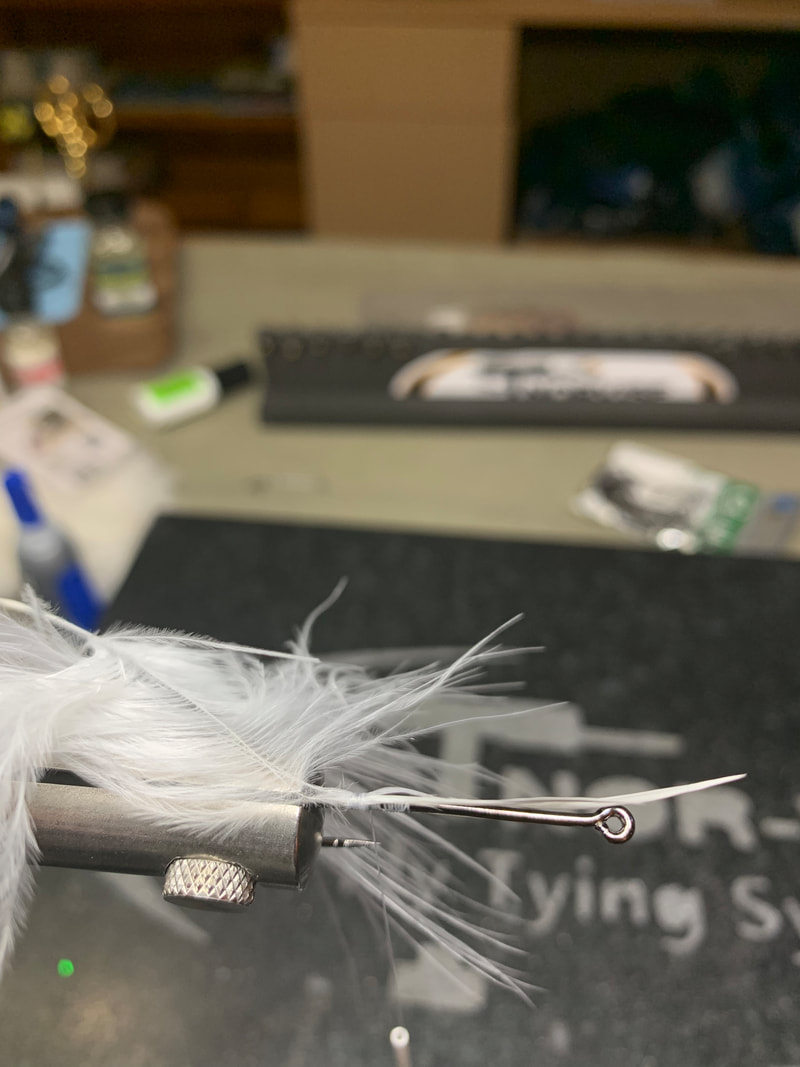 Tie both feathers in at the same time by the tip at the point where the thread ends right above the barb. Wrap 3 or 4 turns forward, Fold the tip back and wrap back over 3 or 4 tight turns back to front. This "fold in" method will keep the tips from pulling out while you are palmering the feathers forward. 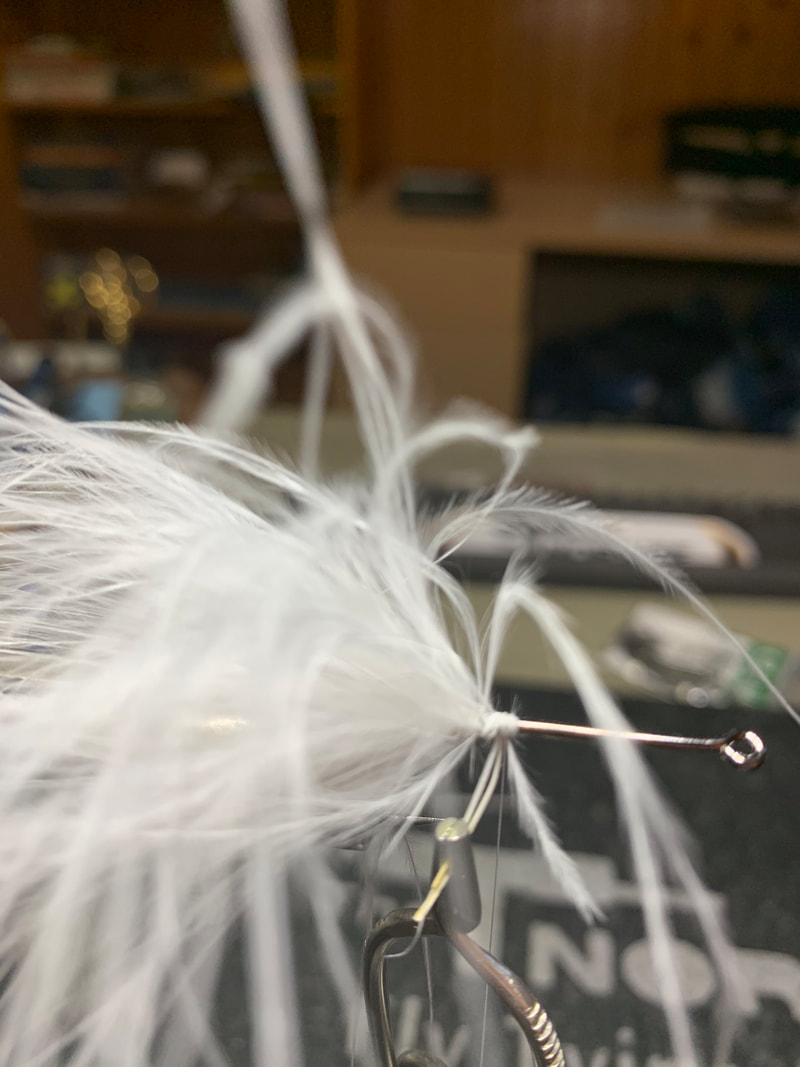 Advance the thread forward to just past the tie in point, half hitch and place the bobbin on the thread post. I like to grab the feather stems with a pair of hackle pliers. Now wrap the feathers forward (or spin your Norvise) taking care not to trap any of the feather under the stem. Once you have wrapped the whole 3/4 of an inch of feather tie off the bare stems with several tight wraps. 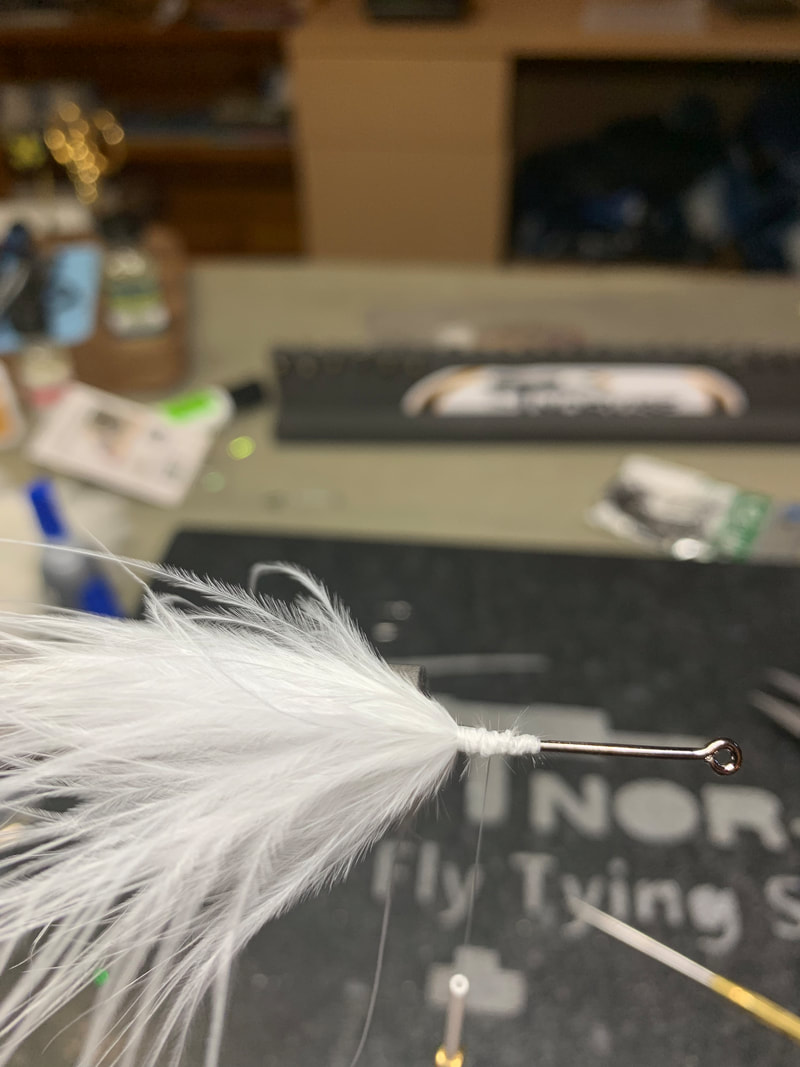 Marabou gets a bad rap in my opinion for not being durable, here is how to make it very strong. Use your bodkin or a tooth brush and stroke back all the marabou, Take care to make sure they are evenly distributed around the hook shank. Now, take your thread and COMPLETLY cover the stems with thread. A drop of Flex Cement here is a fantastic idea. By covering the stems you are protecting the weakest part of the tail. If the stems don't blow up, the tail will last a very long time. I have tales tied in this manner with well over 50 Pickerel landed and the tails look almost brand new. Remember, a Pickerel is a cousin of the Pike and Musky! 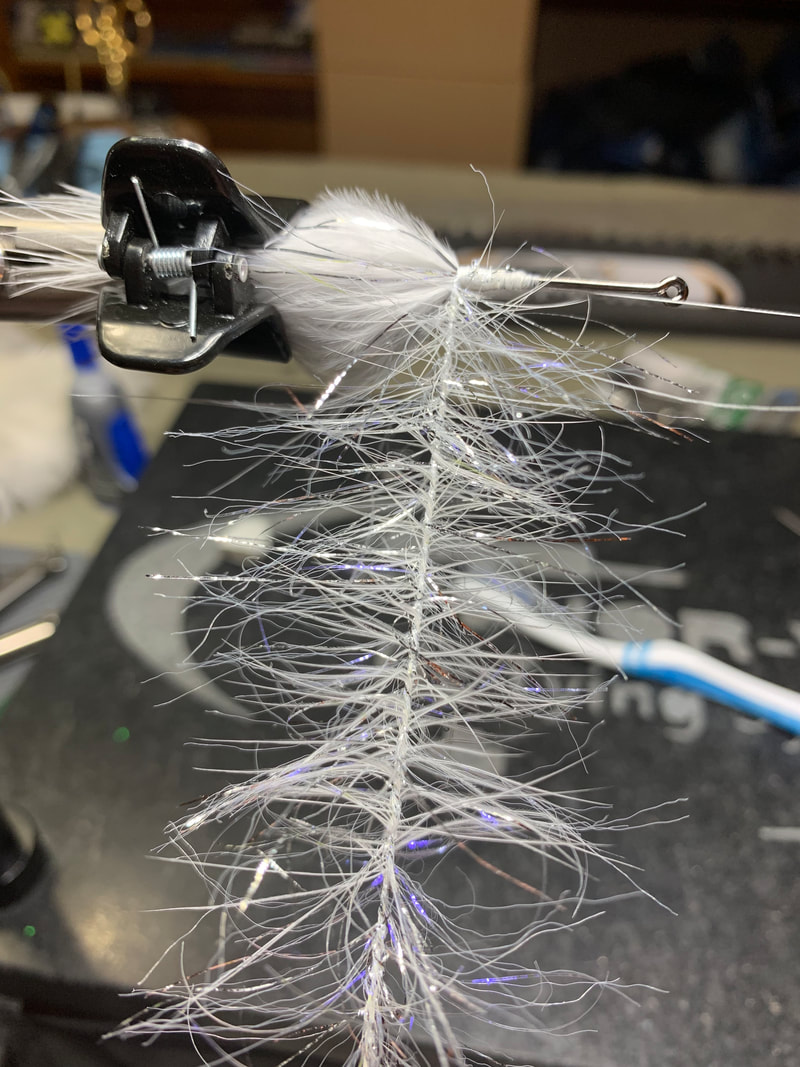 Now, hold the feather and the Polar Chenille together with a pair of hackle pliers at the base and spin them together. This will make a dubbing brush of sorts. This "Complex Twist" will blend the feather and the polar chenille together, it will also strengthen the feather by wrapping the core of the polar chenille around the feather stem again, protecting the weakest part of the brush. You will have to use a brush of your bodkin to pick out the fibers. Spin a little and brush, spin and brush, etc. Note; at the bottom there is a link to a video showing how to do this step by spinning your Norvise, it is pretty cool. 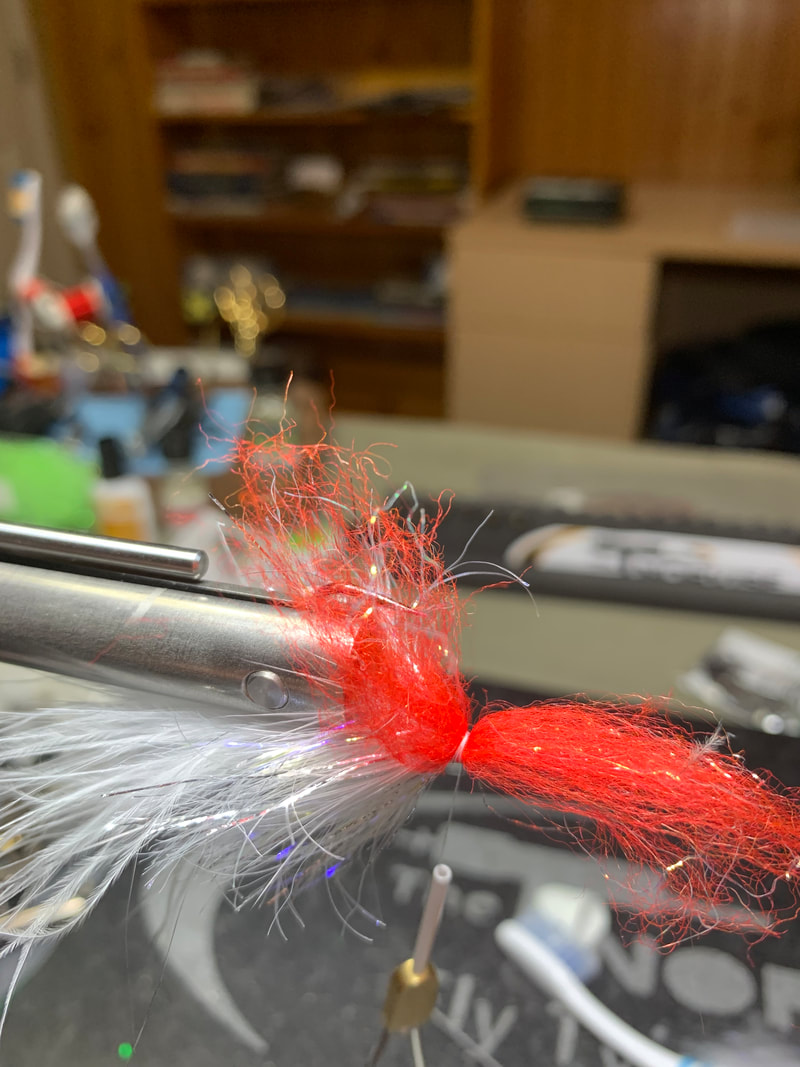 Now we are going top build the collar. We will use Senyo's laser dub, red on the bottom and white on the top. Select a small bit, about the thickness of a match stick. Align the the fibers and tie the clump to the hook in the middle. Make sure the material is distributed 180 degrees around the bottom of the hook. Repeat this step in the top with white laser dub. 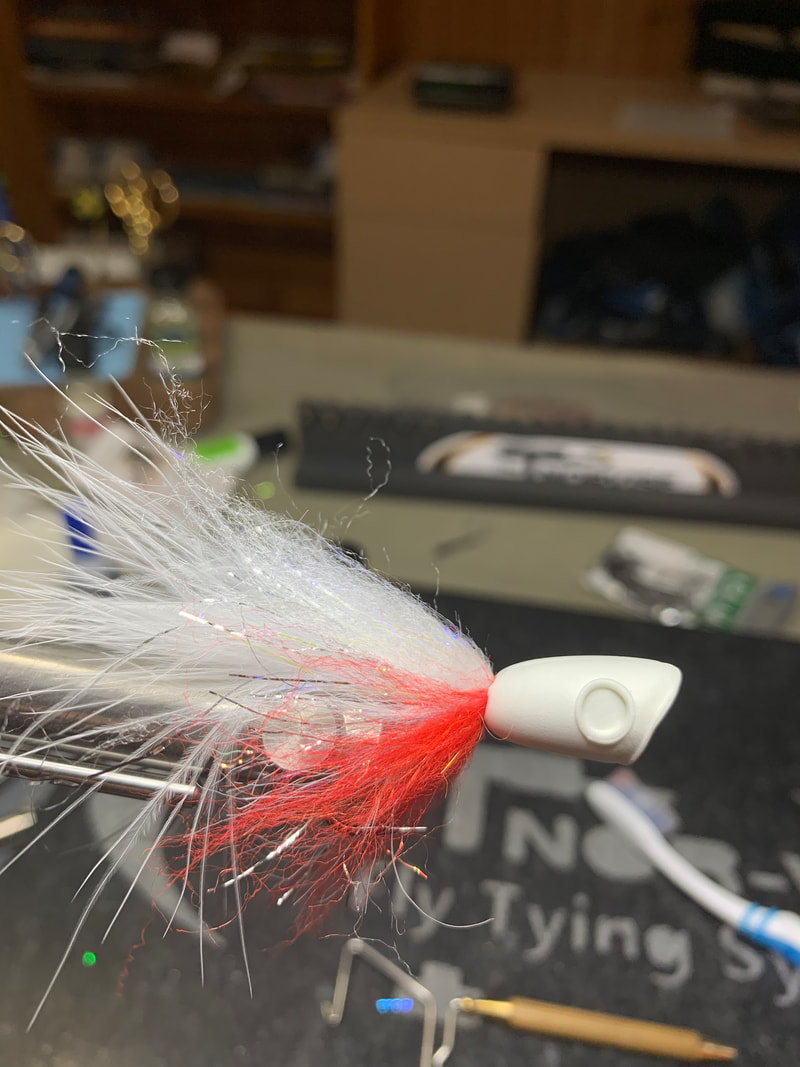 Cover the entire front of the hook with several layers of thread. This will give the glue something to grip on TEST FIT THE HEAD FIRST! once you are happy with it use ZAP-A-Gap to glue the head to the hook. Warning; you have 1 shot and about 7 seconds before the glue takes hold! Get the head on and situated quickly, if not you may be cutting a perfectly good popper head off and trying again! This is one of my favorite of my designs. I say "My" designs, The palmered tail I learned from Rich Strolis and the body I learned from Eric Snyder. Thanks guys for being part of a great pattern! Till next time...
Tight lines - Tim For a link to a quick video on how to do the complex twist using the Norvise, click HERE. As mentioned in my last post this fly has become a staple in my Smallmouth arsenal. It is a rare, very rare occasion that you will see me on a float with out this rigged on one of my three rods. My buddy Ed started using this pattern several years ago after talking to William Heresniak of Eastern Trophy Fly Fishing. This pattern comes form the mind of Chuck Craft, arguably one of the most accomplished Smallmouth fly anglers in the country. Crayfish patterns are kind of like Stonefly patterns in that it is hard to get the look you are going for without getting too detailed. This typically adds tying steps and time to the fly. When tying bottom crawling type flies you already know going in you are going to loose some. It is a tough pill to swallow when you take 30 / 45 minutes to tie a fly and than hang it on a rock and break it off 5 minutes after you tied it on. The Clawdad hits on all of the key features of an impressionistic Crayfish pattern, is relatively fast to tie, and just plain catches BIG smallmouth! Could this be the perfect Smallmouth fly? Check out the Step By Step below, tie up a few on your own and see for yourself. Recipe; Hook; Mustad R749672 2X heavy 4 XL signature hook (this is a size #4) Thread; Tyer's choice, color to match body (I am using Veevus 6/0) Eyes; Medium lead dumbbell eyes Body; Medium Chenille, color to match tail Claws; Eastern Trophy Fly Fishing Clawdad tail size to match hook, color to match fly Legs; Medium round rubber legs To purchase everything you need to tie click HERE I am using the Norvise Large Inline jaw and Norvise Magnum Hubs to tie this pattern. Disclaimer; I vary a little from the original dressing. This is a matter of personal preference in some of the things I like to see in the pattern and is not as any form of dis-respect to Chuck or William. I believe confidence in a fly is very important, while I dont think I have deviated much from the original, I do know if I like the way a fly looks I will fish it more effectively. In capable hands, both flies will produce equally as well. 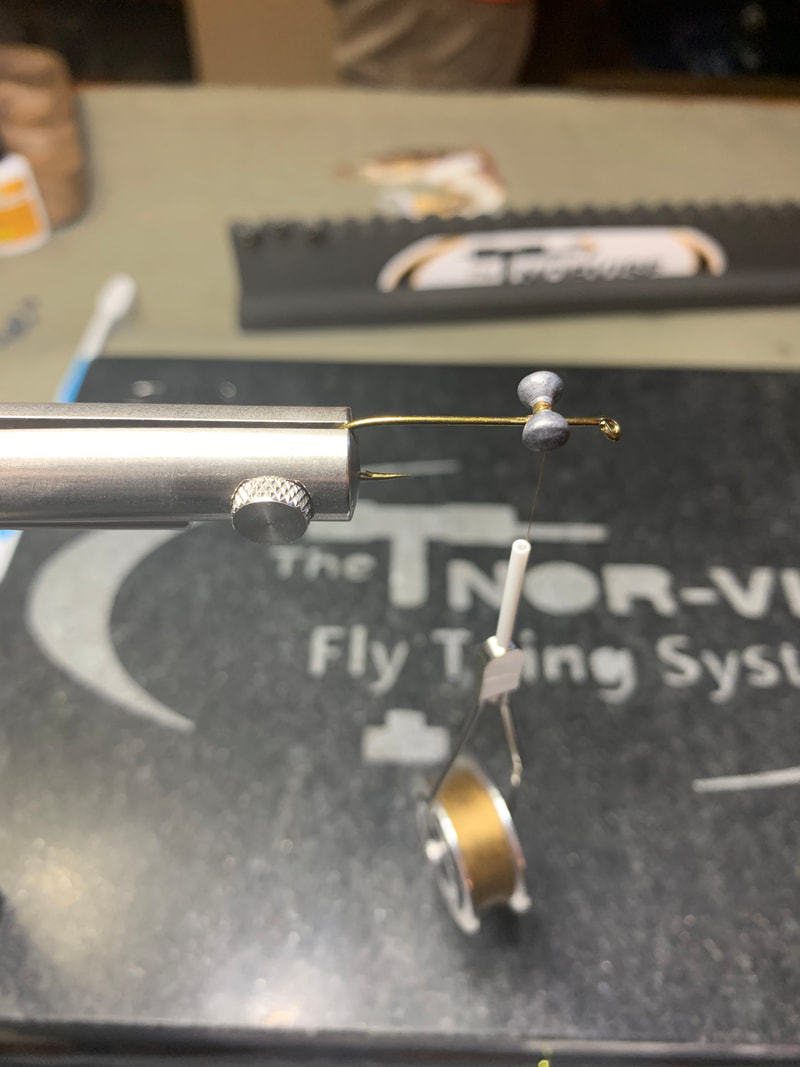 Next tie in a set of medium dumbbell eyes in the same fashion you would if you were tying a Clouser Minnow. Couple of tips; 1) you can use the black coated eyes or paint the eyes afterward to match the color of the body. 2) I will use the length of the dumbell to measure back from the hook eye to know where to tie them in. 3) ABSOLUTELY glue, epoxy or light cure the eyes after tying in. 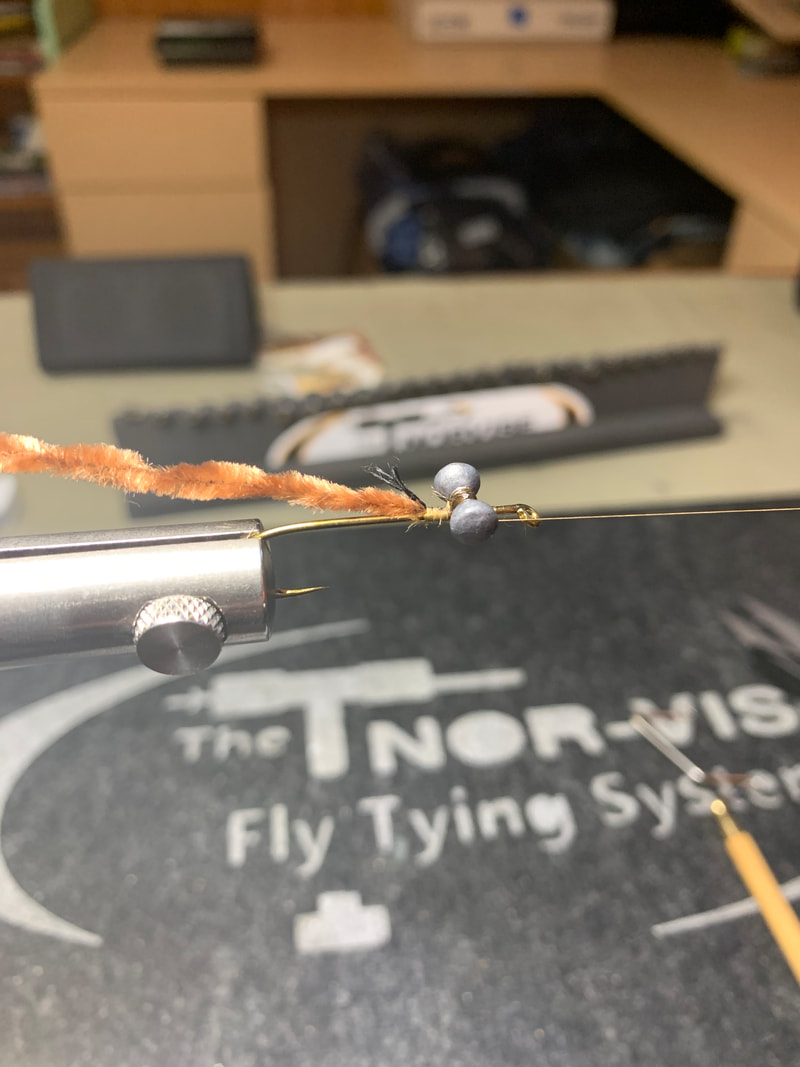 Strip the fuzzy part of the chenille off of the core and tie the core in right behind the eyes. Here I have "folded in the core". Folding in is where you tie the core down with several tight wraps, fold the tag end back over the thread wraps and wrap back over top of the core. Doing it this way makes it virtually impossible to pull out. 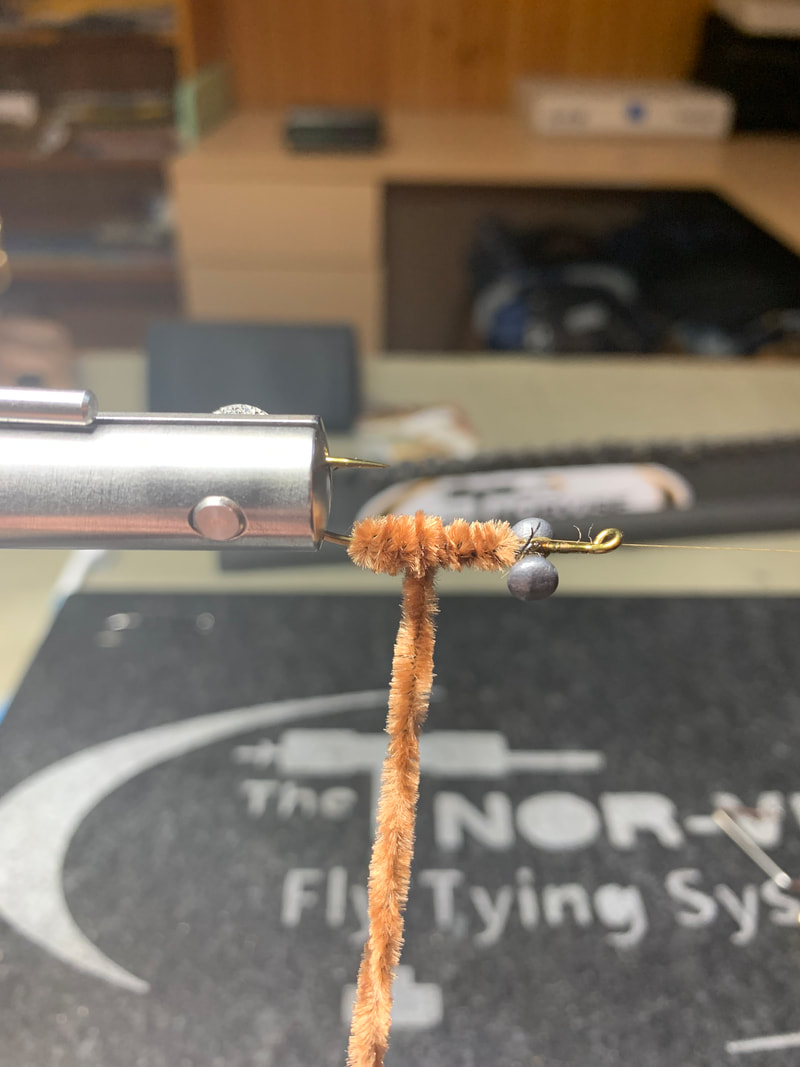 Here is the first tweak from the original. first lay down a little Flex Cement on the hook shank. Next wrap (or spin if using the Norvise) the chenille around the hook shank from the back of the eyes to just under the barb of the hook moving front to back. Next, wrap the chenille up on top of itself, making the body double thick, for 3 wraps moving back to front. Stop here. 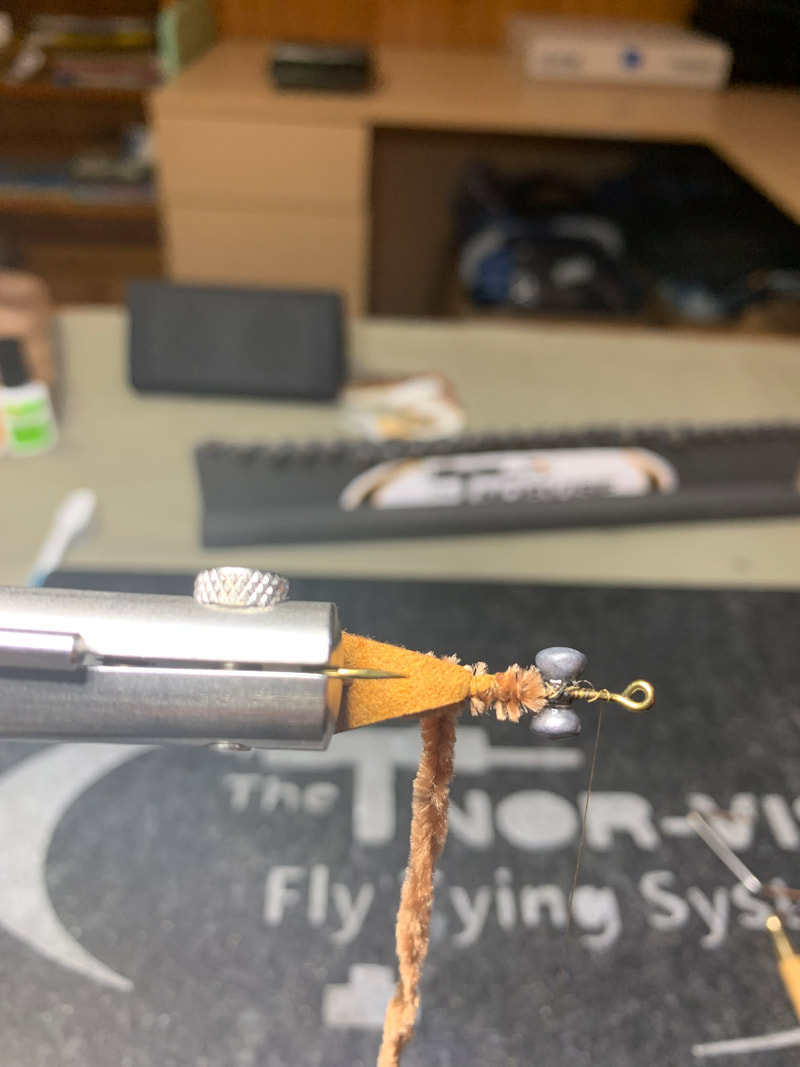 Wrap your thread back to the point where the chenille is hanging and secure it with several tight turns of thread. Carefully remove the fly from the jaws and put the tail on. The tails are pre punched with a hole and will easily slide over the hook point. Return the fly back to the vise. Position the tail so it is straight and on top of the chenille on the inside of the hook bend. secure the tag end of the tail with several thread wraps advancing the thread up to the eye of the hook. A Dab of Flex cement will do you well right where the tail meets the chenille. 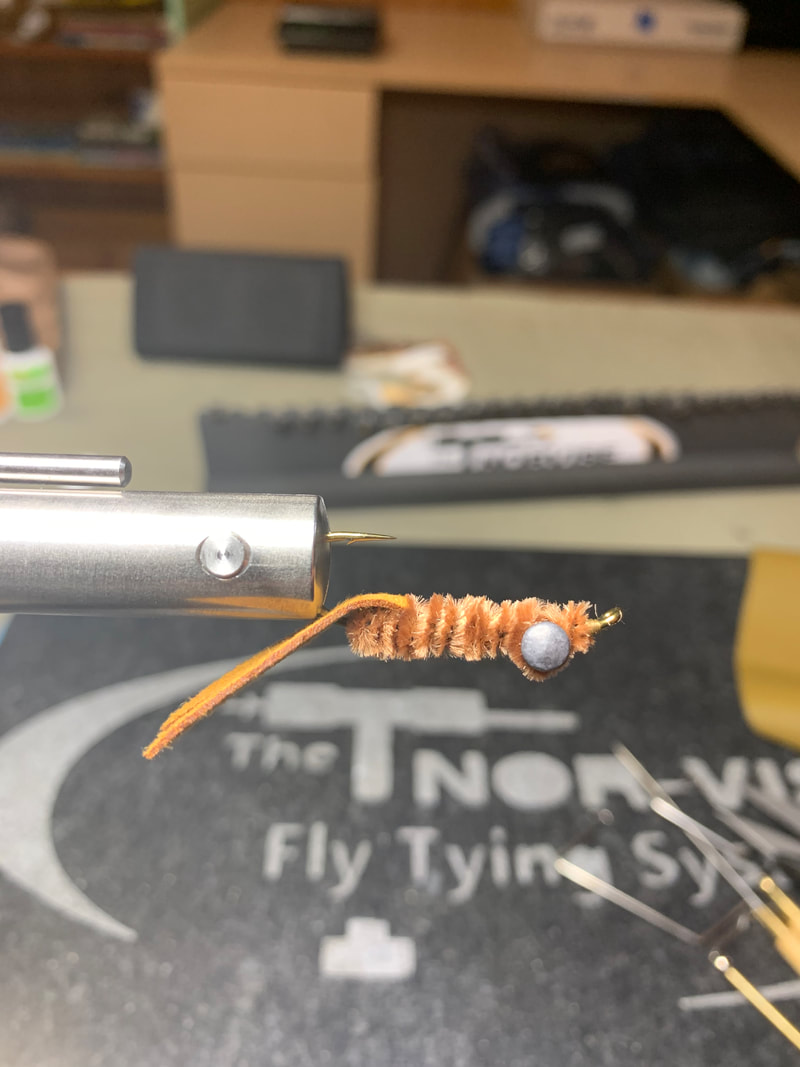 Now wrap the remaining chenille over the tag end of the tail and forward to the eye of the hook. Figure "8" around the dumbbell eyes to make sure they are covered. Tie off the chenille, clip and build a nice thread head. Clip your thread from the hook. You can see this double wrap technique gives a little fuller body, it also acts as a support for the tail and will keep it from sliding around the bend of the hook. I believe the fly swims better this way. To fish the fly I like to throw it on an intermediate or a sink tip line on a short (4' max) 12# leader. Use a non slip mono loop to connect the fly, this will allow the fly to move and the action won't be effected by the heavy tippet. Cast out, let it sink and crawl or hop it back. 2016 was the best year I can remember in 30+ years of fishing our Smallmouth rivers. Myself and Ed landed well over 2 dozen fish that year over 18", several were over 20 and my personal best ever on a fly a true "blackjack" pictured below. ALL of these were landed on the Clawdad! Till next time...
Tight lines - Tim Most of my friends locally that know me know that I am a self proclaimed Smallmouth nut! They are my favorite fish and they are tailor made for fly fishing. Myself, Tyler and my friends spend many hours chasing Smallies each Summer. We have our rods, reels, and watercraft dialed in. We each carry several rods with different lines so we can cover the entire water column from top to bottom and we are very familiar with the rivers that we float. What does all of this mean? Well, we are fortunate enough to land several 18 to 20 inch Smallmouth each year. Our Smallmouth game is tight, and we take pride in that. I always say if you were to look into my working fly boxes you would probably be extremely underwhelmed. You may expect to see box after box with hundreds of different patterns in every color under the rainbow. While I do love tying flies, I love catching fish even more. and when I am all on the water it is all about the fish and catching them! While we are constantly experimenting, tweaking, and coming up with some new patterns. What follows are my core 5 Smallmouth flies. I call these "American Express Flies' because you don't leave home without them (you will have to be over 40 to get that reference) and you can bet if you see me on the river one (or 3) of these will be tied on my tippet. We are full into summer fishing right now (the heat index is 108 as I type this) so I thought for the next couple of blog posts I could do a series of my 5 favorite Smallmouth patterns followed by a step-by-step tutorial in the coming weeks of each pattern. If you are a Smallmouth Junkie like me this is a great opportunity to fill your boxes with some proven producers. Here we go... The ClawdadIf you told me I could only ever fish one fly for Smallmouth this may be the one. This fly has accounted for more 20+" fish in the last 8 years than any other fly I fish. Spawned from the mind of Chuck Craft and available through William Heresnaik in materials or whole at Eastern Trophies Fly Fishing this could possibly be the perfect Smallmouth fly. I typically ALWAYS have one of these rigged and fish it on the bottom on an intermediate or sinking line. Brown (or moccasin) is my go to color, we have also done well on olive and black. I tie mine a little bit different than the original dressing, just a few little tweaks. They probably don't really help and the original is probably best left alone. Fishing is 90% confidence and if I feel more confident in the pattern, I am going to fish it more effectively. PoppersAny Serious Smallmouth angler worth his salt loves fishing poppers. The fishing is very visual and the takes can be explosive. We have used several popper styles over the years, some tied and some purchased. we have settled on these 2 as our favorites. The Boogle Bug. A friend from Virginia turned me on to these several years ago. We got to talking about Smallmouth fishing and he said in his Virginian accent "you ever fish Boogles"? You have to say with the accent or it kind of looses the presentation. I had no idea what he was talking about. Boogles are a hard face popper tied with a hackle skirt and rubber legs. They are very durable and catch a ton of fish. The one thing I noticed is the hard face poppers, especially the Boogles have a higher pitch pop when you strip them. Something I believe the fish really key on at times. If interested check them out here. A few years ago the Flymen company came out with the Double Barrel popper heads. As soon as I saw them I knew I had to try them. The dual sound chambers and the semi-soft popping face gave us a sound that was very familiar. Remember the old Arbogast Hula Popper? The big gaudy, weird looking Bass hard bait? We fished these all the time as kids and they produced a deep, hollow pop it seemed the fish couldn't resist. Well, the Flymen Double Barrel popping heads come the closest to reproducing that sound. We quickly put these heads into some of our current designs (both mine and some of my friends) and the results have been fantastic. O'Neill's Controlled ChaosThis type of fly is really more of a tying style rather than a pattern. Mike Schultz of Schultz Outfitters came up with a great pattern Called a Swinging D. This was the first time I saw a foam popper head turned around backwards to create a diver type of fly. The Swinging D is a GREAT fly, it takes a long time to tie with a lot of steps. Many people, including me, have taken Mike's pattern and tweaked it a bit for various reasons, for me it was strictly tying time. This is probably my favorite pattern in the bunch and, like the Clawdad you will be hard pressed to see me without one if these rigged up. Throw this on an intermediate or a type 2 sink tip on a short leader. The foam head want's to naturally float the fly up and the sink tip wants to pull it down. This self imposed Tug -of War creates an action that is incredible! This pattern is ever changing and here are a few of the variations I have used over the past few years. I am currently working on a all Synthetic version of the fly using some of the great new brushes that have hit the market recently. Like I said, this is more of a basic platform pattern so have fun with it. The Feather Game ChangerAbout 8 years ago a fly hit the market that was truly a revolution in the fly tying world. Blane Chocklett's Game Changer is truly an innovation in the fly tying world. More of a platform for tying multiple patterns the Game changer is available in many variations today. My favorite is the Feather Game Changer. MUCH faster to tie that the original (not fast mind you, they still take 45+ minutes to tie) the best thing about this version is the taper is in the materials, there is little to no trimming. Now you are seeing variations with spun deer hair heads, popper heads and the like making this pattern very versatile. Check out one of the great videos on how to tie this great pattern by searching Feather Game Changer. Shumaker's Shimmering MinnowBrian Shumaker is one of the premier guides on Pennsylvania's Susquehanna River. You may have heard of the Susquehanna before as it is where the famous Clouser Minnow was born. The Shimmering Minnow is a bit of a wide body baitfish pattern, a perfect match for the juvenile Shad the Bass in my area enjoy. Easy to tie and fishy as any fly out there it is easy to see why this pattern has become a staple in my buddy Ed's Fly box. You can tie this in Multiple colors, we prefer the pearl / grey version. To date I believe the shimmering Minnow has landed something like 40 different species from Smallmouth on the Susquehanna to Steelhead in Erie, it is just a great all around fly. Well, there you have it, my top 5 Smallmouth flies. Stay tuned in the coming weeks for tutorials on how to tie all of these great patterns. Till next time...
Tight lines - Tim Check out the summary of Norvise Ambassador Mike Corrigan's recent trip to western Manitoba to chase this great species, the Tiger Trout. Where I live in the central part of Canada, we are blessed with a seemingly endless number of species that can be caught on a fly. Two years ago I landed 20 different freshwater species locally (to go with an additional 10 saltwater varieties). Spring 2019 is late in Canada this year, most spawners are still "busy" as I write. The Pike are a few weeks late and the Smallies are still on their nests. So, for an early season fix we headed off to the western part of Manitoba for one of my favorite species to target; the beautiful Tiger Trout. Tigers are a sterile hybrid, a cross between a Brook Trout and a Brown Trout. The province of Manitoba introduced Tigers to a lake 10-15 years ago and they have been a favorite for anglers from all over Canada and the USA. As seen in the pictures below. they have a vermiculited camo back and the white tipped fins of the Brookie. In the Fall they go through a mock spawn and get the orange bellies. Tigers grow quickly and reach an incredible 28"; my largest is 24". Tigers are incredible fighters and the best part......they take top water flies! I fished with a relative newbie on this particular trip, who had never landed a Trout on a fly before. We also entered something called the Bug Chucker Cup; an annual 4 lake tournament based out of the town of Roblin, MB. Back in January 2019 we hatched a plan, during a -40C cold spell, in Winnipeg to enter the fun event. As I mentioned the season was late and we were hoping for the best....... I still use my river boat for the lakes, powered by a 55 Minn Kota. The flat bottom and spacious interior make for a comfortable day. We fished 4 different lakes on the trip, with the Tigers being our main focus. On day one my partner got into his first fish and literally had his new Orvis rod almost ripped from his hands. These are very strong and very aggressive fish. We both missed fish that day, and the Tigers won round #1. We fished a lake nearby to our hotel the next morning before setting out to try round #2 with the Tigers. (Below are a few shots of the Rainbow and Brown Trout typical of the other lakes). Arriving at the Tiger Trout launch at 6 pm we saw a still water fishing school just finishing up. After comparing notes, we targeted a portion of the lake the group had not tried. This time of year the sun is up until 10 or 11 pm, so we had lots of daylight ahead of us. Tigers, with their Brown trout genes, become less wary as the sun gets lower in the sky. They will hit most anything that is thrown within the ring of their rise; so that was to be the game. Find a rise, find a feeding fish! We both had my Foam Mouse on (Topo Gigio, for those old enough to remember the Ed Sullivan show). You can see the evidence in the corner of the Tigers mouth. We landed several fish to 19". So, the day came for the tournament. Our first venue would be an afternoon session, on a Brown Trout lake which we had pre fished the day before and had caught 6 fish to 20". This day, however, we would be shut out! The second venue saw us back at the Tiger lake for the evening session, which was perfect. Without hesitation we tied on Topo Gigio! My partner landed an 18" Tiger and I a 22" beauty. After day #1 we were near, or at the top, of the leader board! Day #2 was spent on two Rainbow/Brown Trout lakes and we ended up doing a lot of casting but no catching. The fish were deep because of the cooler waters. As a note, earlier in our pre fishing time period we woke up to ice in my boat, after an evening rain storm, to start one of the days.......ice in late May! The post tournament banquet and social was first class. A total of 13 teams were entered in the tournament and we finished out of the top 3, but my partner did get his casting tuned up and he did land fish, so all in all a very successful outing. Thanks to Roger for his camera work! So all in all we came, we saw, and we tamed the Tigers. Now we need some heat to get the Muskies to get their spawning done. It will be season opener in a week. On to the next species...... Mike Corrigan What a great story and even better pictures! Thank you Mike for sharing this with us. Till next time... Tight Lines - Tim This week I wanted to take a minute to introduce you to one of our Norvise ambassadors and all around great guy Jacob Nixon. Jacob is becoming a staple in the fly fishing community in and around the Richmond Virginia area. Aside from earning a PHD in Otology (the study of the anatomy and diseases of the ear) Jacob was instrumental in starting RVA Bugs and Brews, a monthly gathering of local fly tiers and gear heads at Legends Brewing Company located in down town Richmond. These gatherings are really starting to attract a crowd each month, I am hopeful to attend one of these meetings very soon. Another cool thing he has done is started the "Geek on the Water" You Tube Channel. I have spent some time here recently and the content he is putting up is fantastic. Many Fly Fishers, especially salt water fishers, will appreciate the $20.00 dollar stripping basket video. Below are 3 short videos (full length versions are available on the channel) of three things that very much interest me. Check em out. Wild BrookiesI LOVE chasing wild Brook Trout on the fly. There is just something simple and elegant about a small stream set up, hip waders and a small box of dry flies. What wild Brookies lack in size (a typical fish is less than 7" long) they more than make up for in beauty. If you have never spent a day on a Brookie stream make sure you put it in your plans soon, you will be glad you did! Shad on the FlyAs many of you already know chasing Shad on the fly is one of my favorite things to do. We are fortunate to receive 2 prolific Shad runs in my area of Northern Delaware each spring. You may have seen my presentation "Shad Fishing 101" at one of the local clubs or at the "Fly Fishing Show" in Lancaster or Somerset. You may have even purchased some of my Shad patterns at one of the fly shops in your area. As good as the Shad fishing in Delaware is the Richmond, VA area may be the Shad Capitol of the USA! Below is a short of fly fishing for Shad on the James River. Snakehead on the flyThe Northern Snakehead is probably one of the most mis-understood fish on the planet in my opinion. Years ago you would hear horror stories of these fish decimating ponds and drainage areas and moving on to the next. "They are an invasive species kill everyone you catch" etc. etc. While I am no biologist and while there may be some truth to some of the statements of the past I do know a few things. 1) Largemouth Bass and Brown trout were once consider "invasive species". That seemed to work out pretty well...2) Snakeheads are one of the coolest looking fish that swim, and 3) any fish with teeth that will readily take a fly has my attention. While I have yet to catch one (Jacob, maybe you can help with this) I really want to! Check the video below to see one of the coolest fish you can chase on the fly! As you can see Jacob is the real deal and we are proud to have him on our ambassador staff. Jacob has a goal to reach 1000 subscribers on his You Tube channel by the end of the year. Lets help him out and subscribe to his channel, the information is sound, the videos are great and you will definitely learn a thing or two. Check out Geek on the Water. Till next time...
Tight Lines - Tim O'Neill' Bearded Dragon Fly Here at Norvise we always get excited each year when all of the new tying materials come out. We always wonder what new products we can work into our existing patterns or, a totally new pattern may emerge. The Bearded Dragon is a great example of new materials and new techniques coming together to make a functional pattern. This fly is one of Tyler's creations and it fills just about all of the O'Neill criteria for a successful pattern. It can be tied in multiple sizes and colors, it can be tied rather quickly, it can be used on many different species and will work equally well in fresh and salt water. We are full on into our Smallmouth Bass season and this little (or BIG) fly packs quite a punch, responsible for many landed Smallmouth, Largemouth and Striper so far this summer. Check out the O'Neill's Bearded Dragon and tie a few up. When you see them in the water you will be glad you did. Till next time... Tight Lines - Tim Recipe: Hook: Ahrex TP610 2/0 Tail: Magnum's Mini Dragon tail Rear Body: 3" RD Fly Fishing Polar fiber Brush, 3 wraps Middle Body: Blane Chocklett's Filler Flash Front Body: 3" RD Fly Fishing Polar fiber brush, 4 wraps Collar: Senyo' Laser Dub Head: Flymen Fish Mask (appropriate size for pattern) Eyes: Flymen Living Eyes (Appropriate size for Mask) After clamping the hook in the jaws and "spinning" on a thread base use some 20# mono to form a loop at the bend of the hook. This is to prevent the tail from fouling around the hook shank while casting. The loop should extend back past the entire bend of the hook. This one should be a bit longer. Also notice, beings this is a 2/0 hook Tyler is using his Norvise Large Inline Jaws for this tie. Tie in the Dragon Tail. It may be a good idea to lay down a little Flex Cement on the hook shank / thread wraps prior to tying down the tail. Also, you may want to dab the tip of the tail with a little Flex as well to prevent it from fraying. For the rear body, apply 3 wraps of RD Fly Fishing's 3"Polar fiber brush, stroking backward each wrap For the mid body, wrap roughly 3/4" of the shank with Blane Chocklett's Filler Flash. Filer Flash is one of our favorite new products. It is a great way to build bulk under the body material and gives the fly just the right amount of flash showing through. This is what the Body will look like after the Filler Flash is tied off. For the front of the body, add 4 more wraps of the 3"polar fiber brush, stroking back each time. We are trying the get the Craft Fur Brush to "veil" over the Filler Flash. The flash will help support the Craft Fur giving the illusion of bulk without adding actual weight to the fly. This is a great technique to build "shoulders" into your pattern. At this point, Sadie, the Norvise Chocolate Lab approves so we can continue. Finish off the body with a Senyo's Laser Dub Collar. Use the hi tie technique for this. We will will typically do one clump on the top and one clump on the bottom of the hook. Here we have used all red, more often we will use 2 colors to give a little contrast to the pattern. Example; when we do a collar on all of our Bleeding Shad series of flies the top will be white or grey laser dub and the bottom will be red. After applying the Flymen Fish mask and the Living eyes you are ready to fish! They always say the "proof is in the pudding" well, first time out with the Bearded Dragon, third cast....
|
Archives
June 2024
Categories
All
|

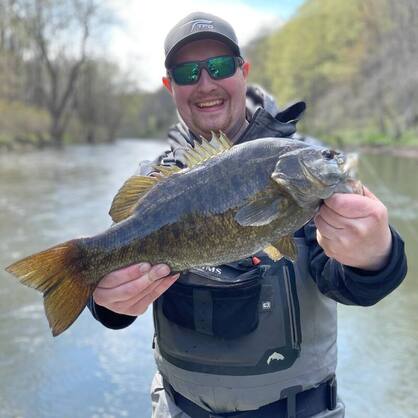
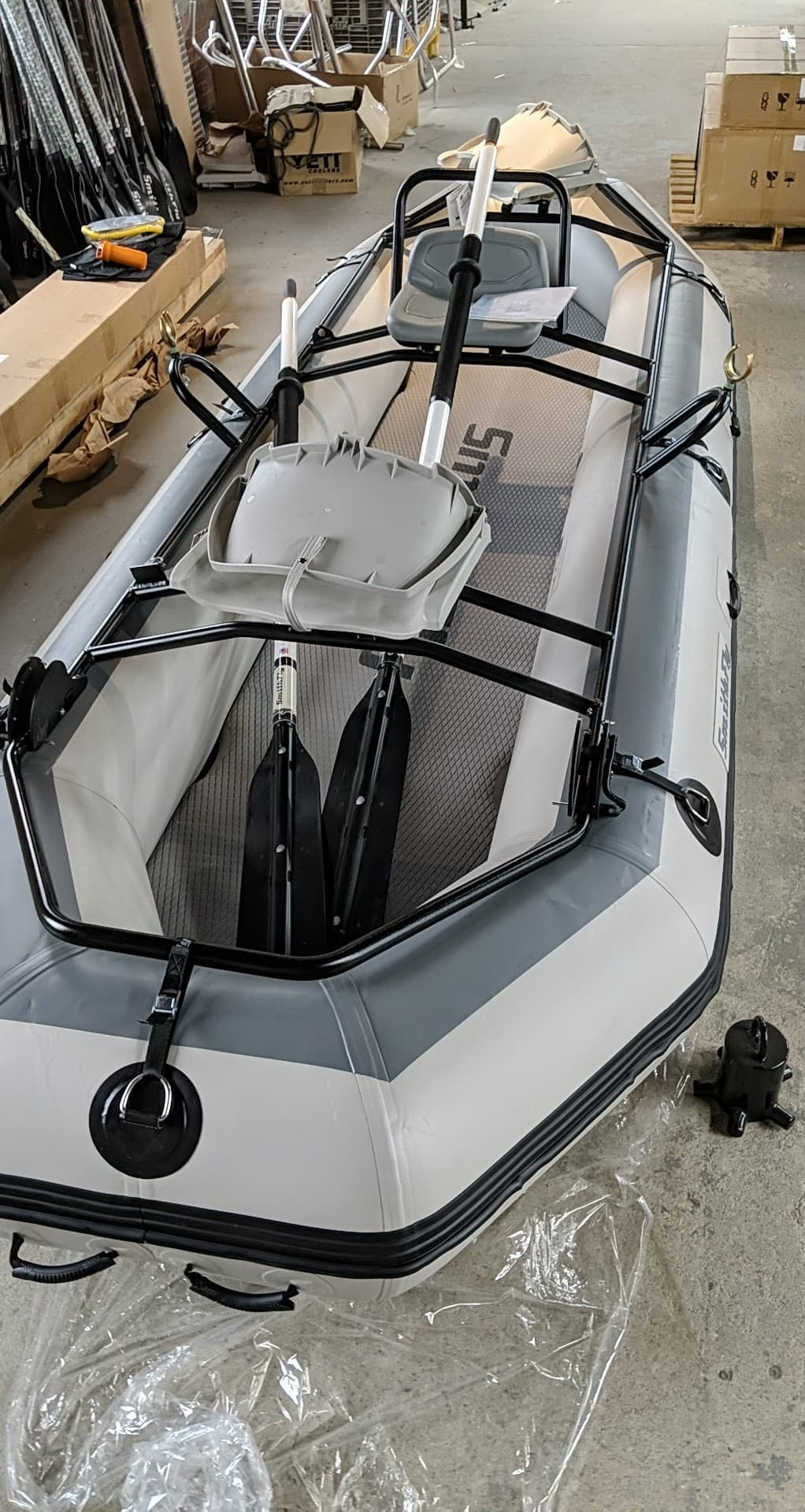
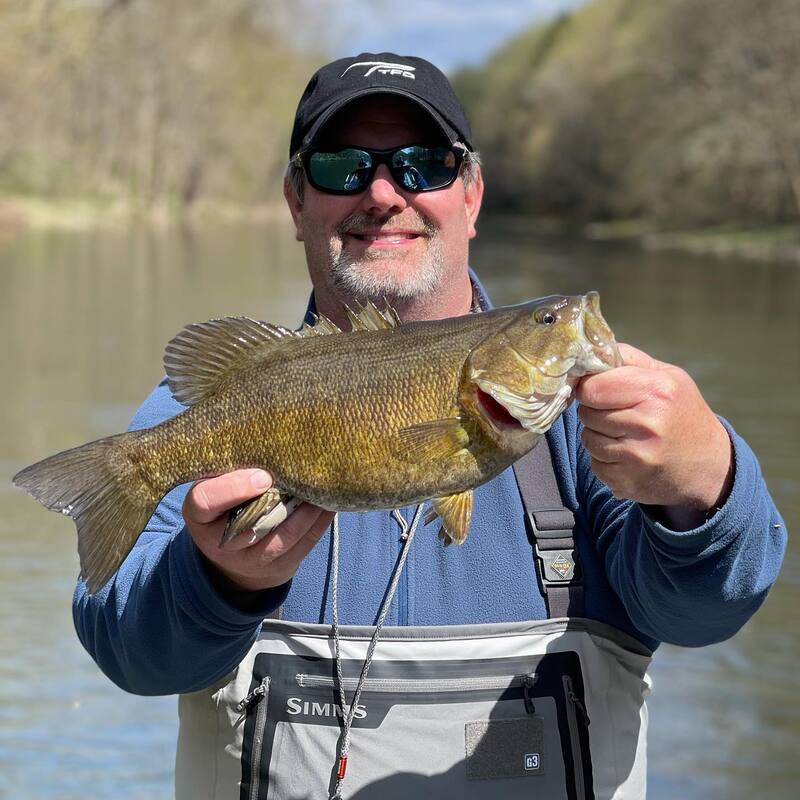
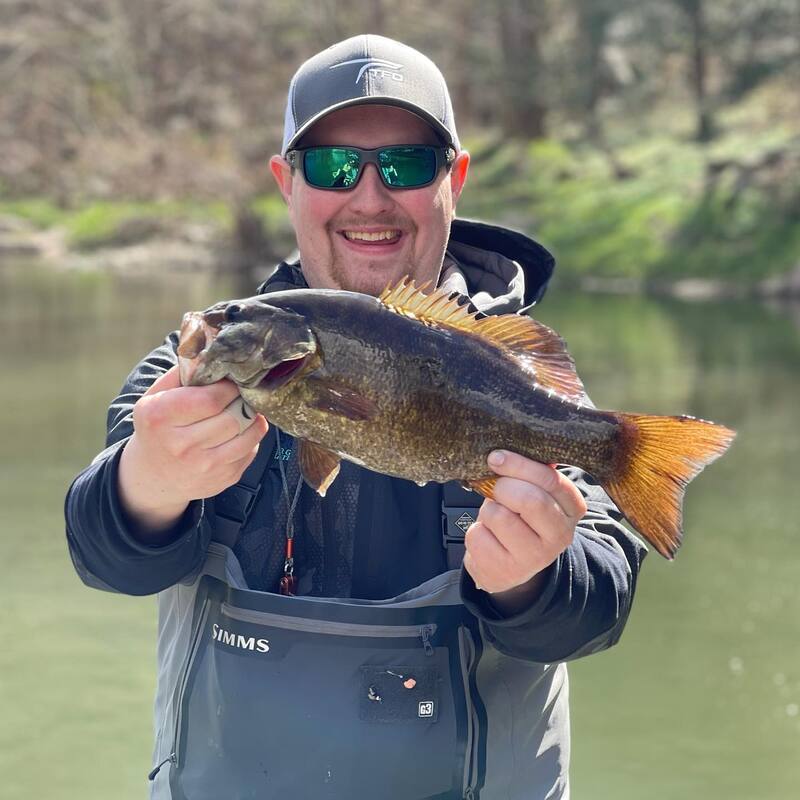
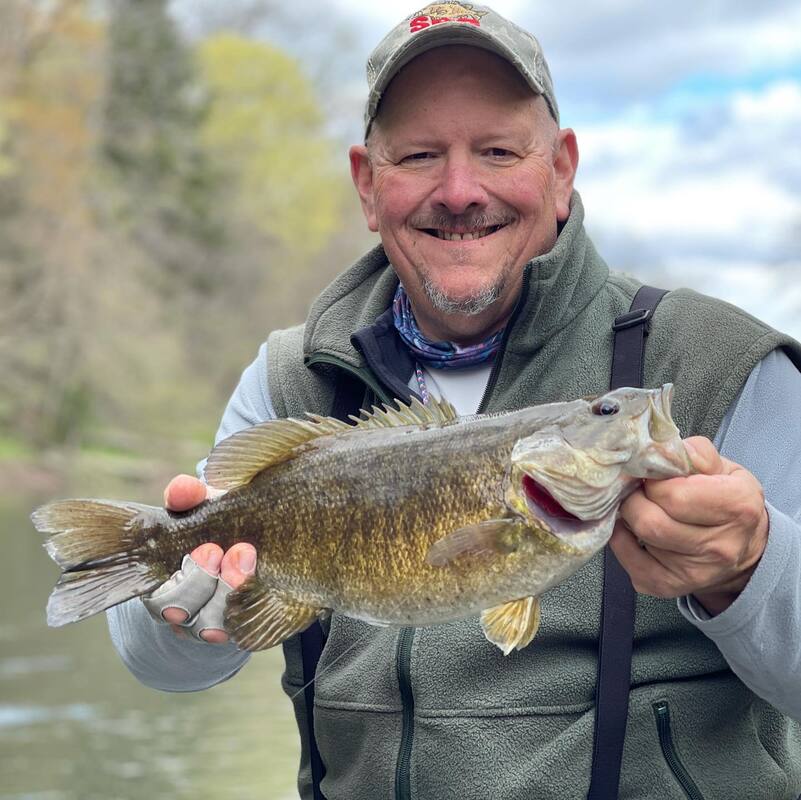
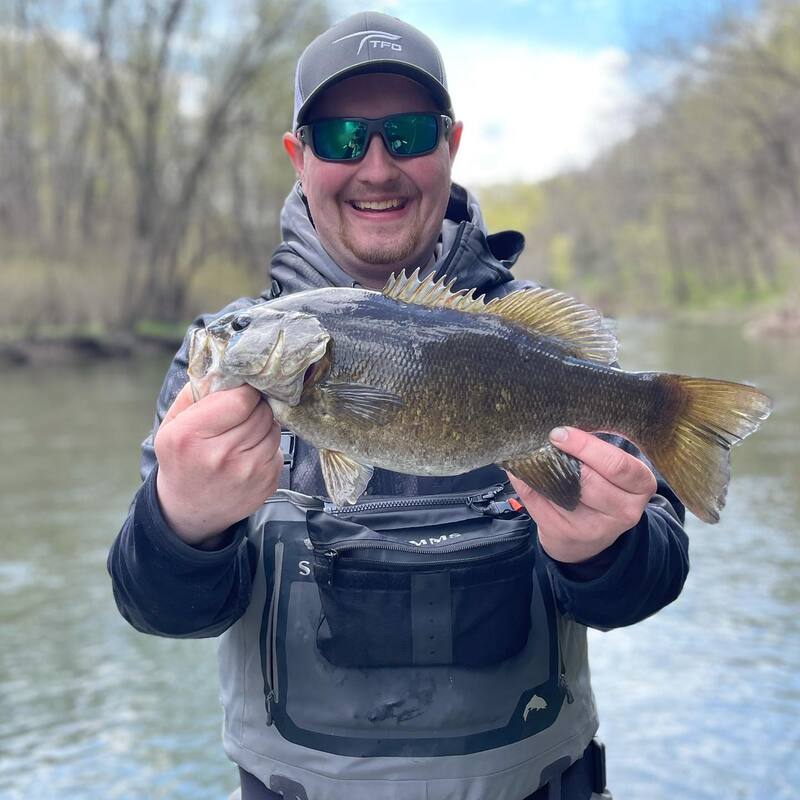
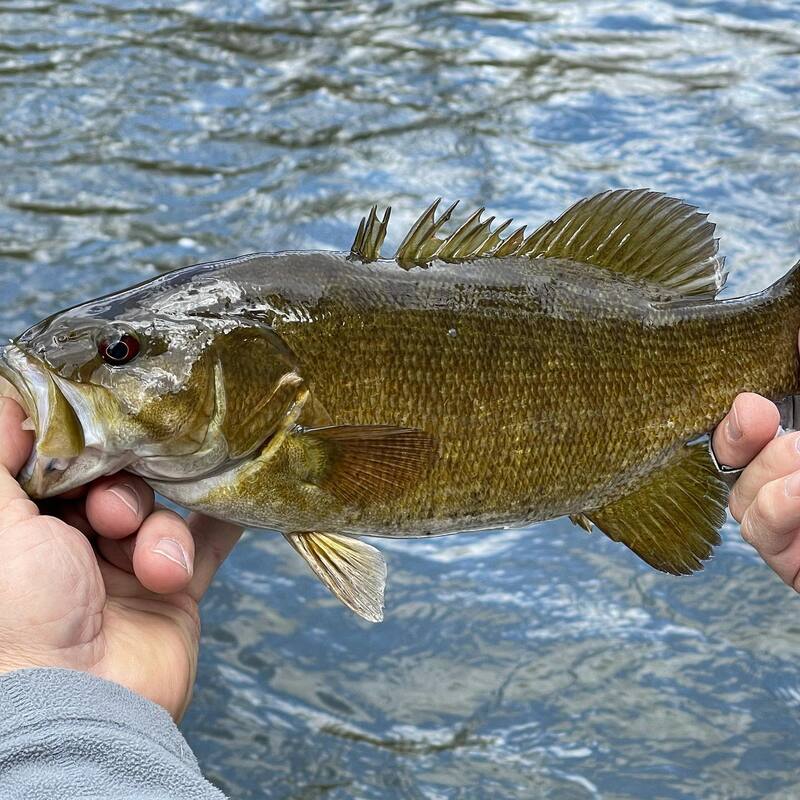
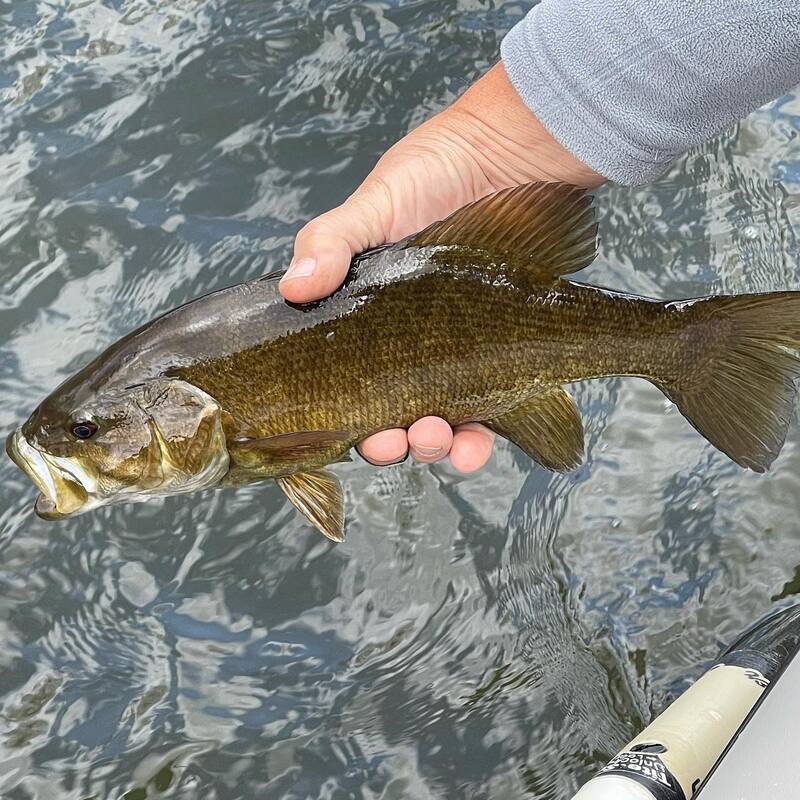
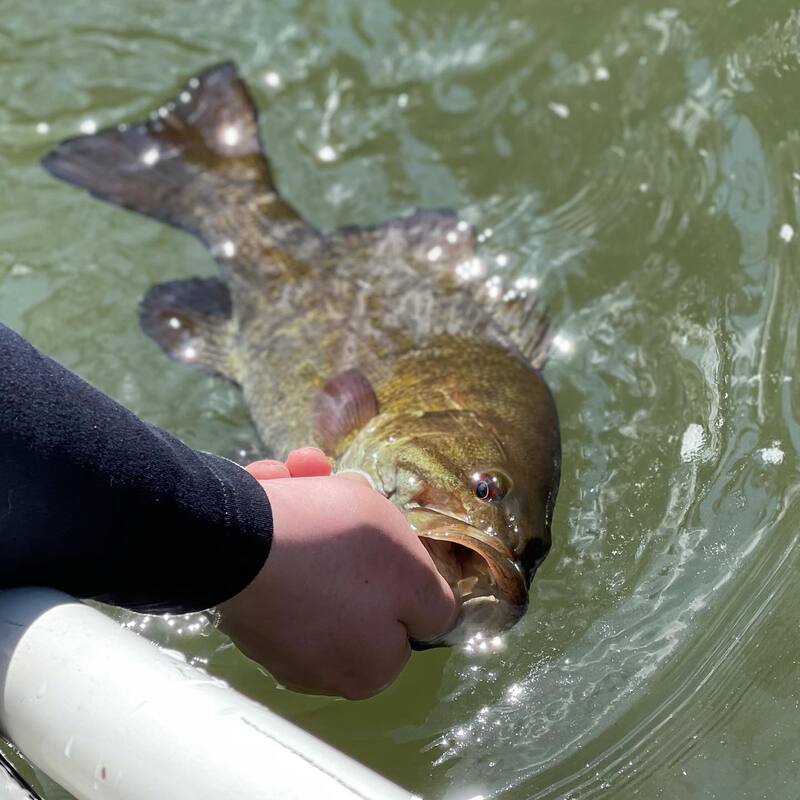
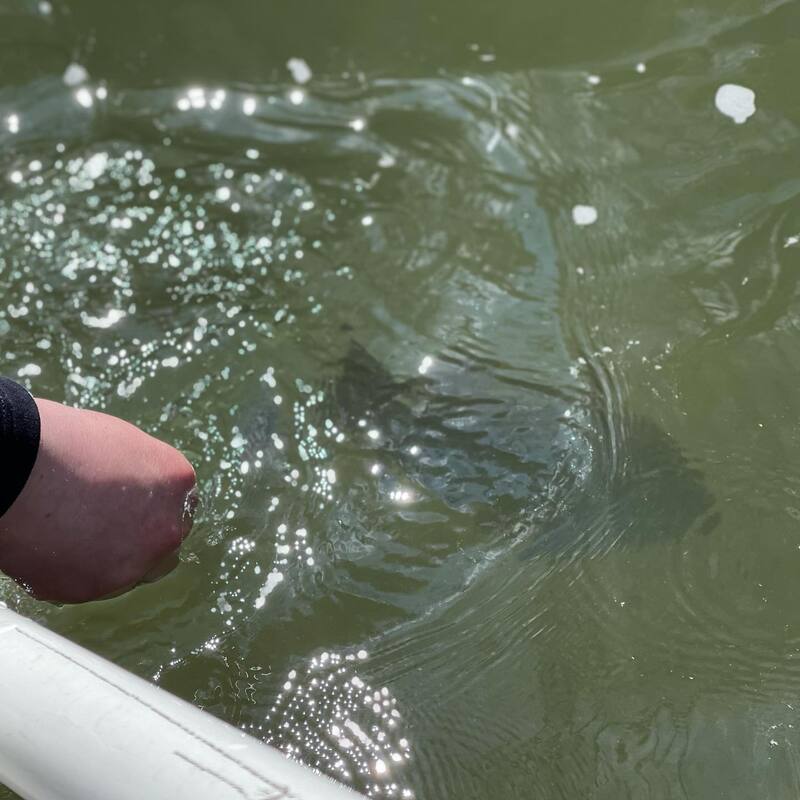
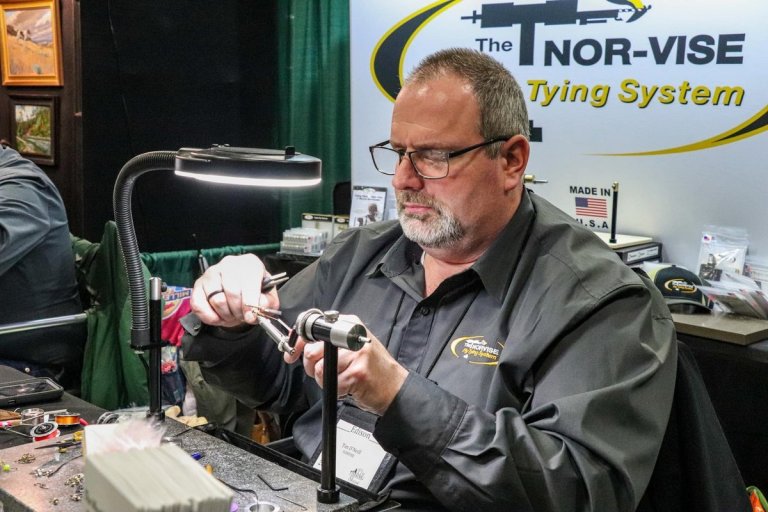
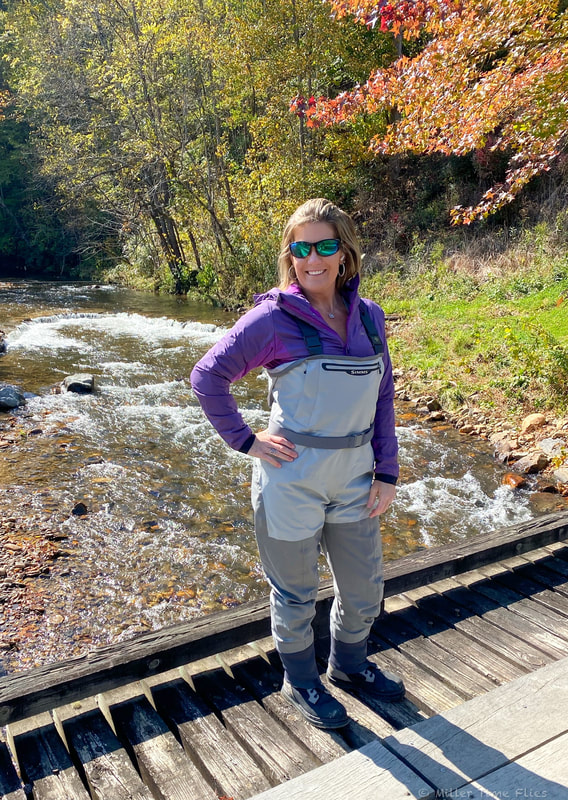
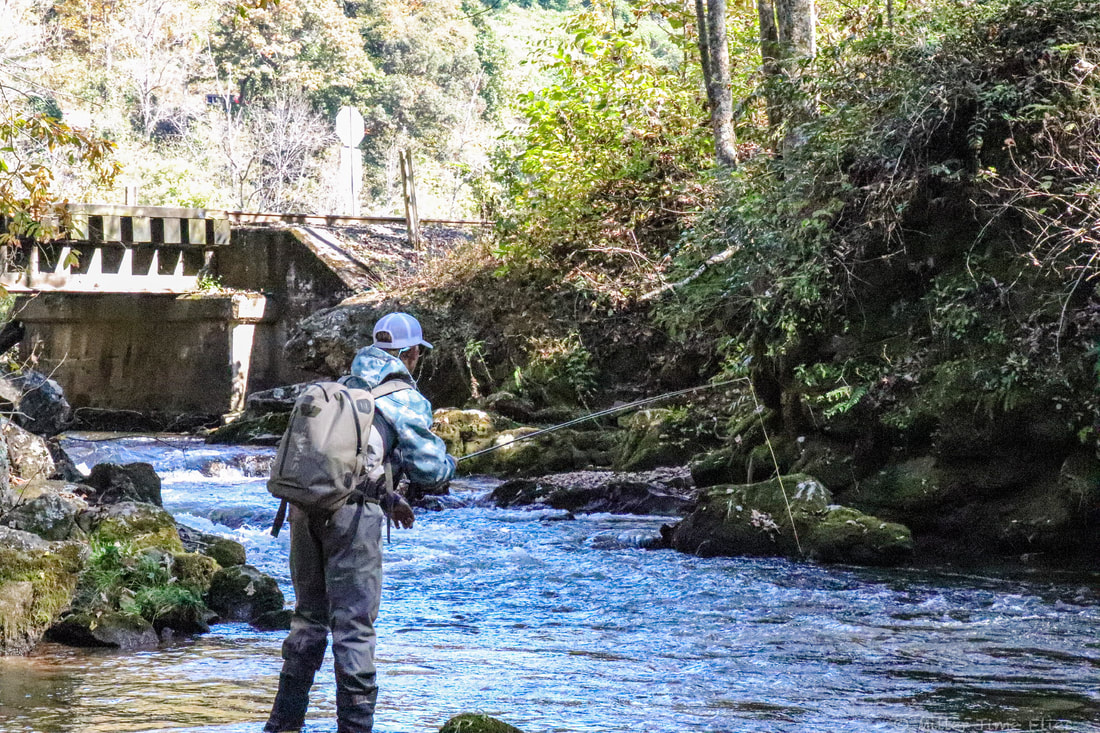
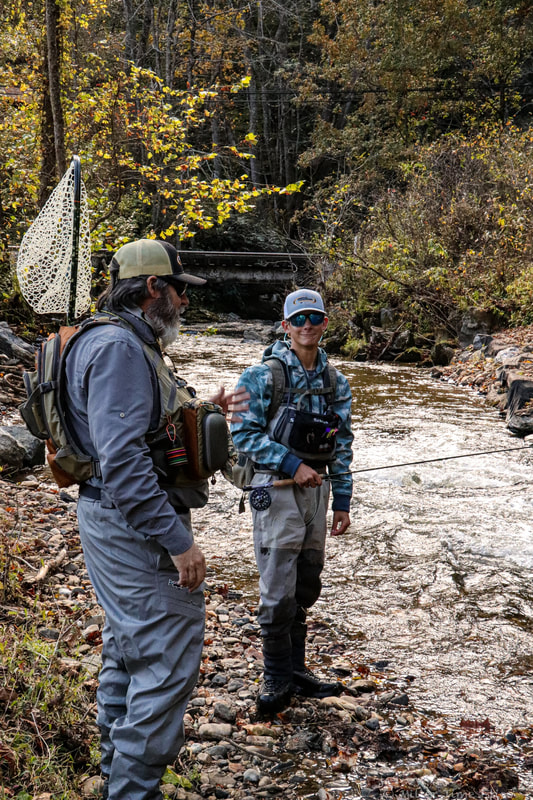
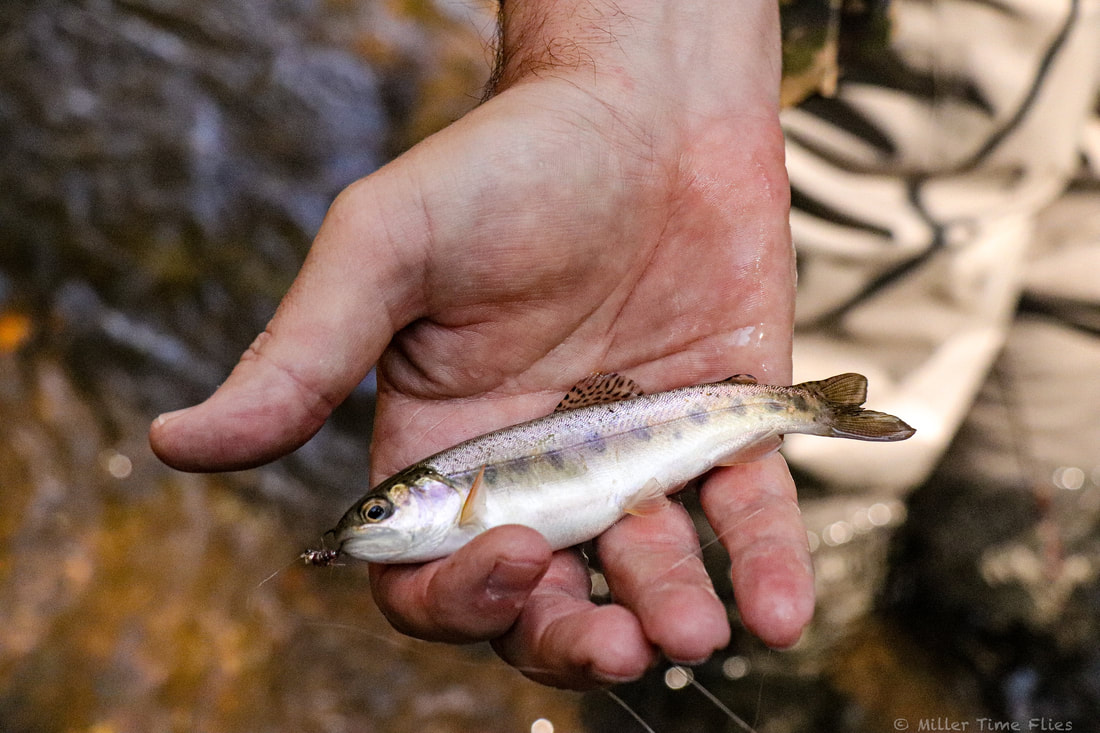
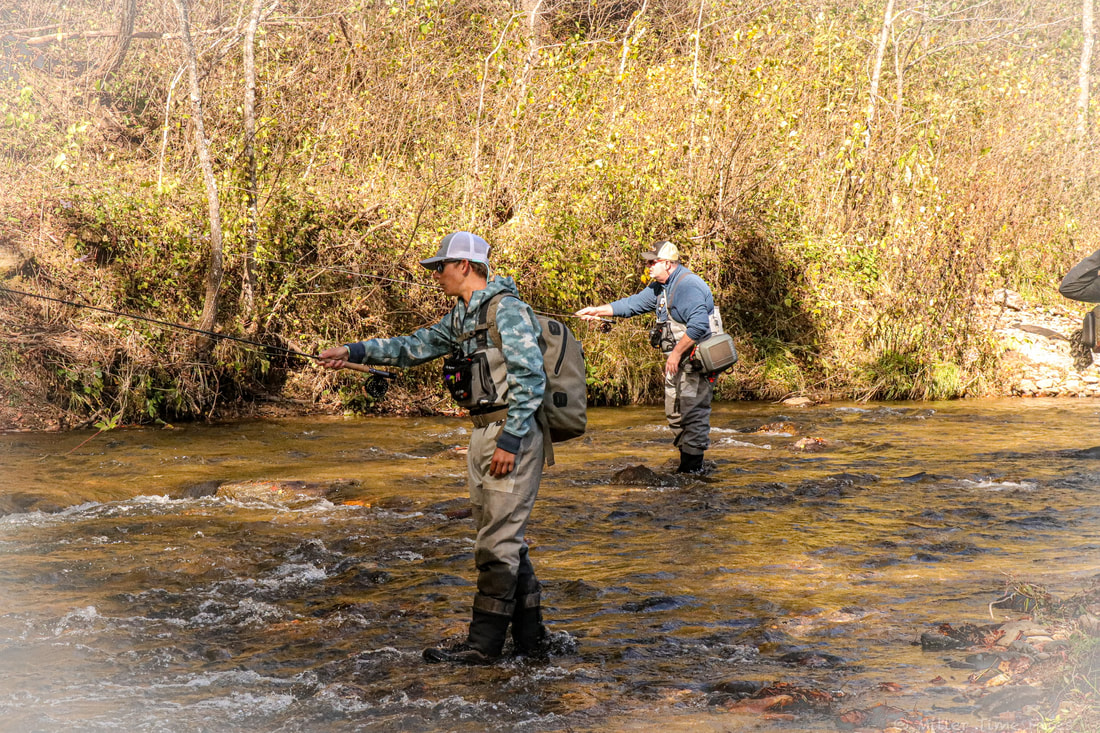
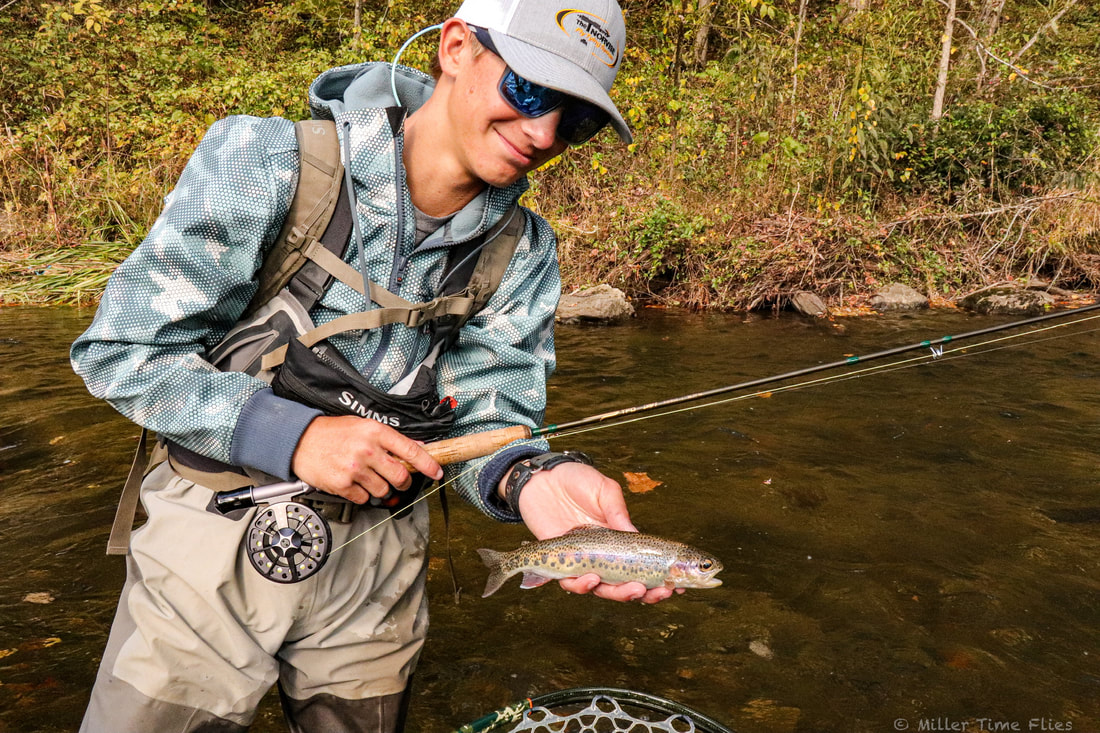
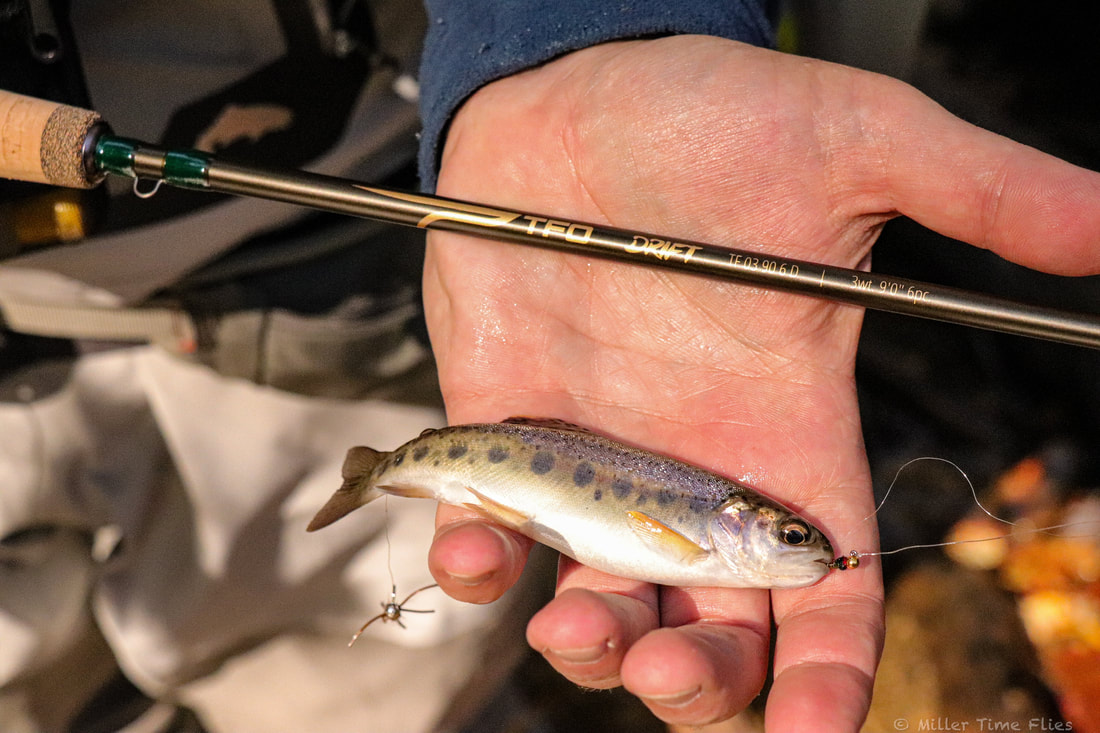
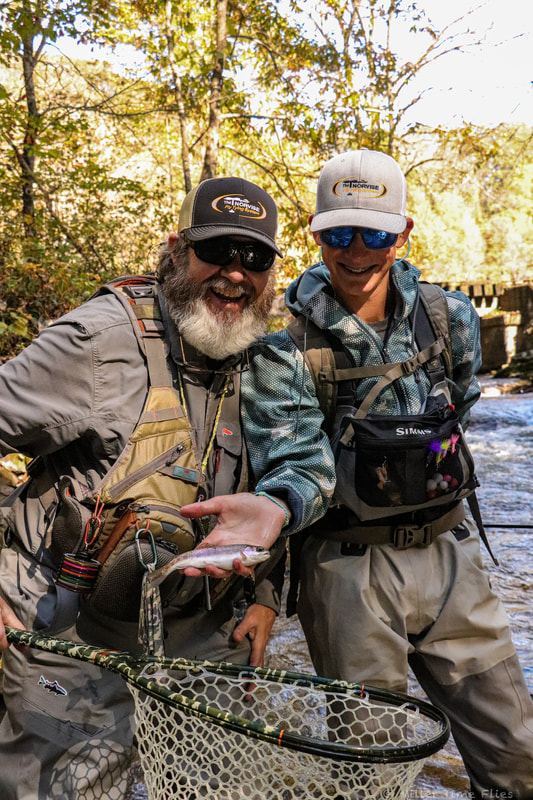
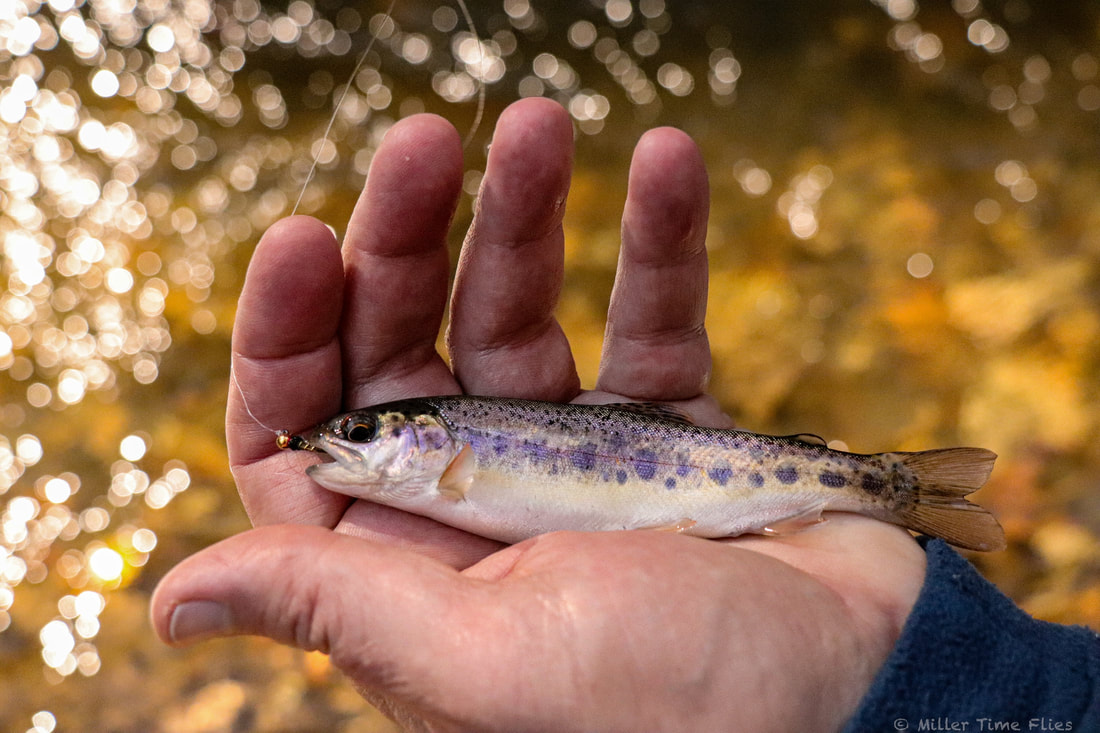
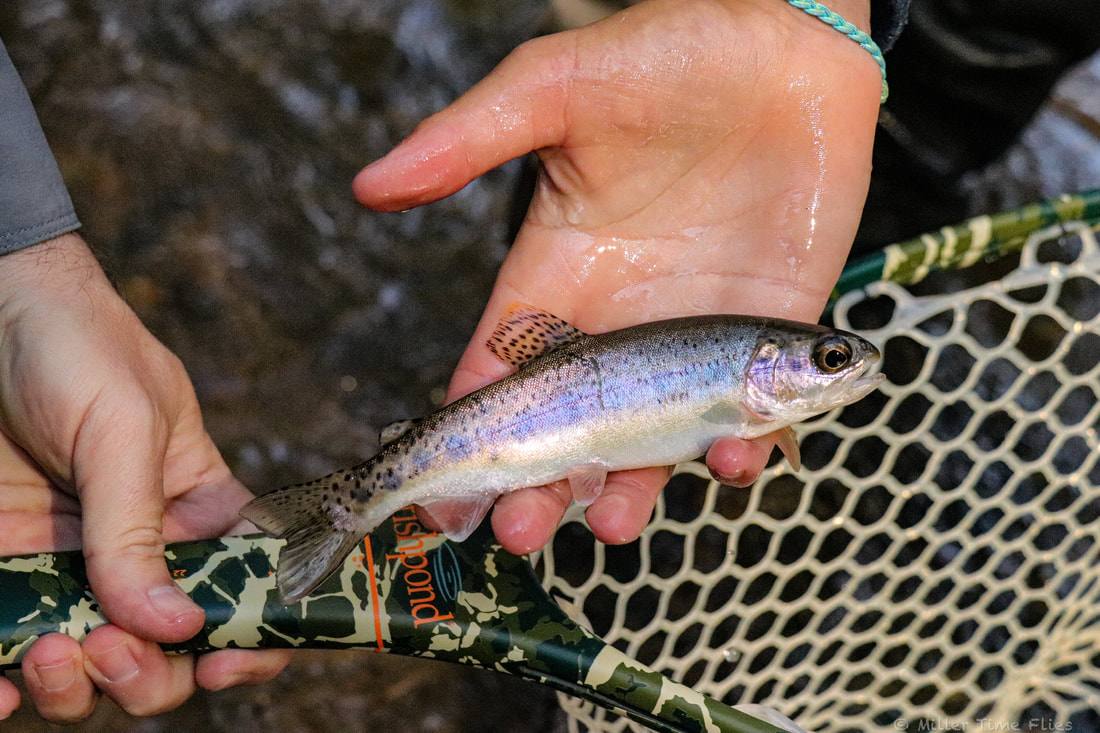
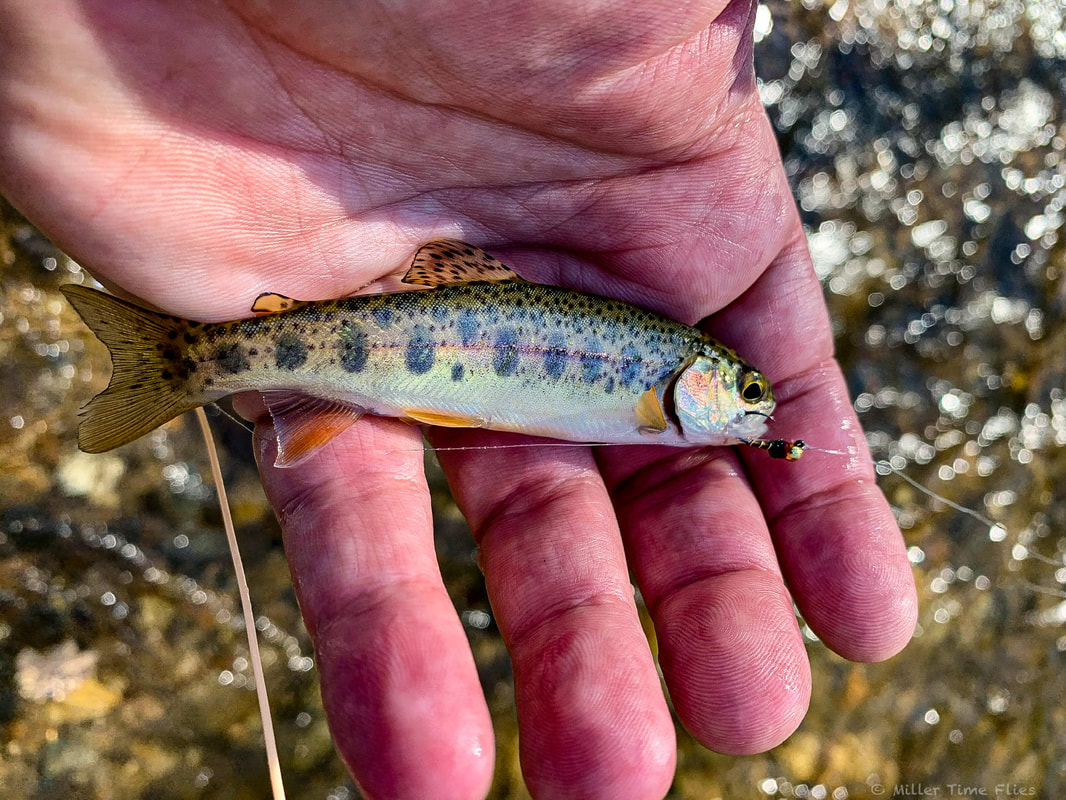
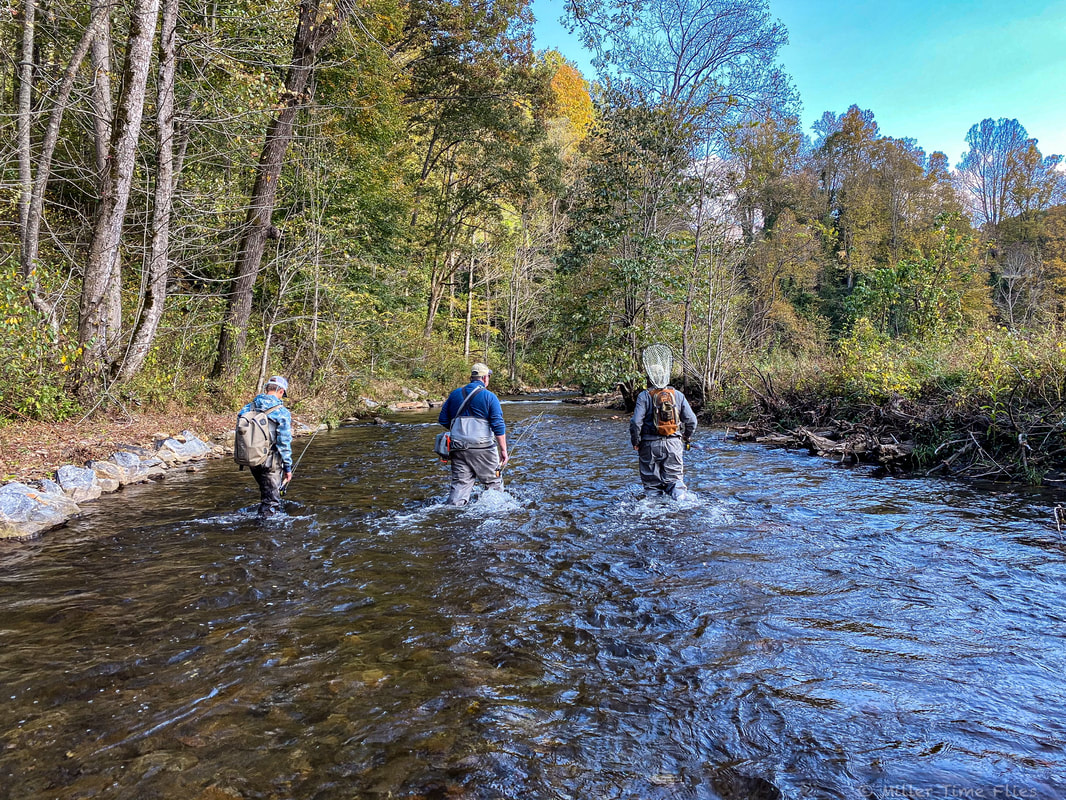
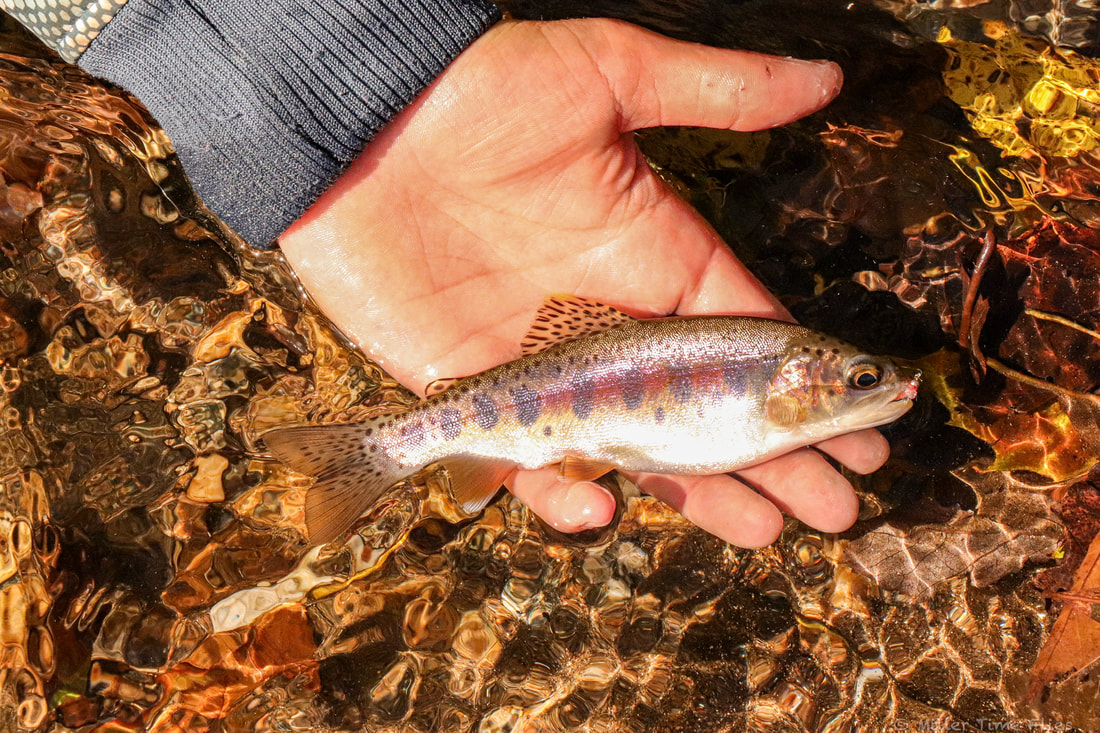
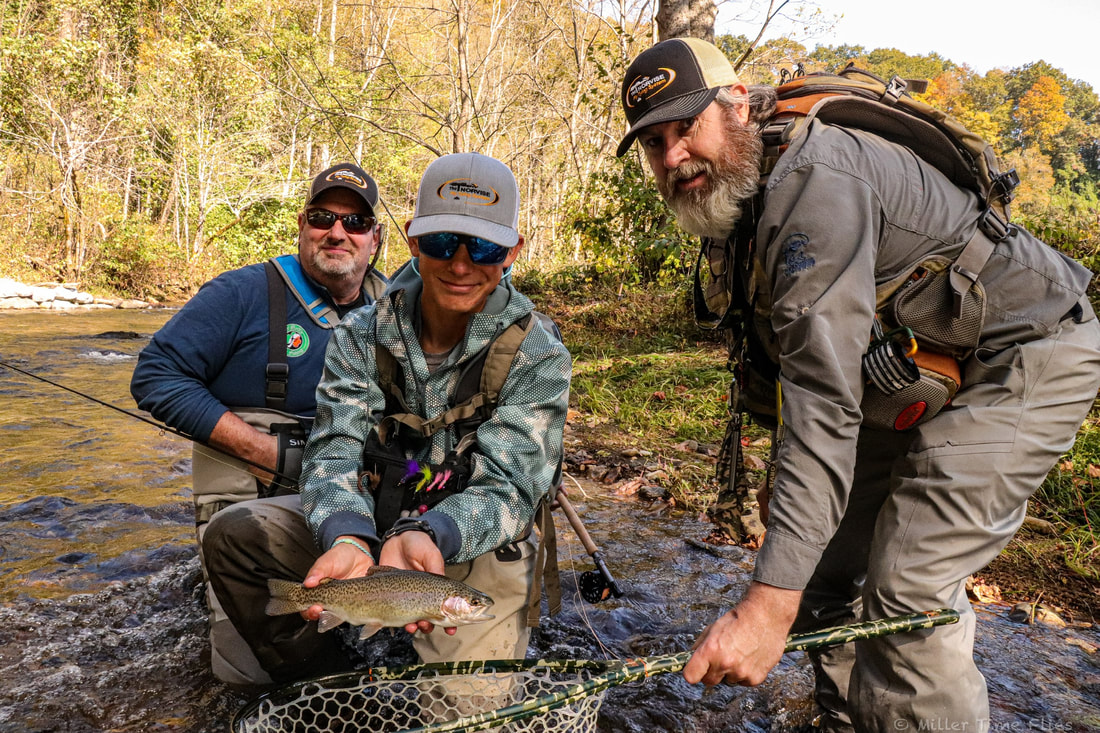
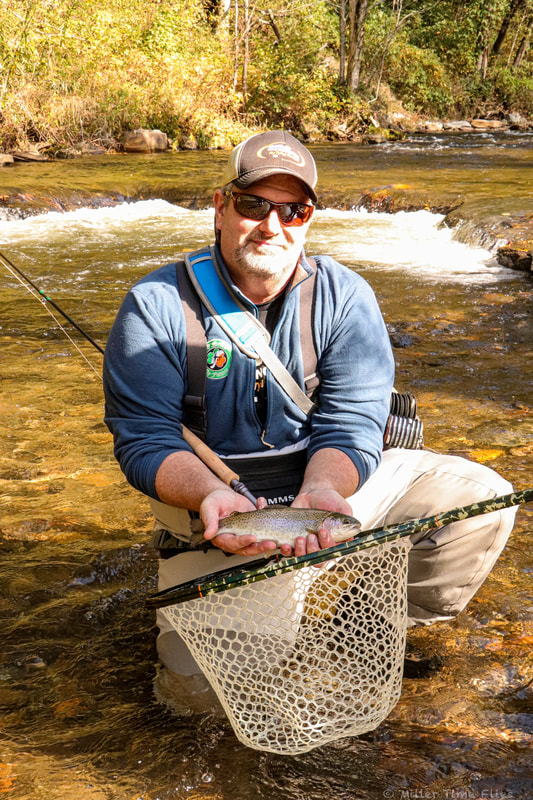
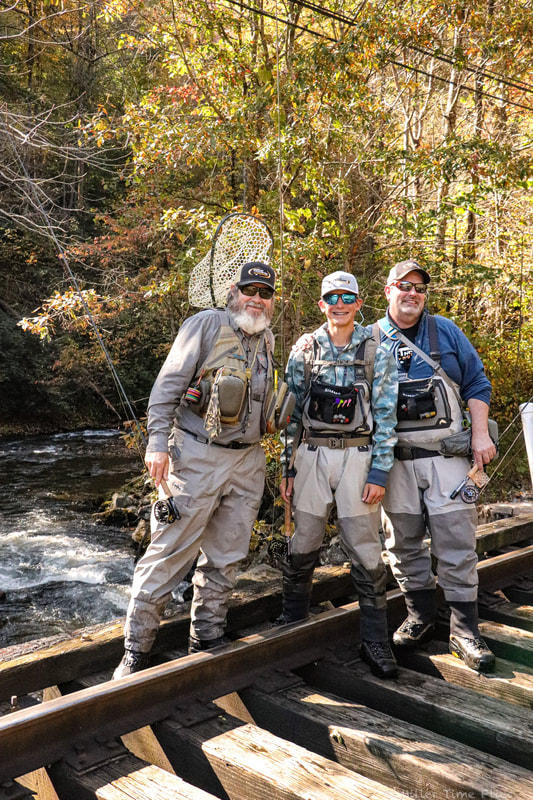
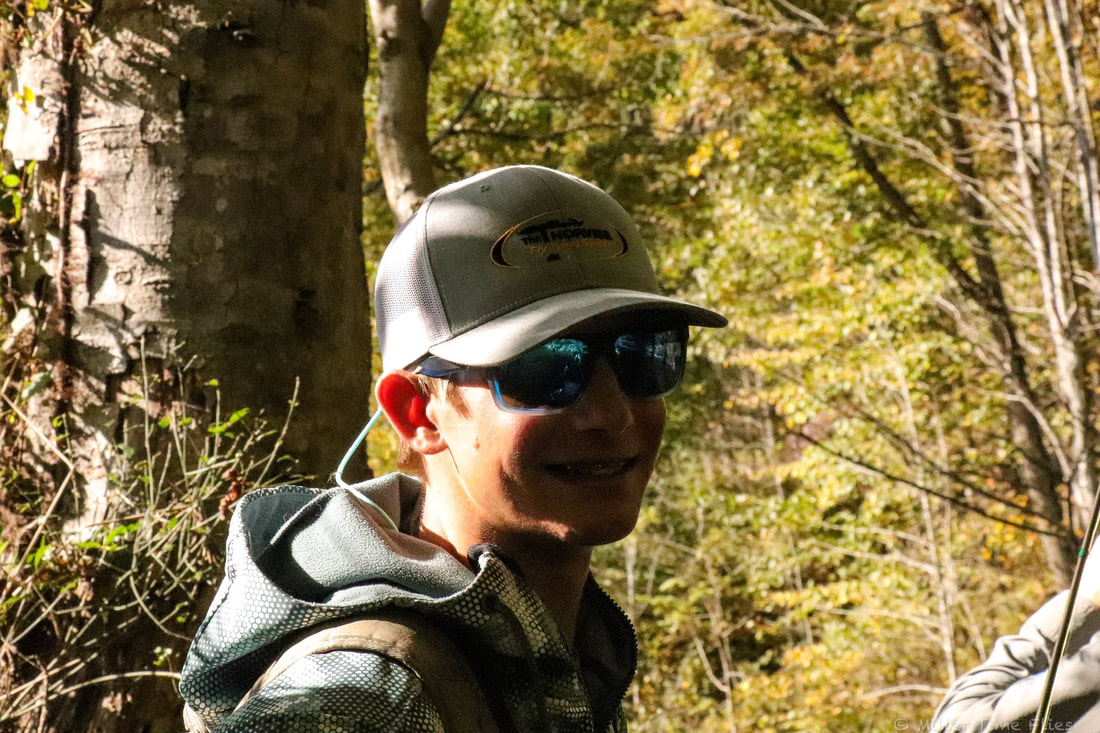
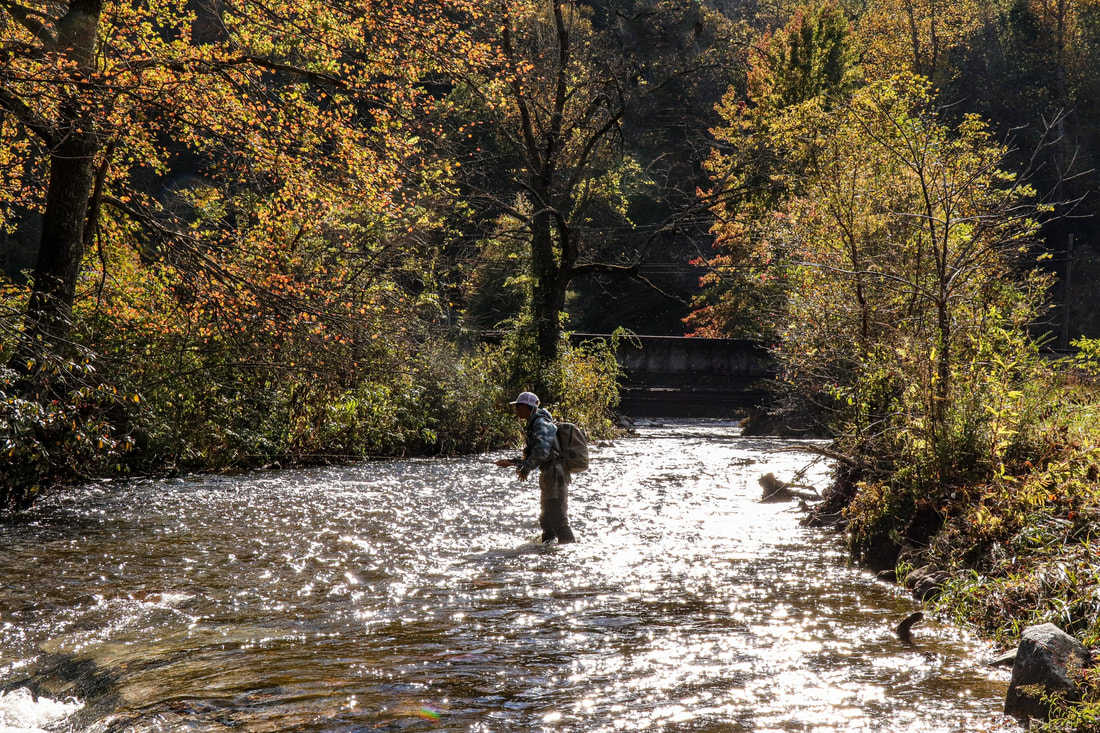

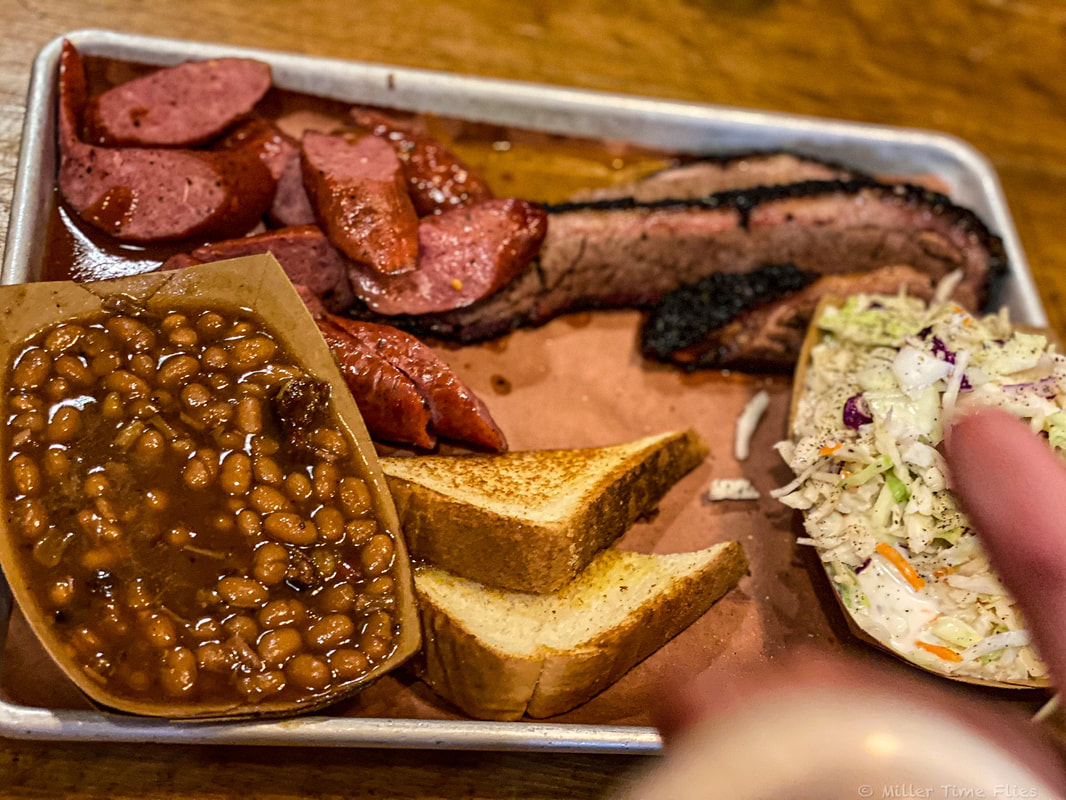
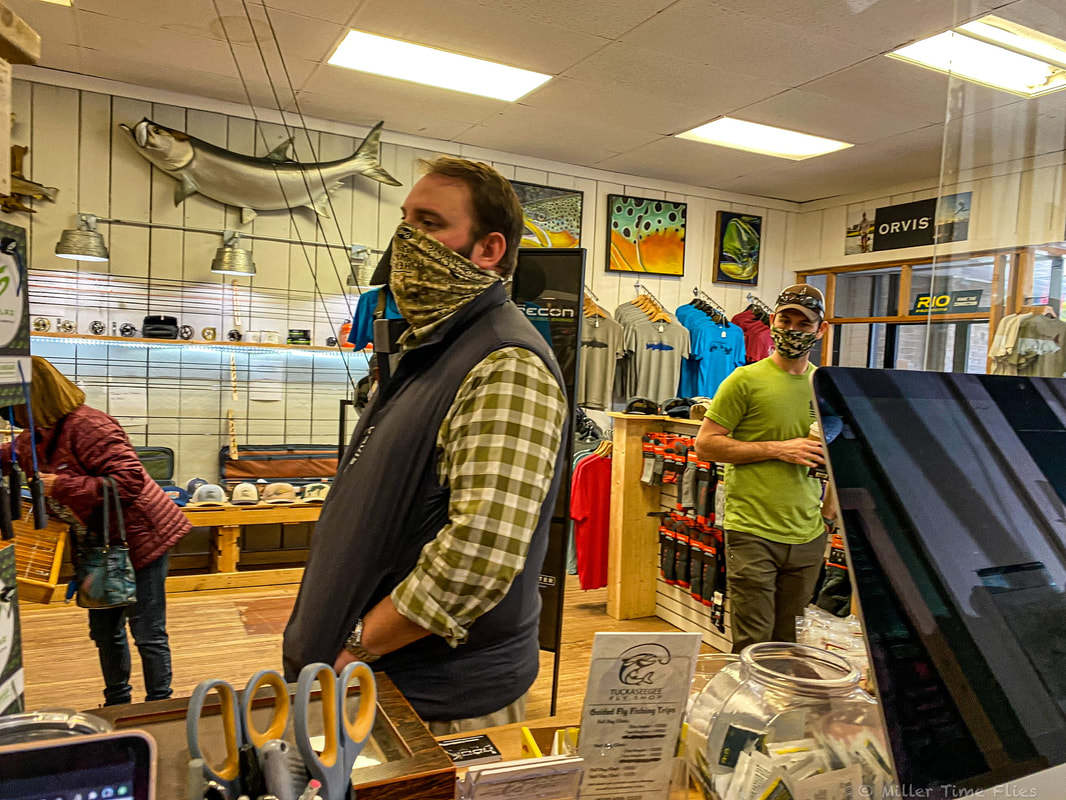
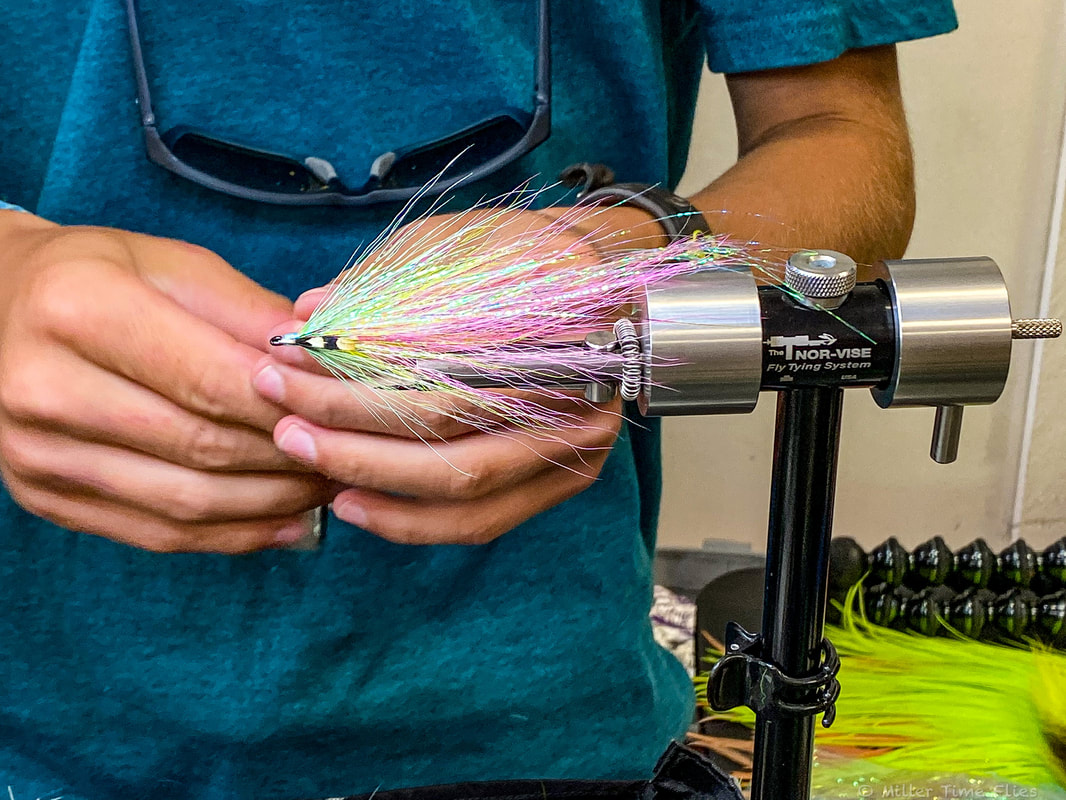
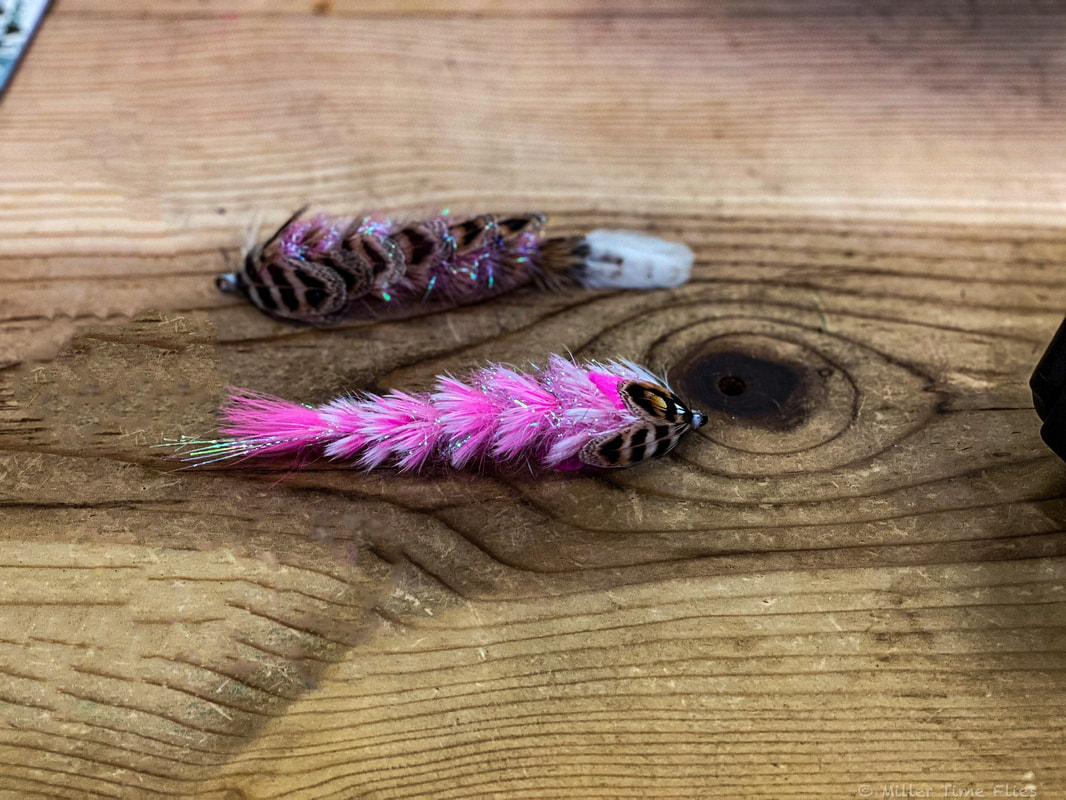
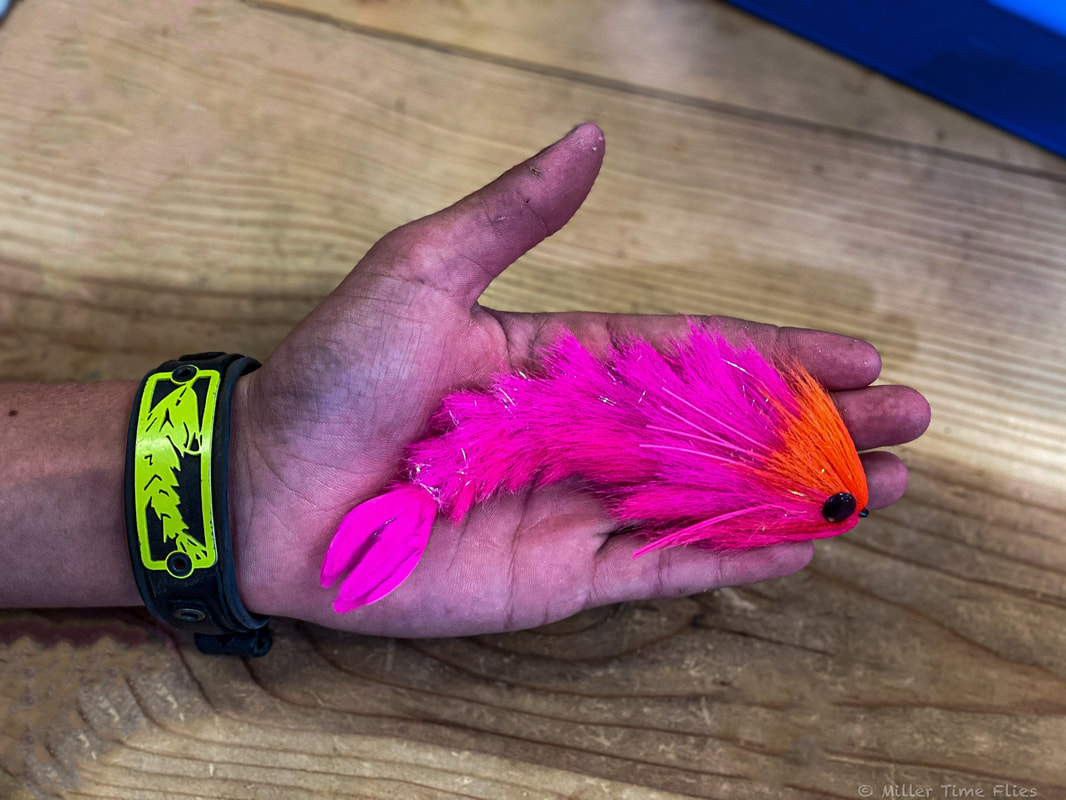
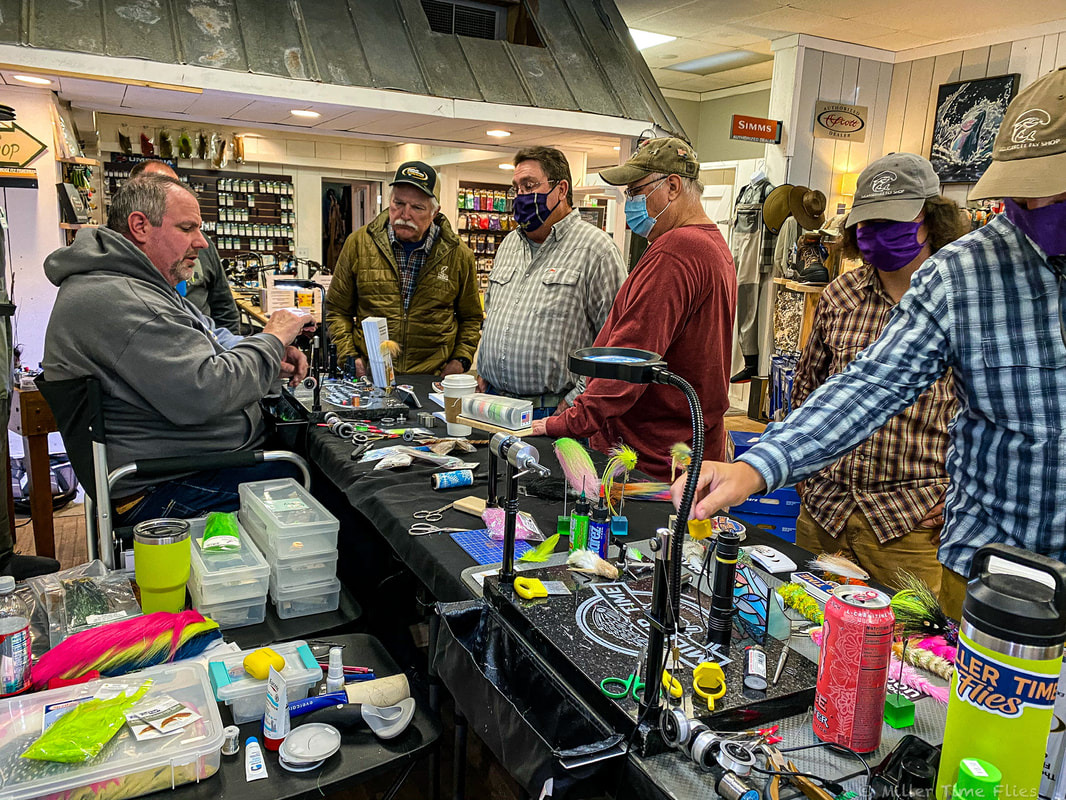
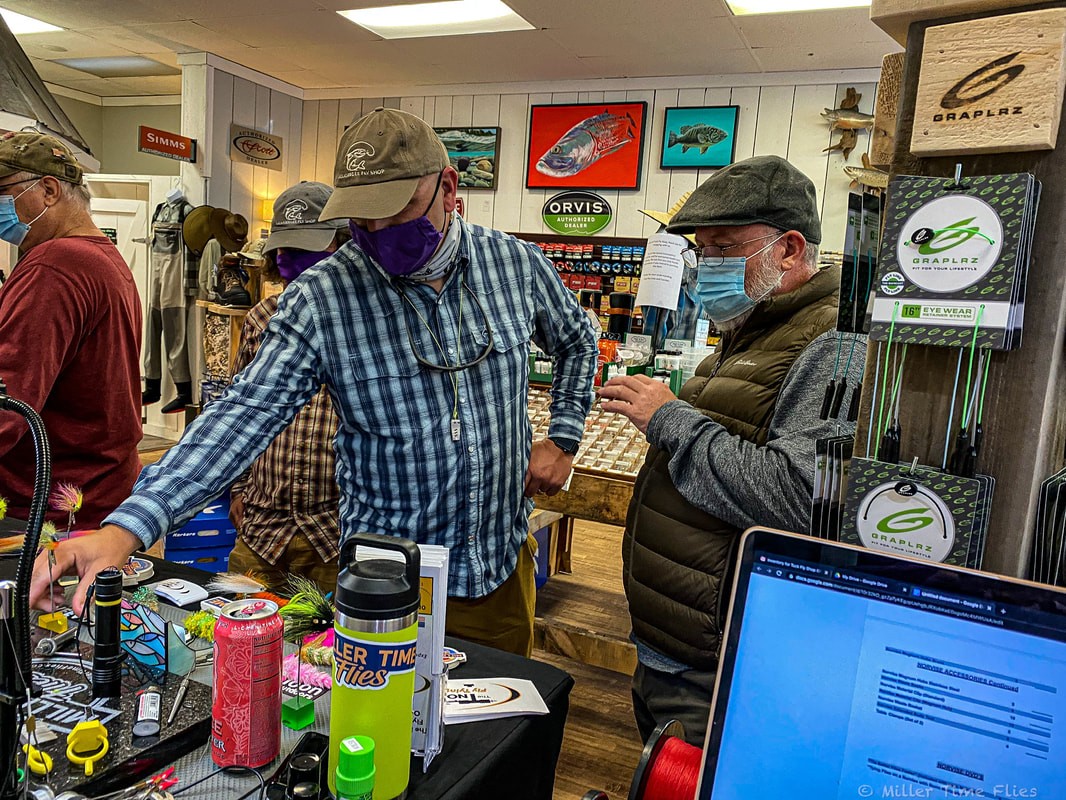
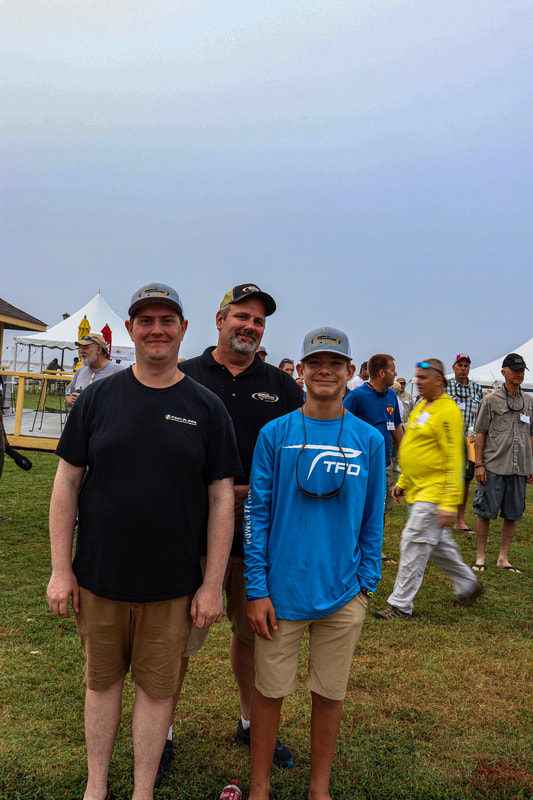

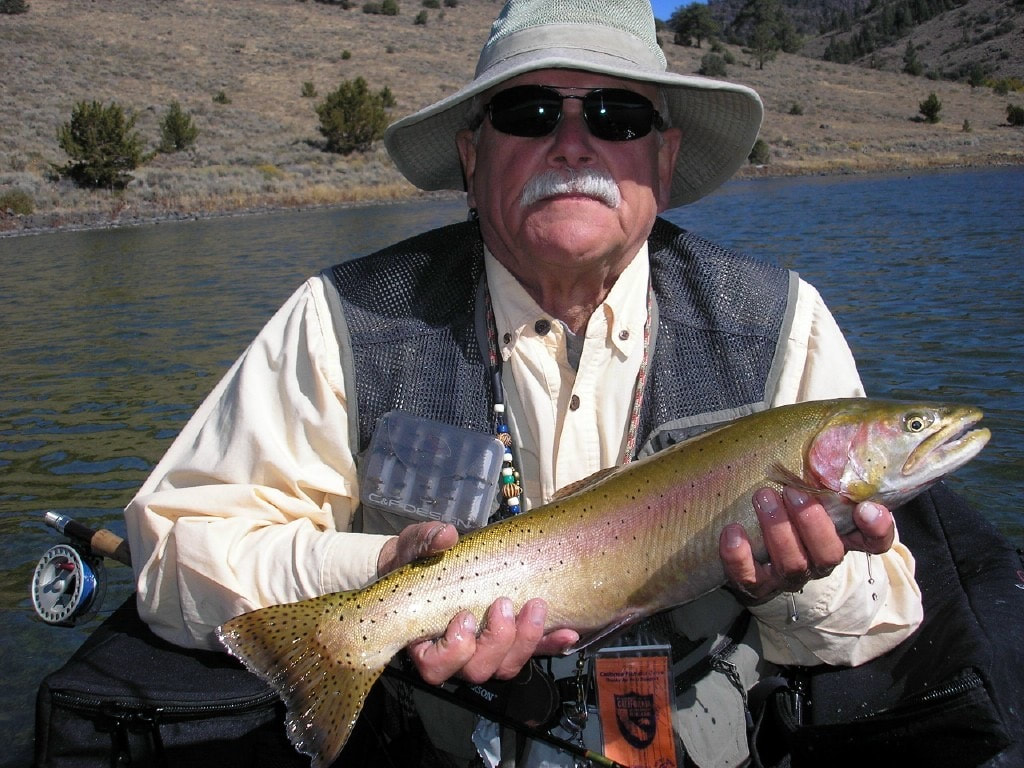
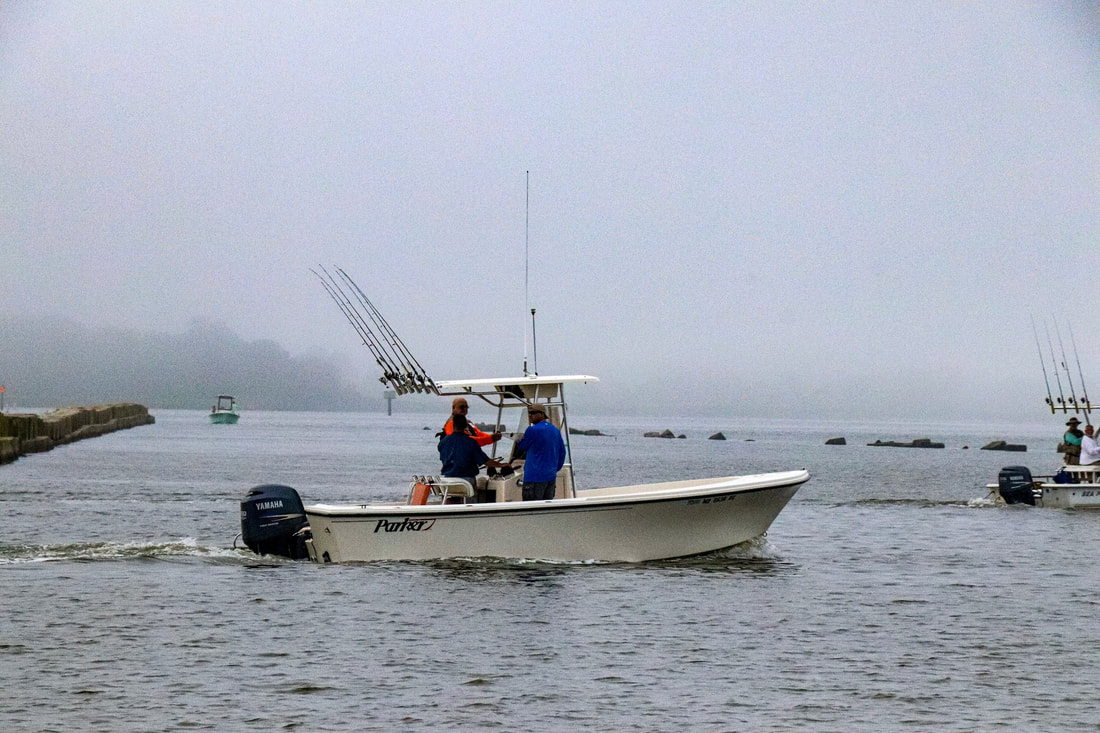
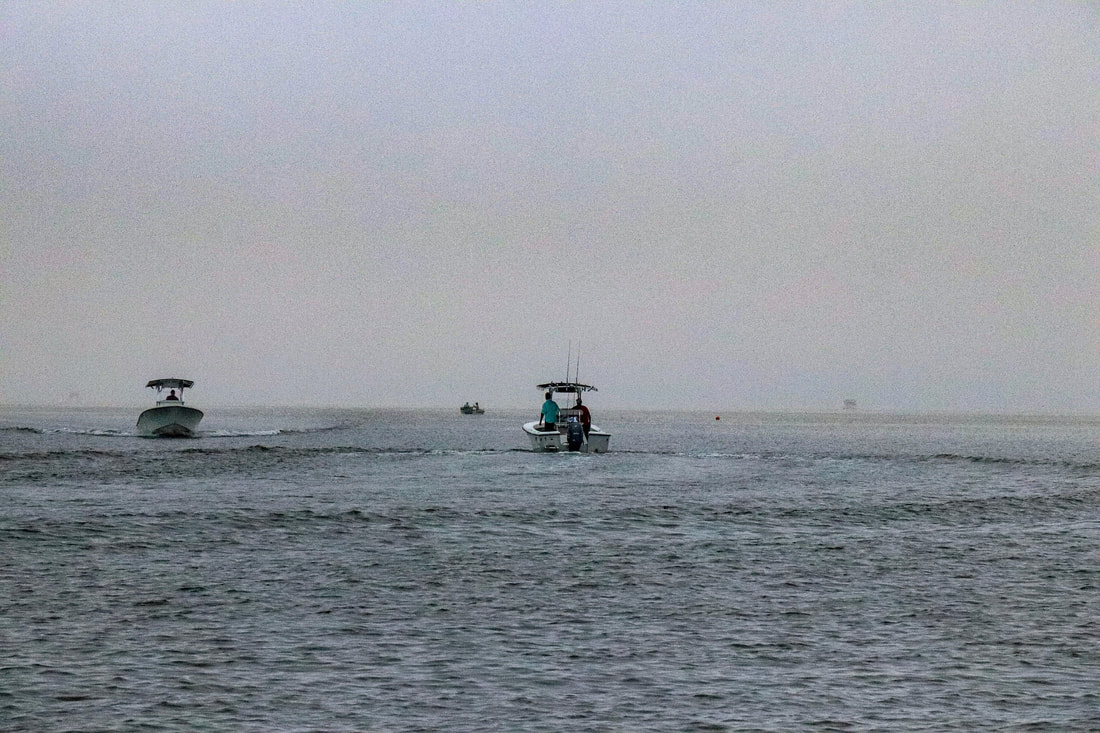
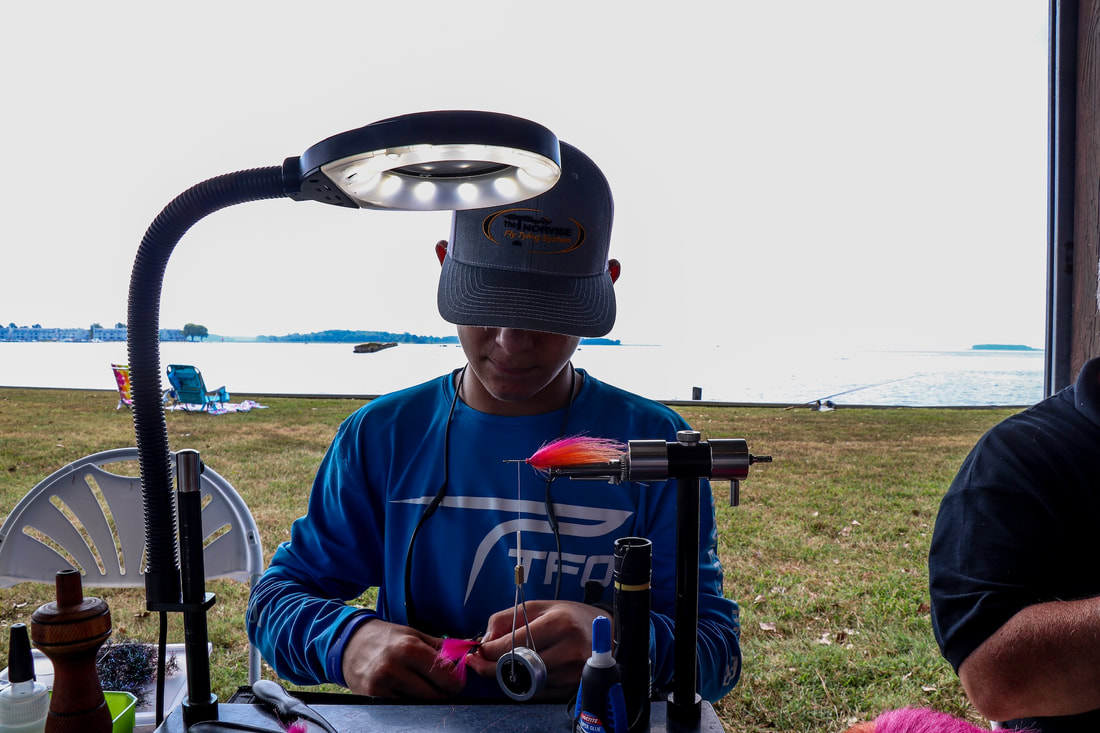
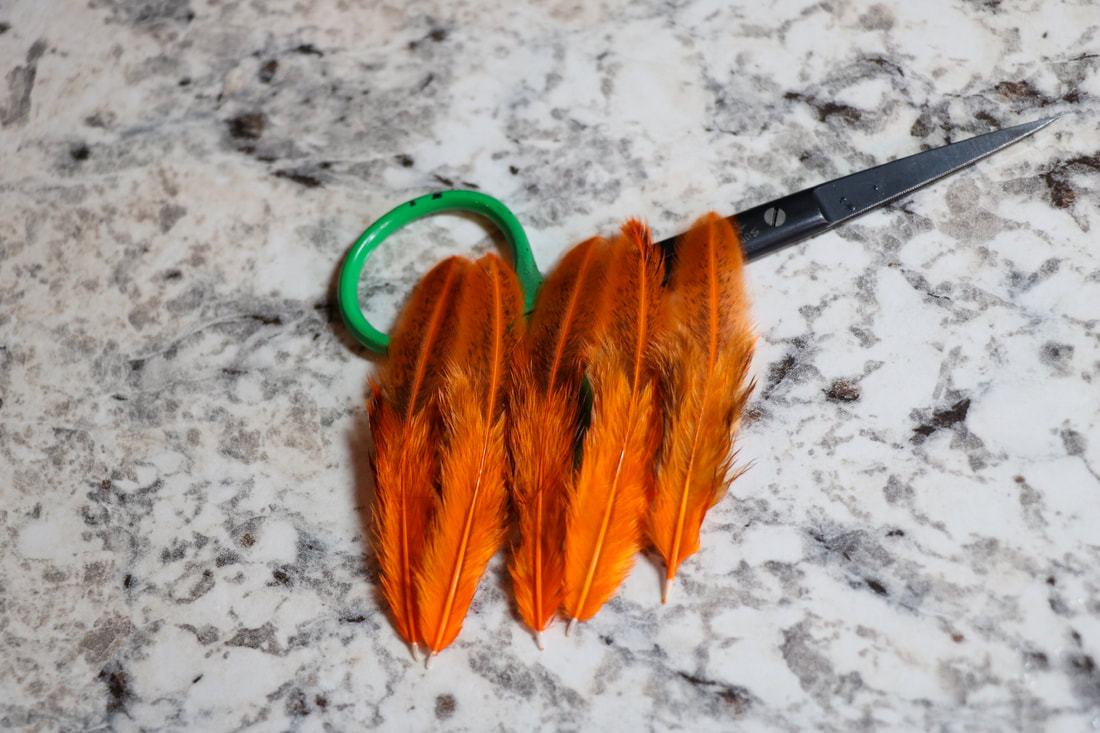
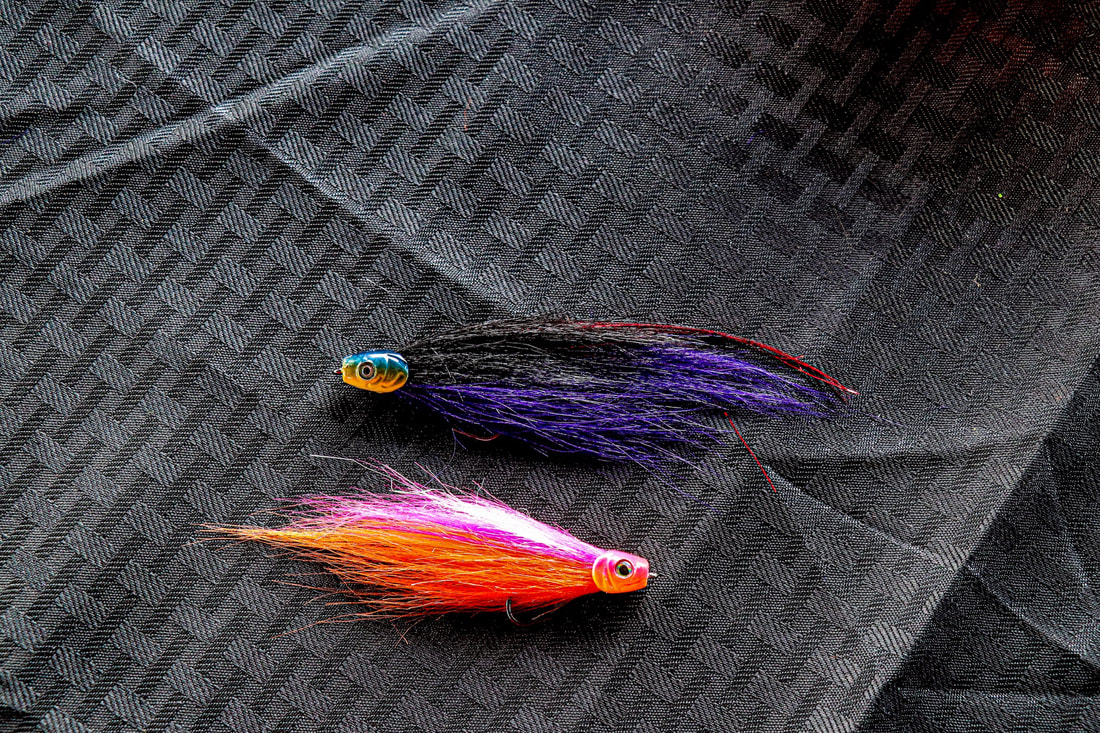
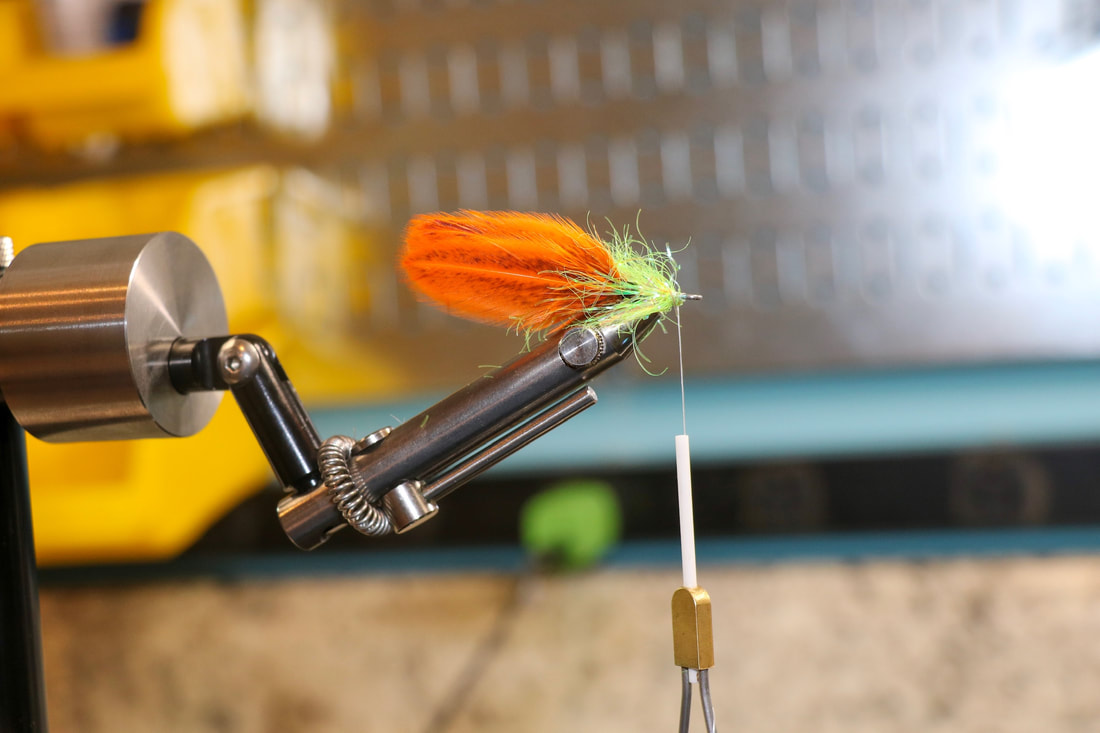

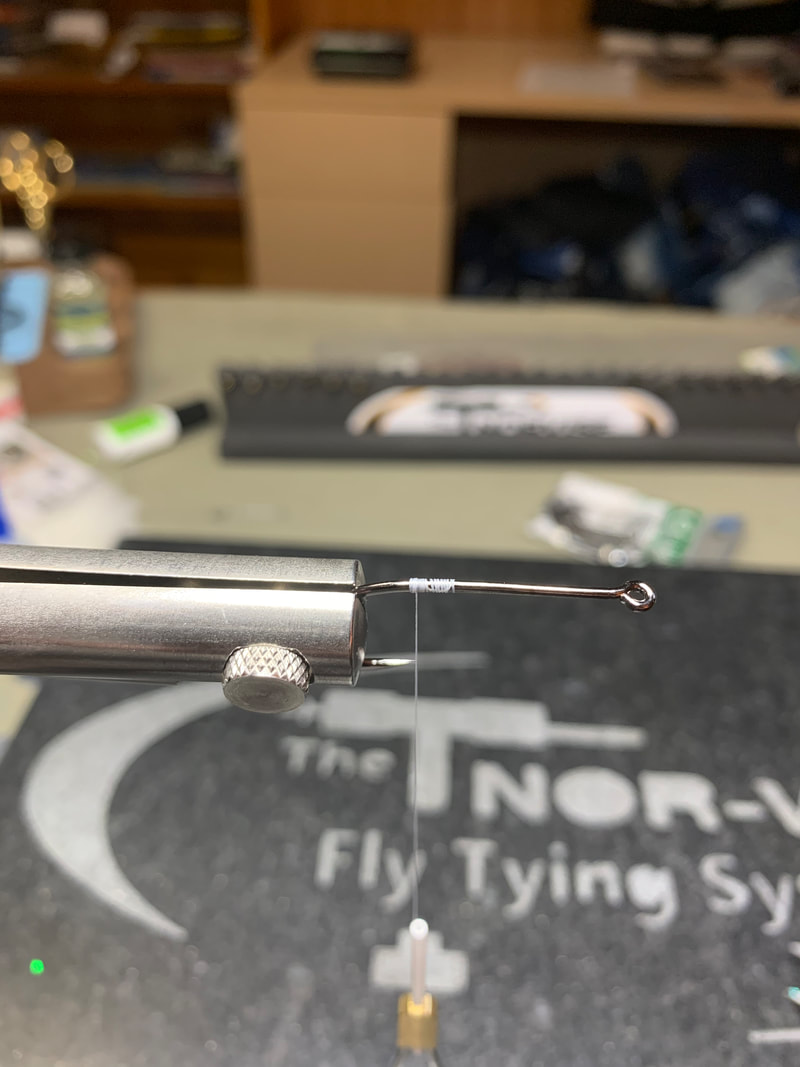
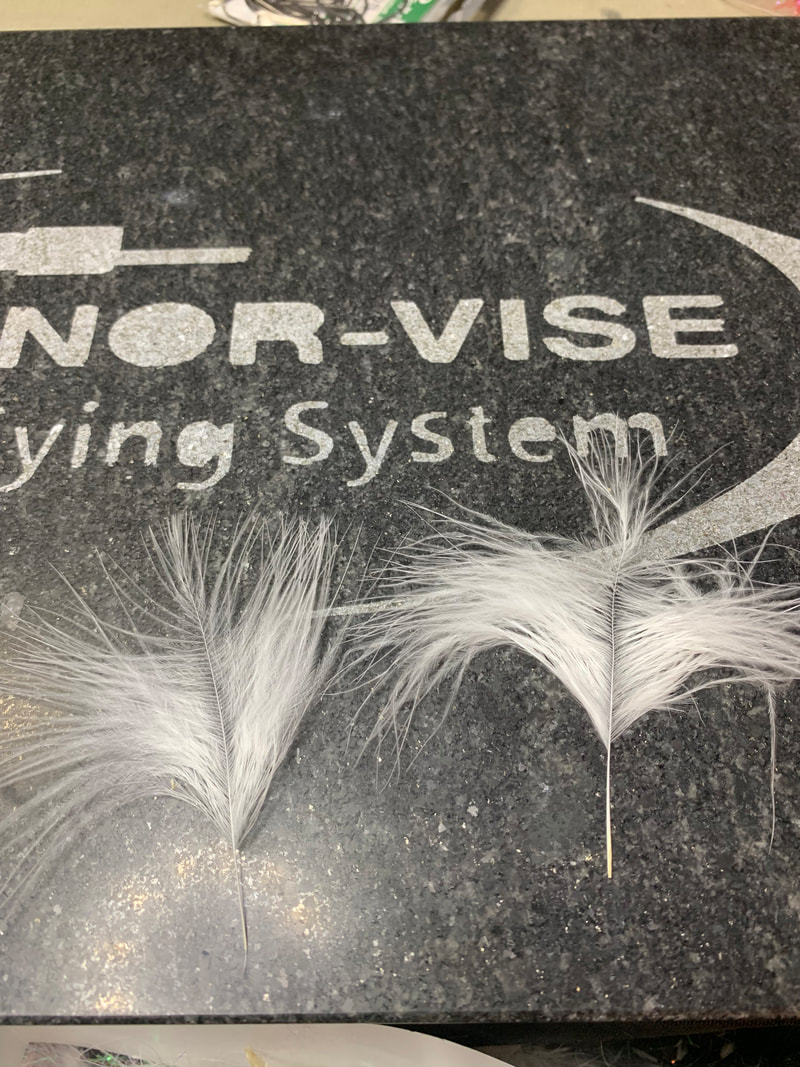
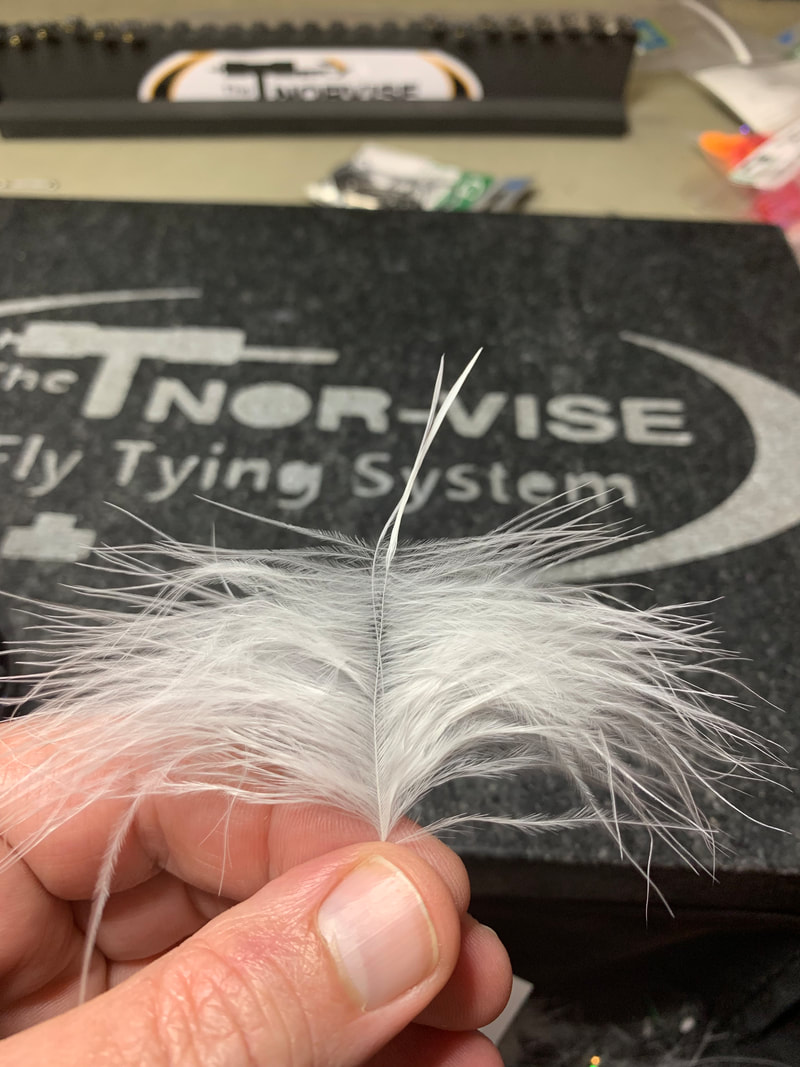
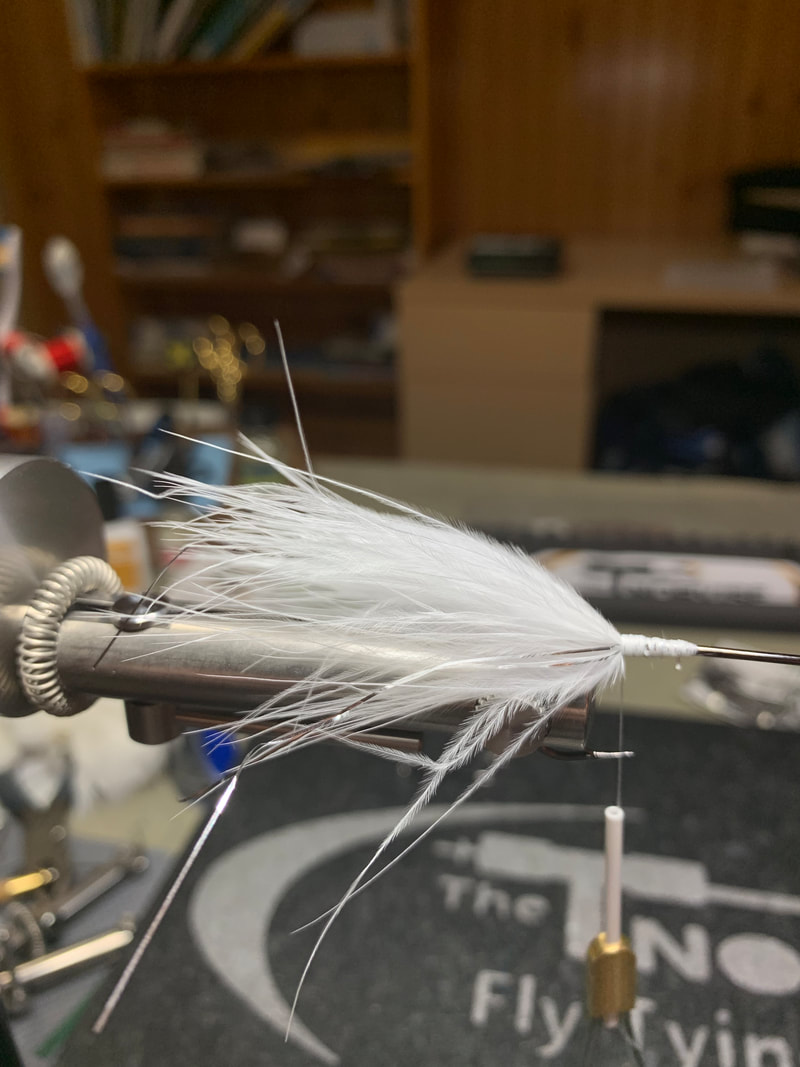
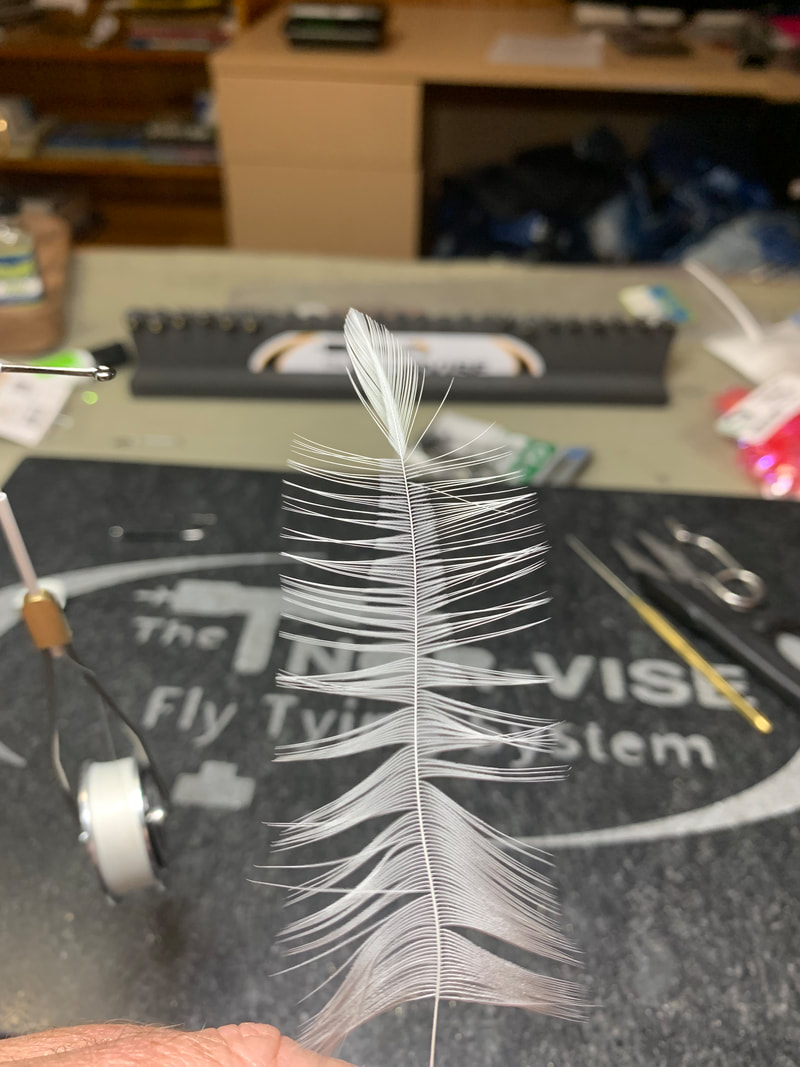
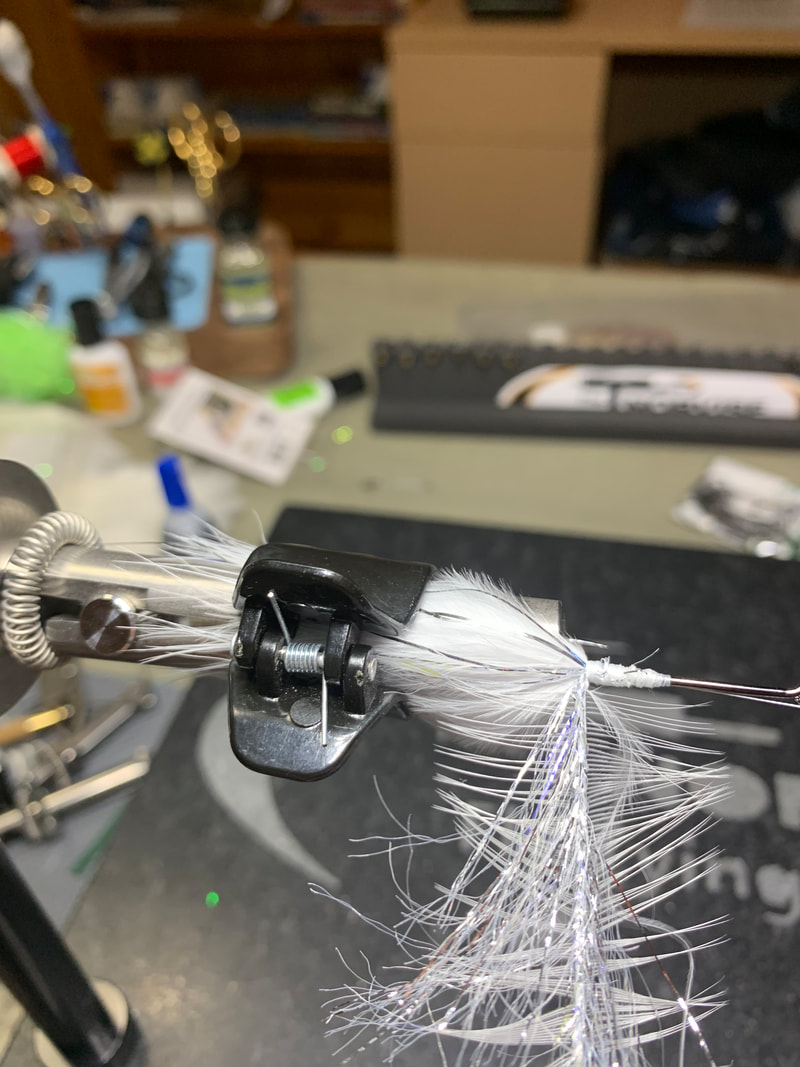
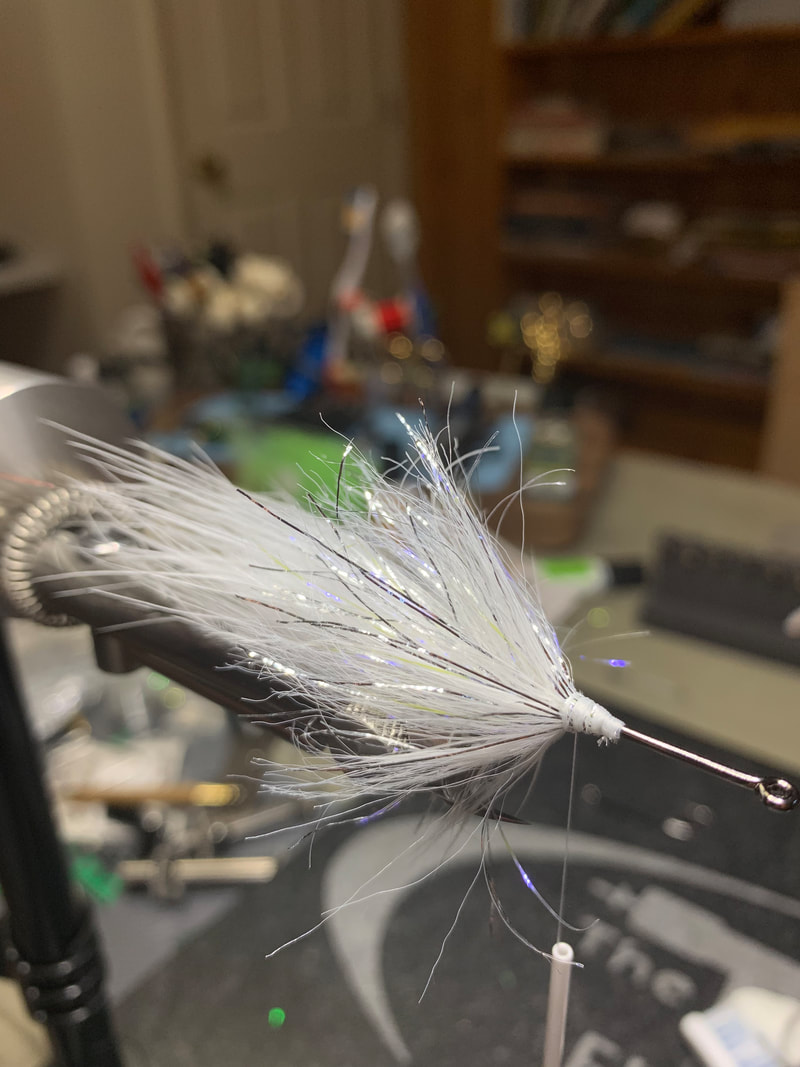
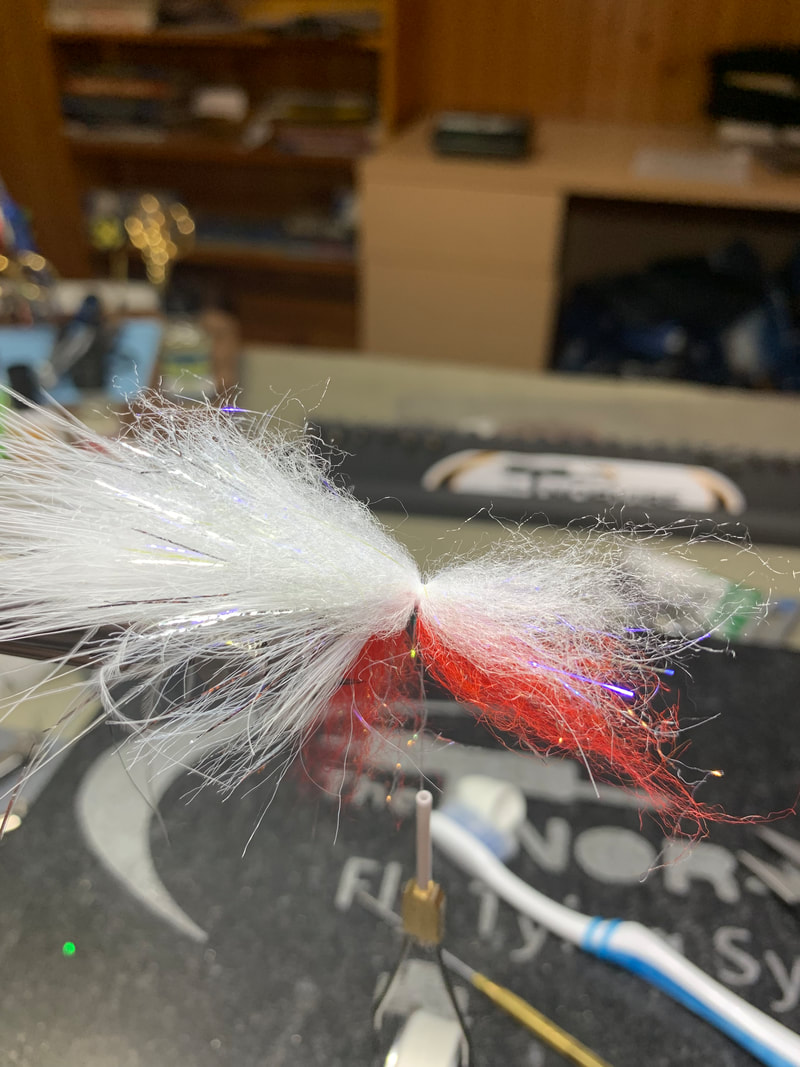
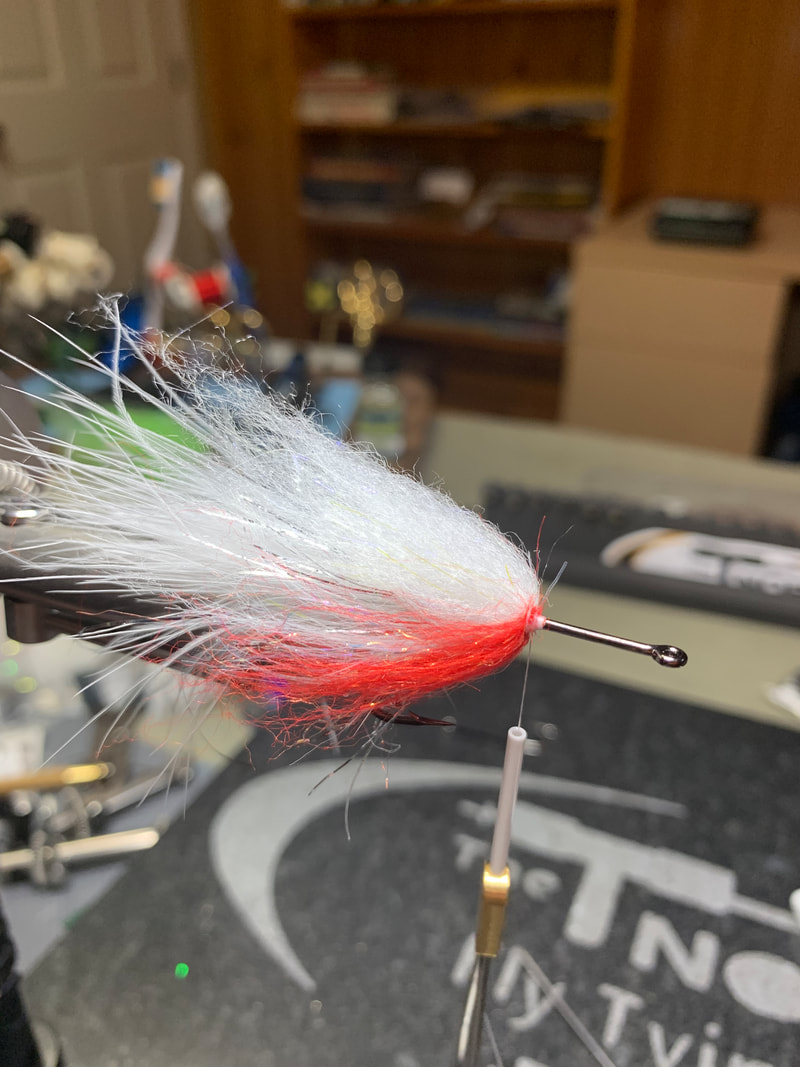
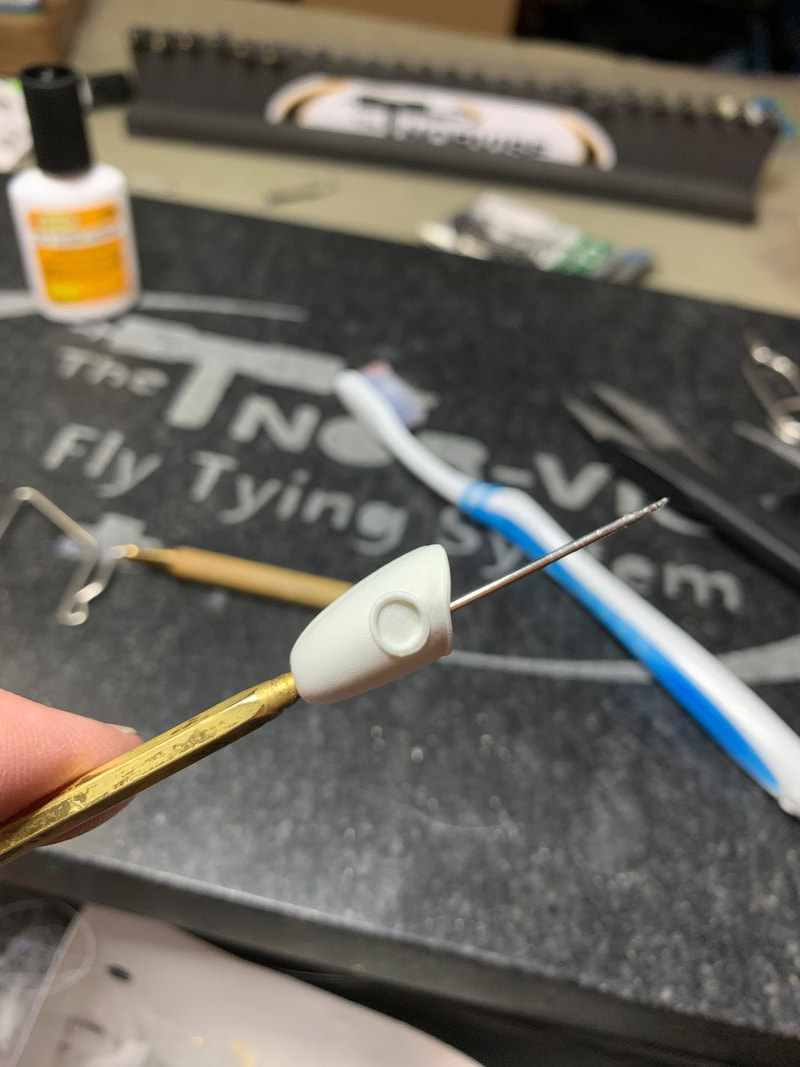
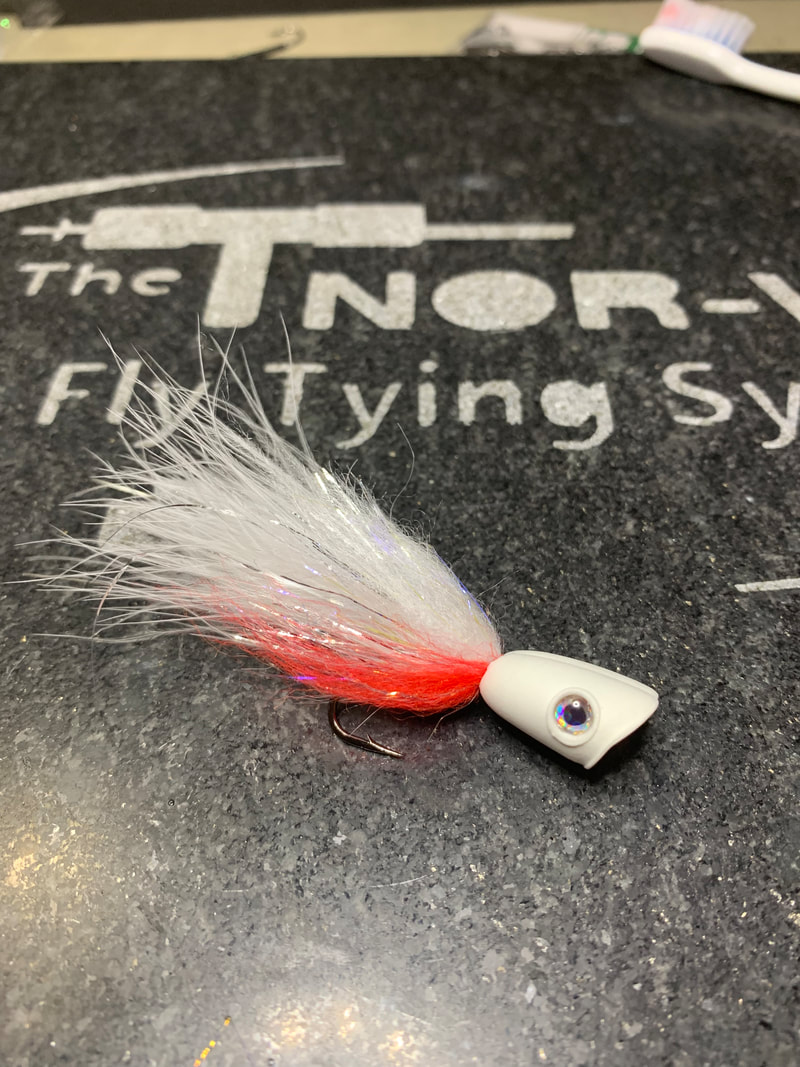
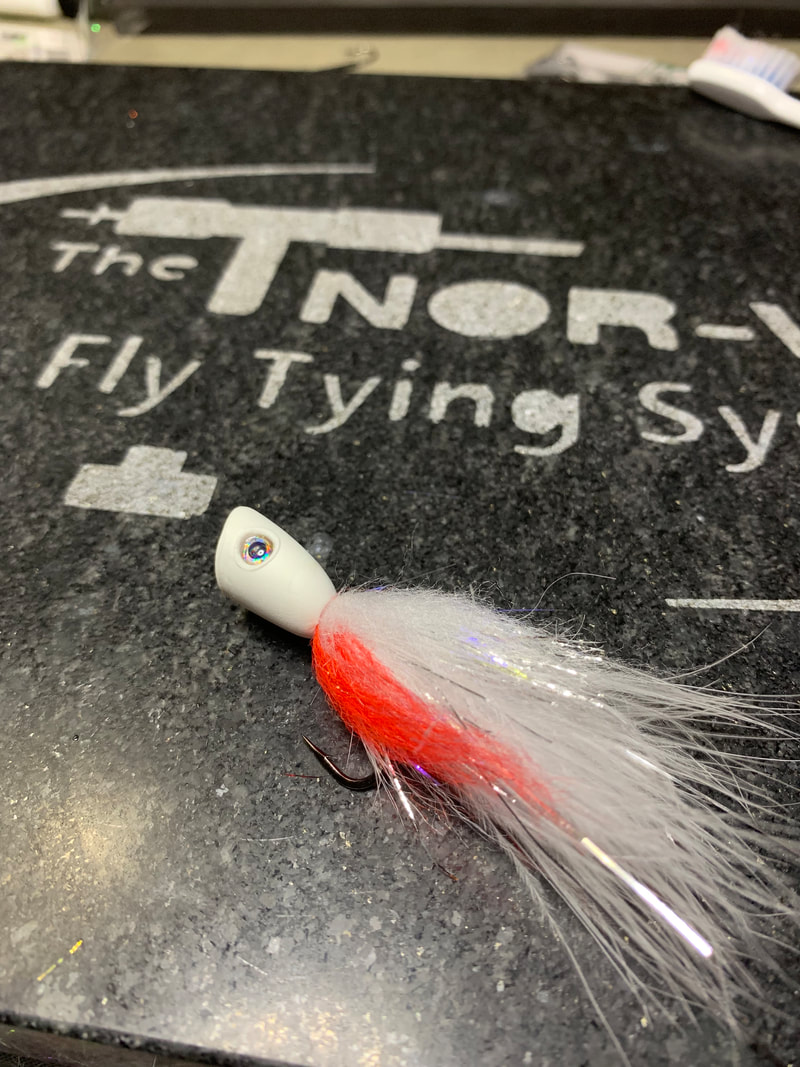
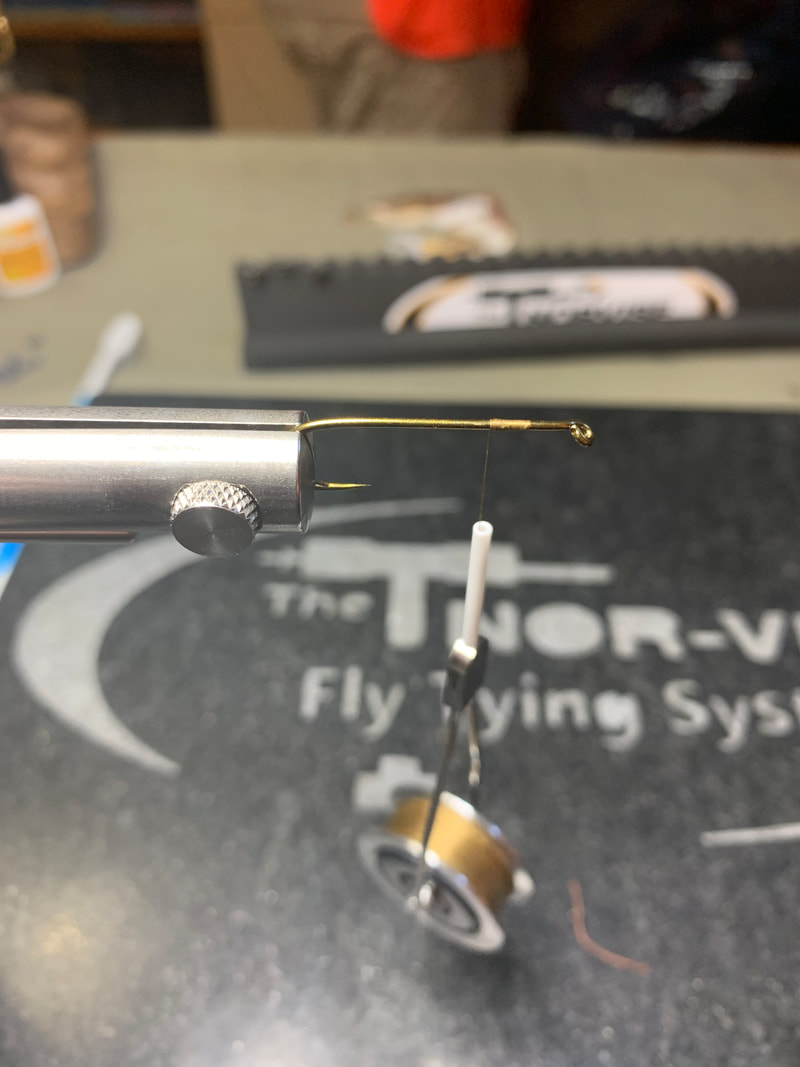
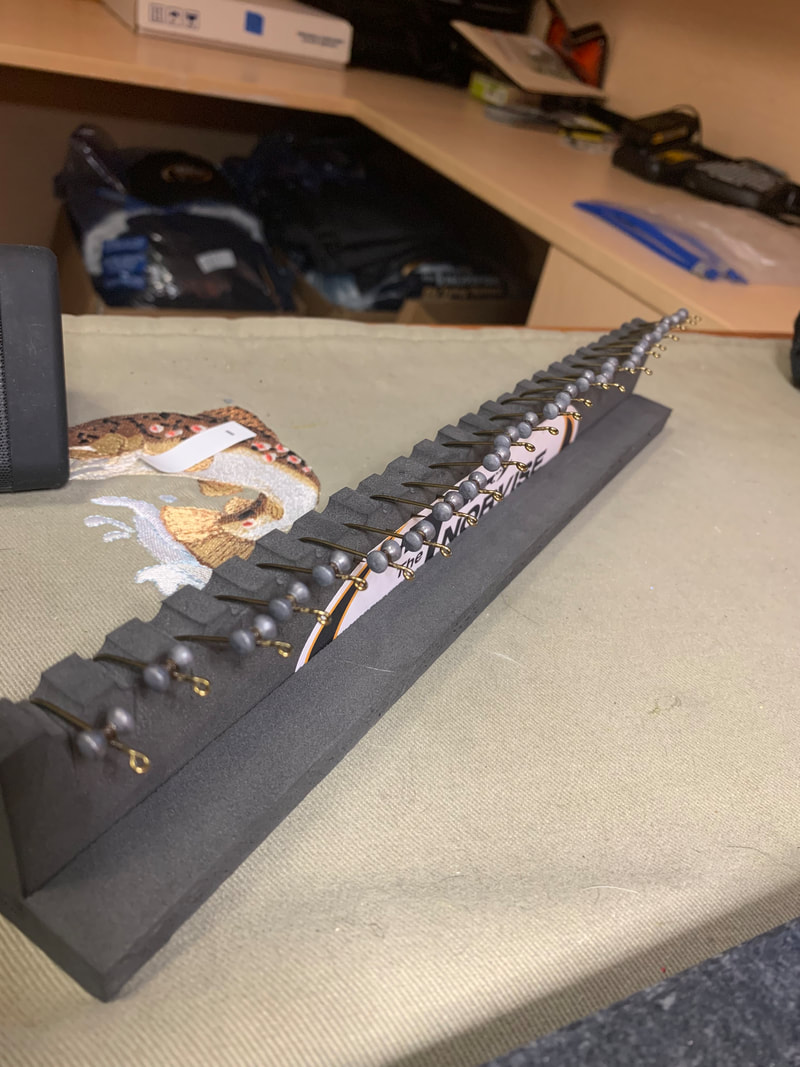
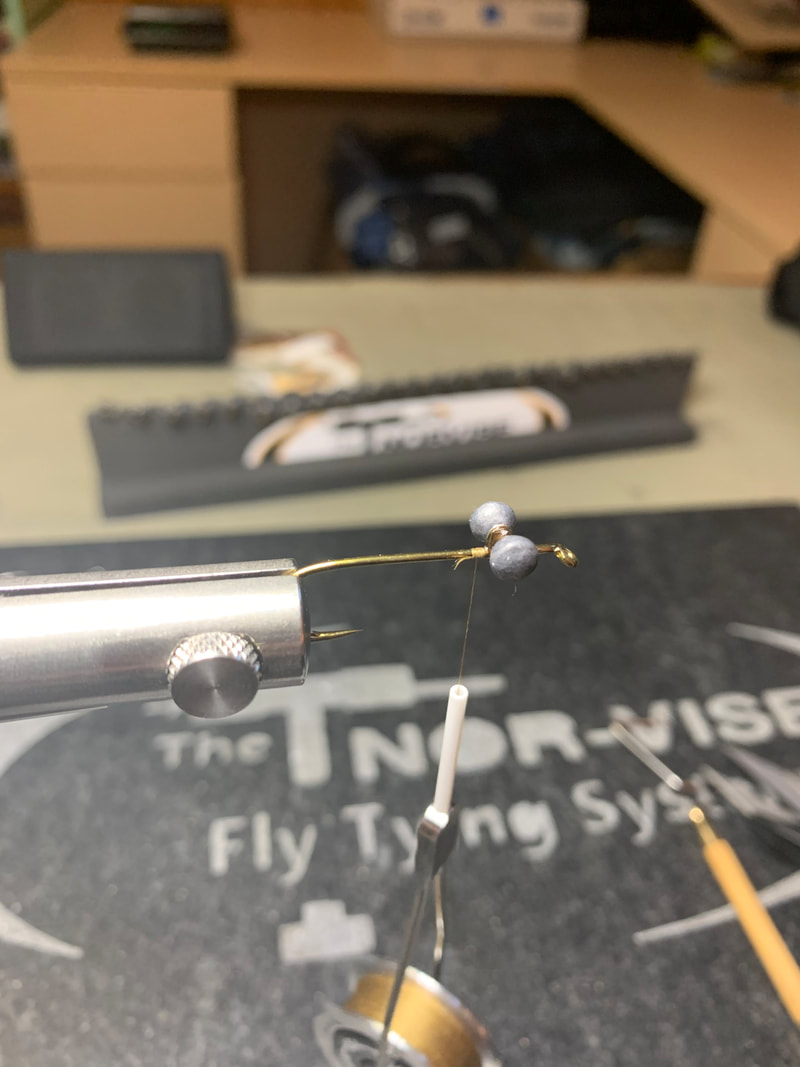
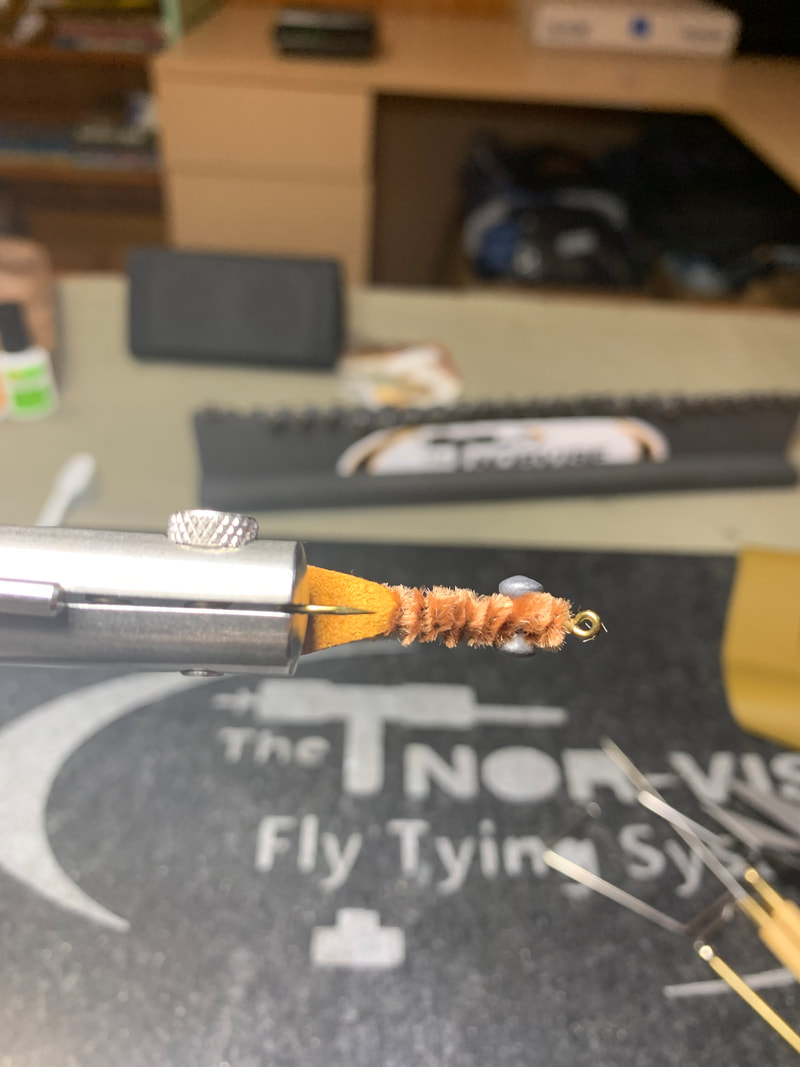
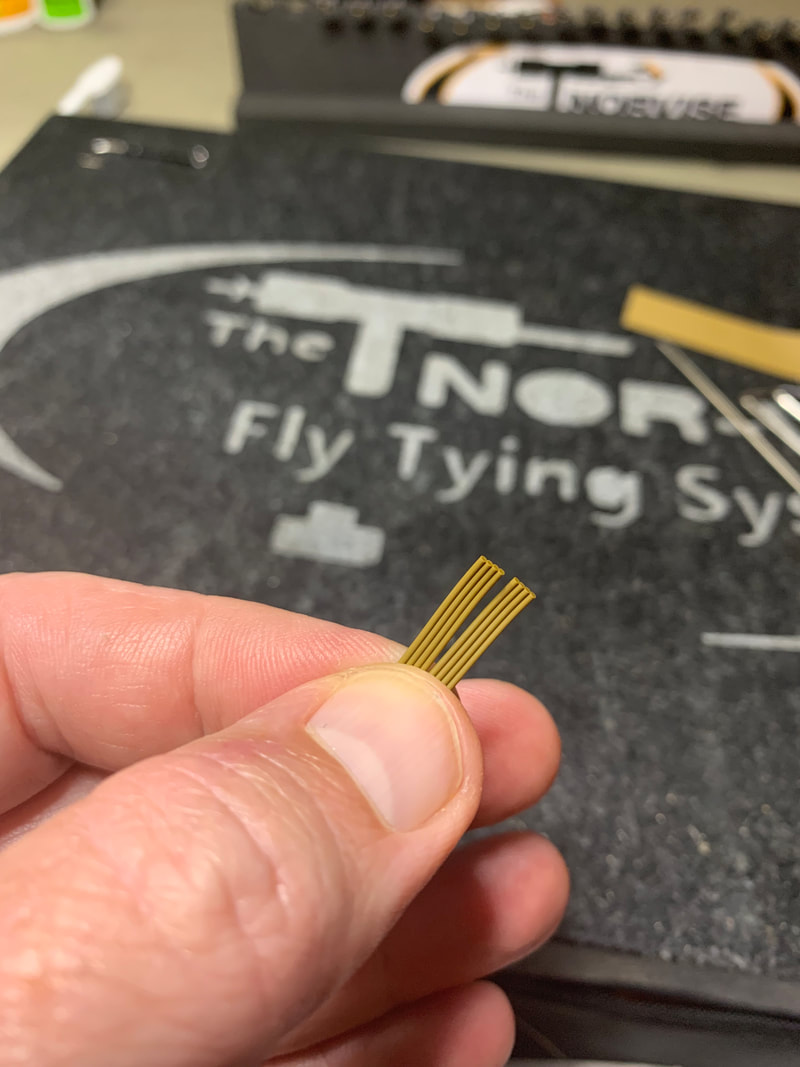
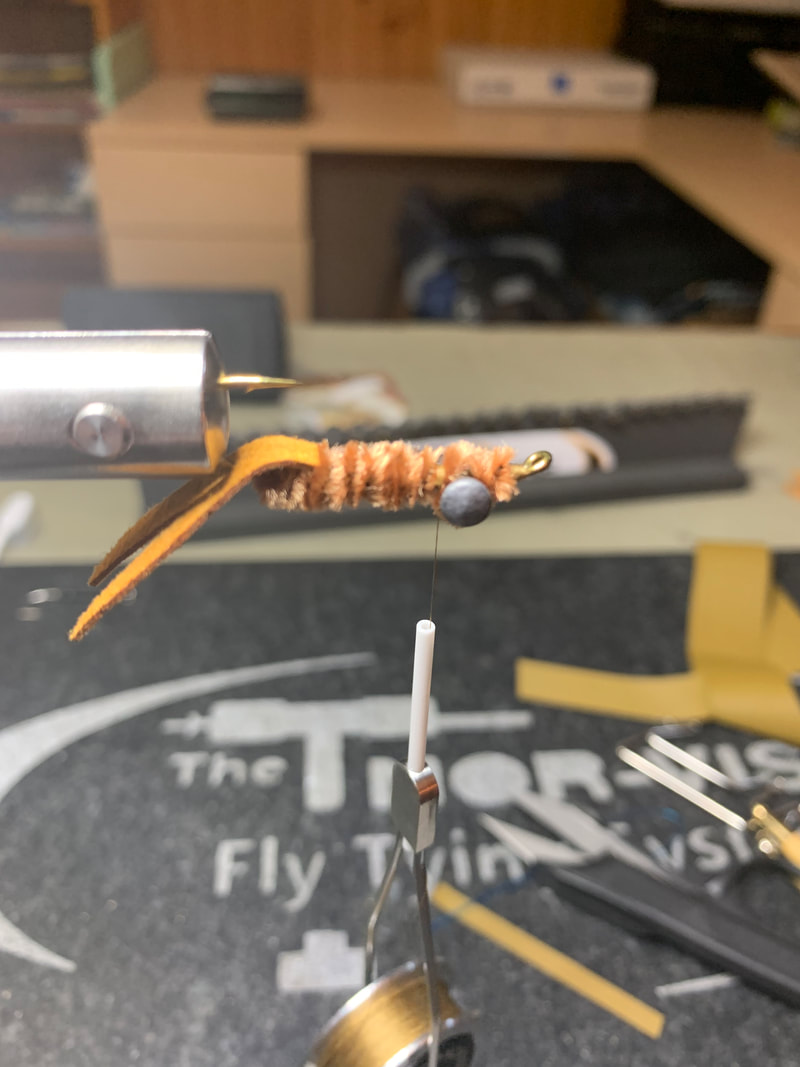
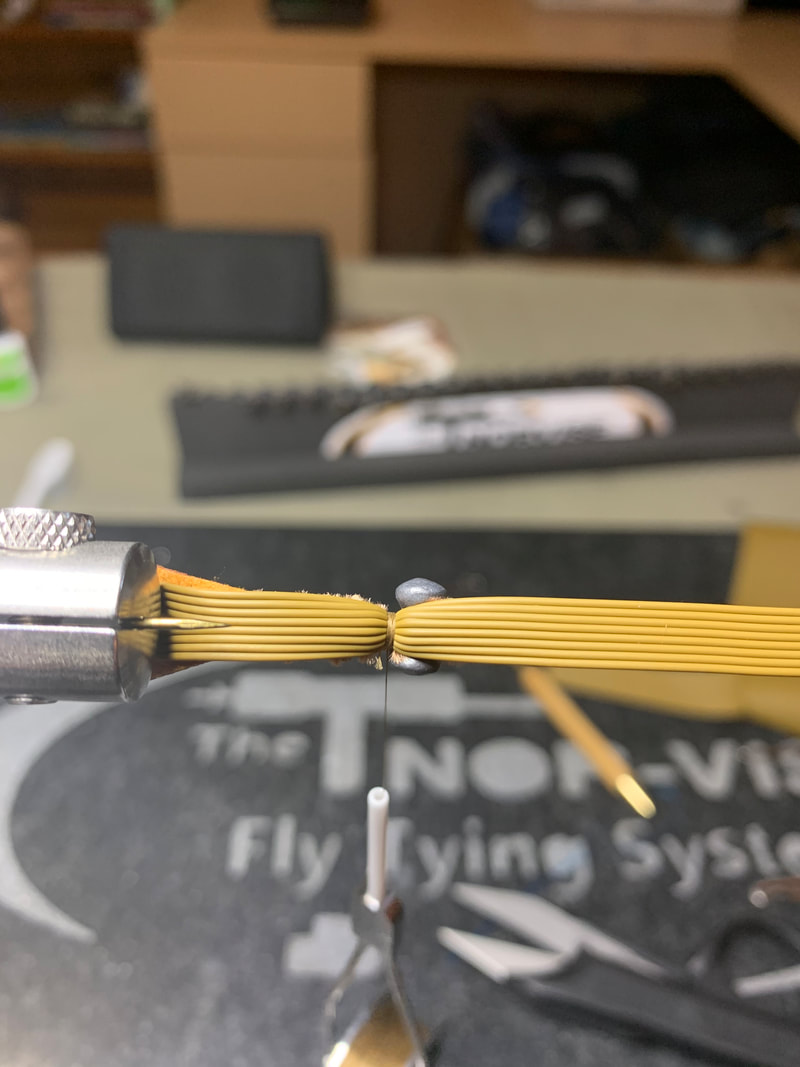
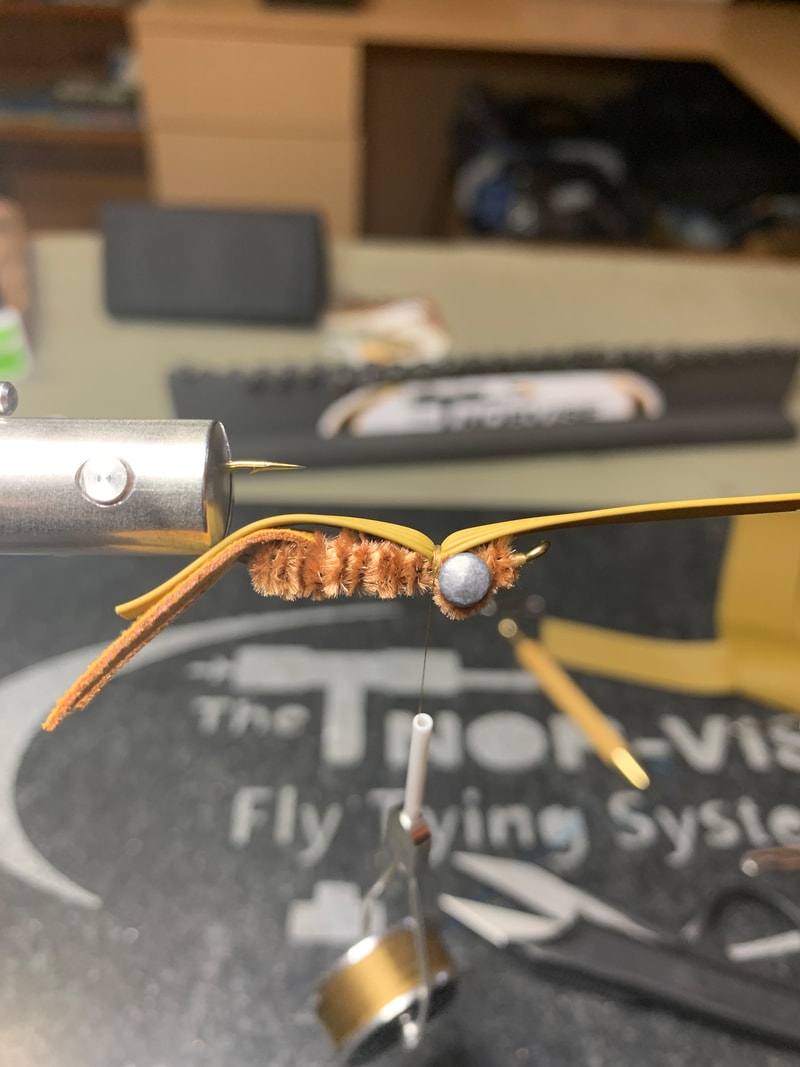
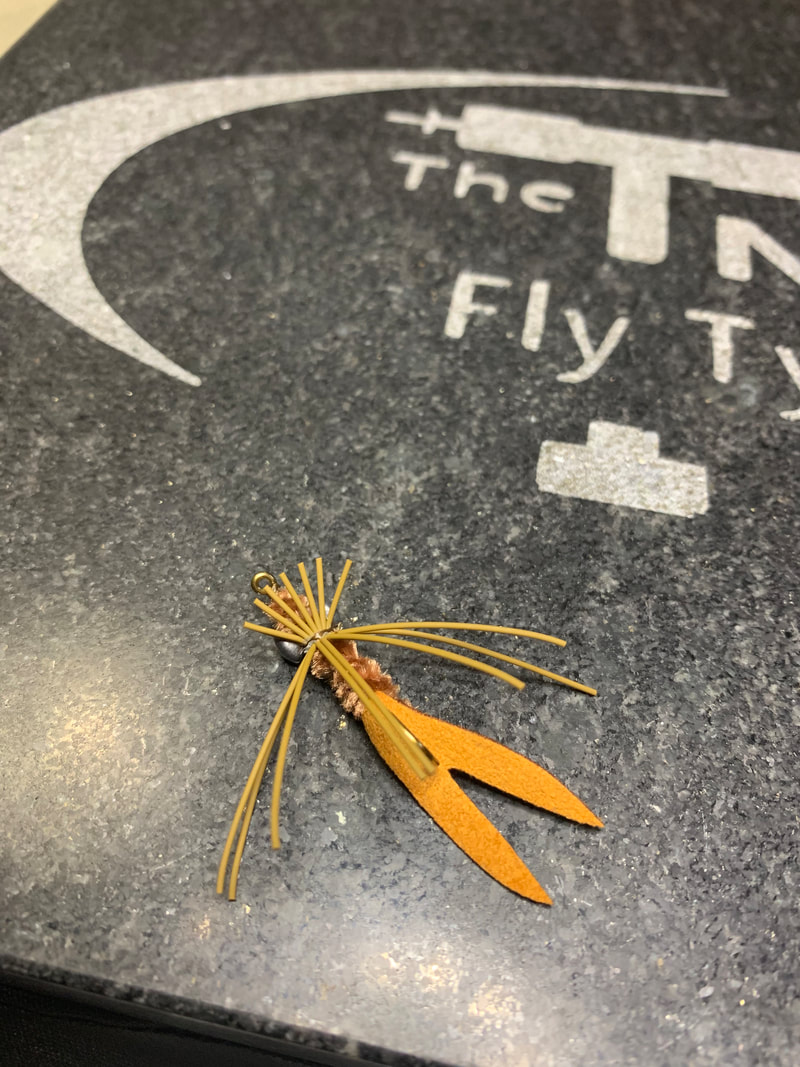
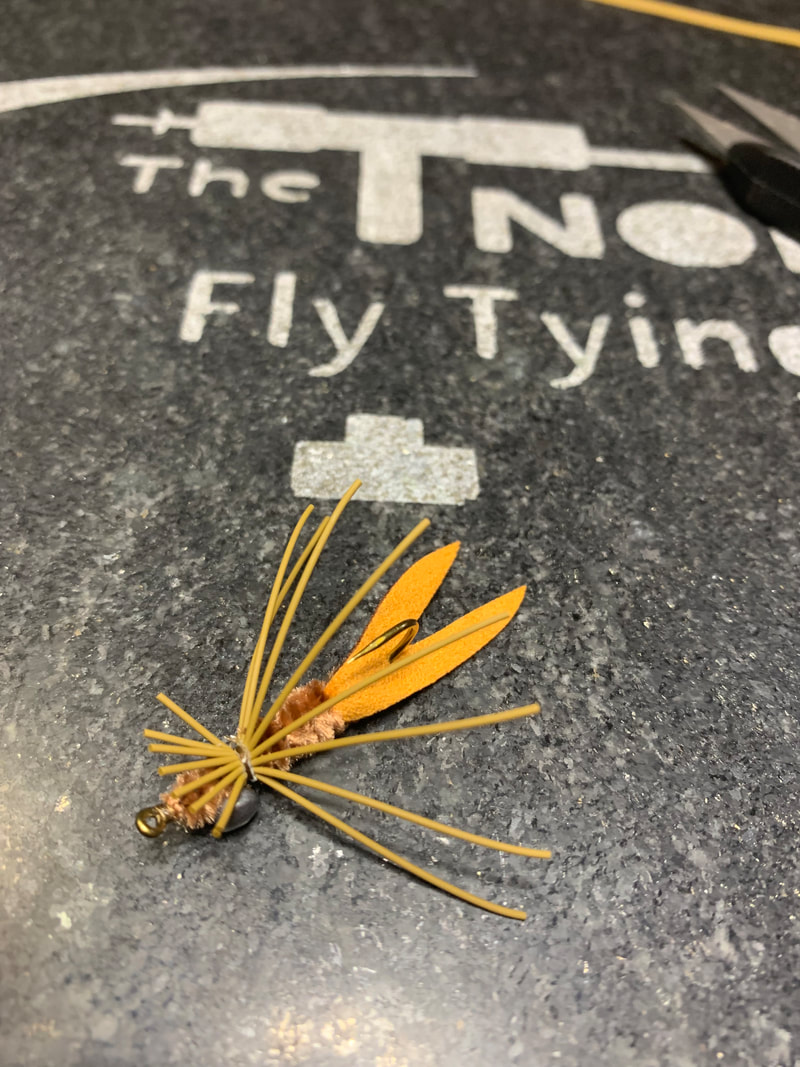
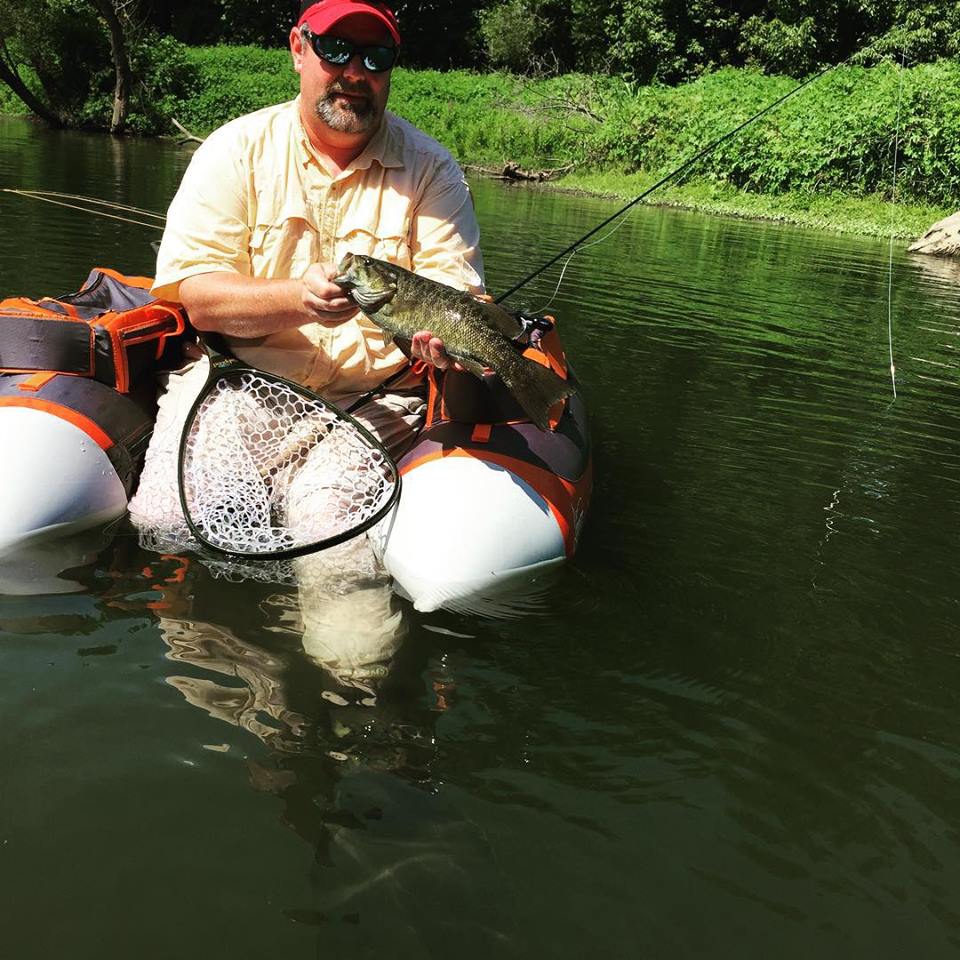
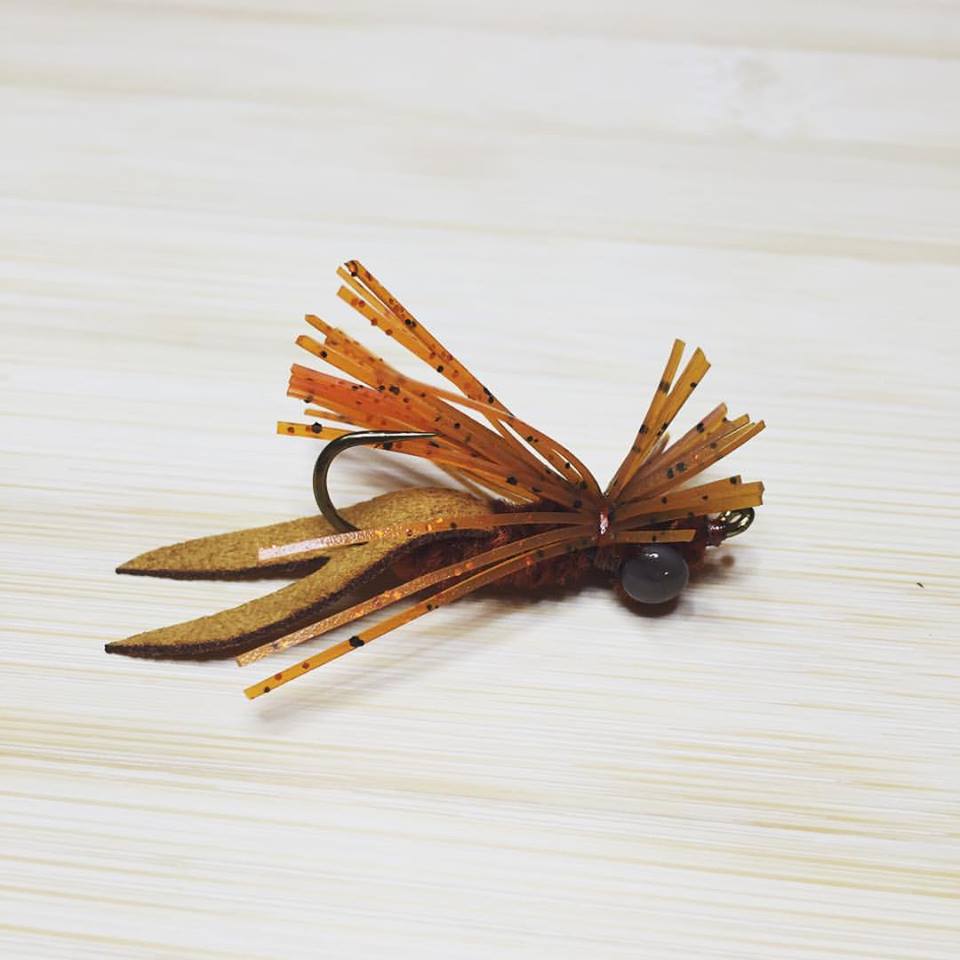
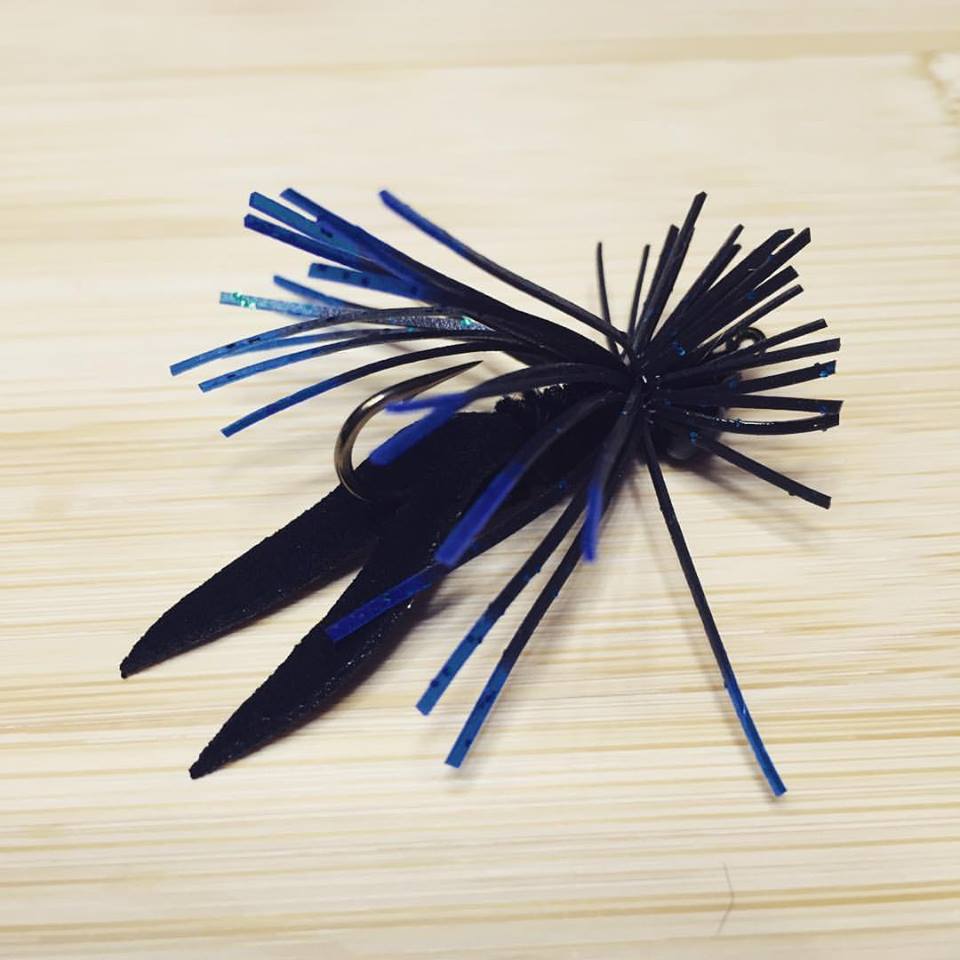
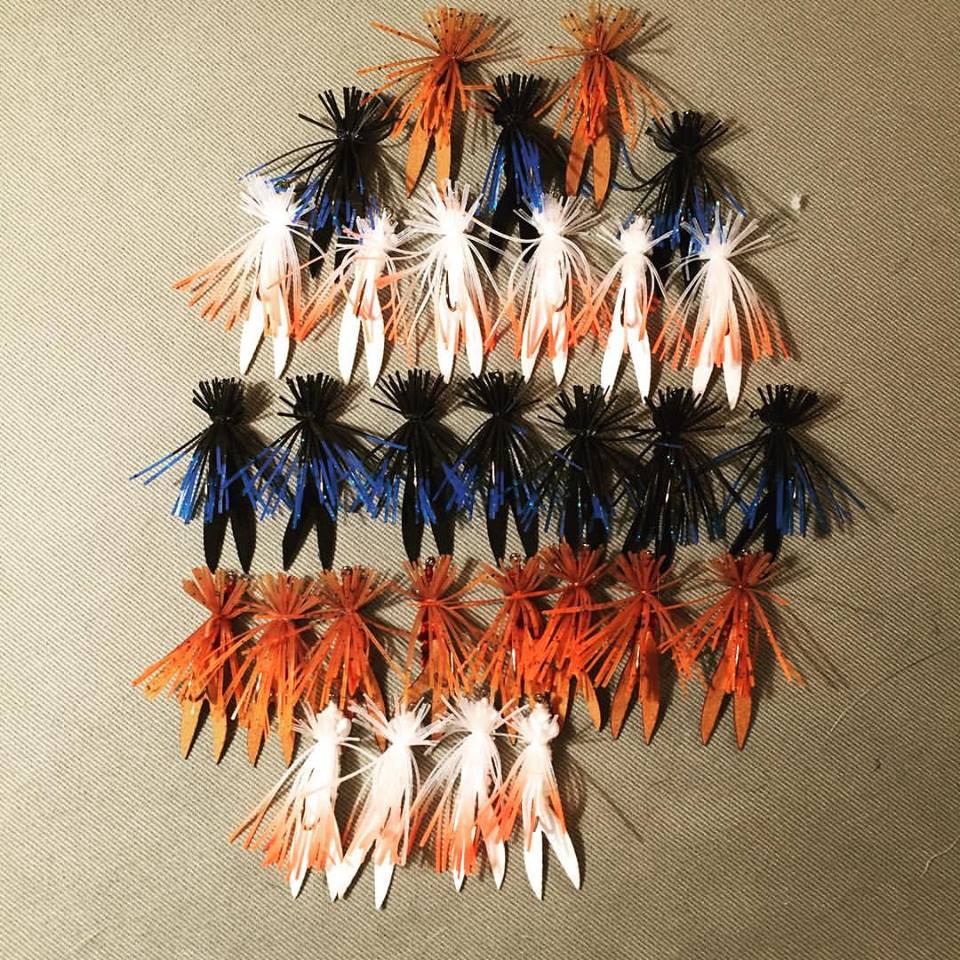
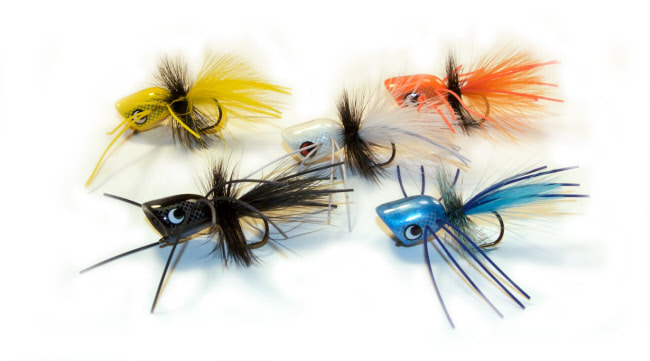
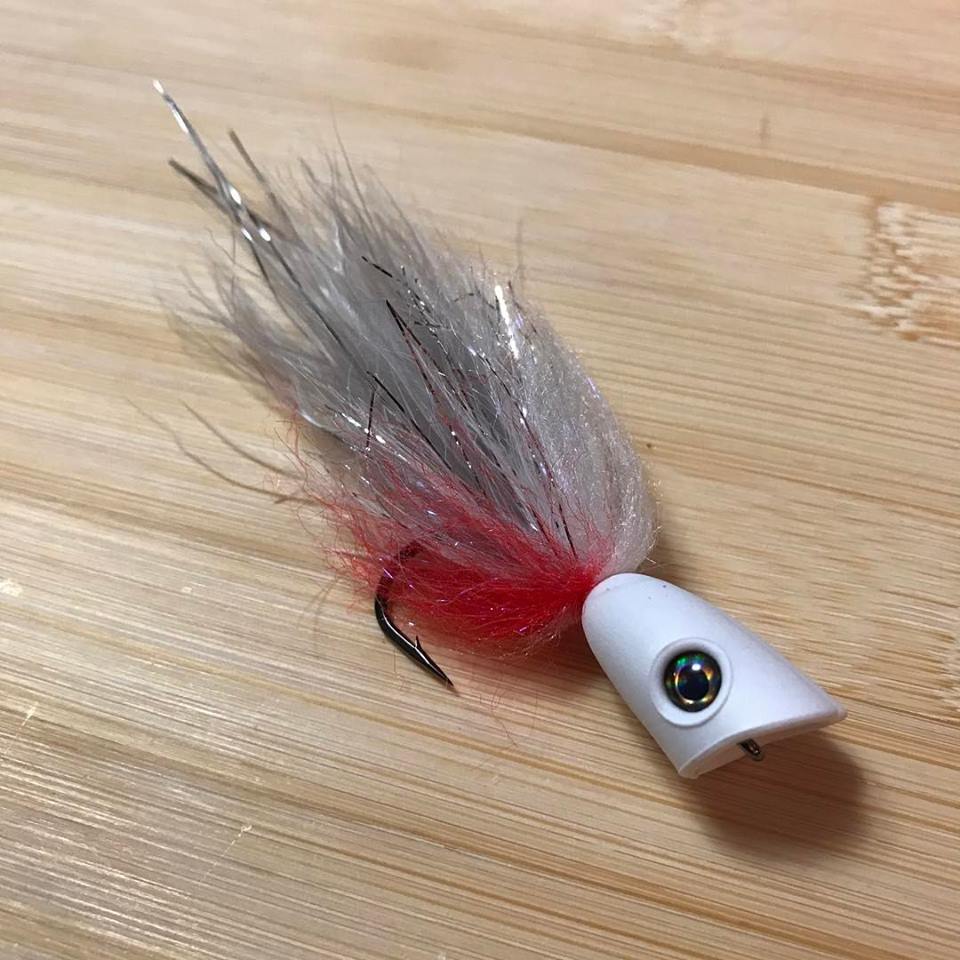
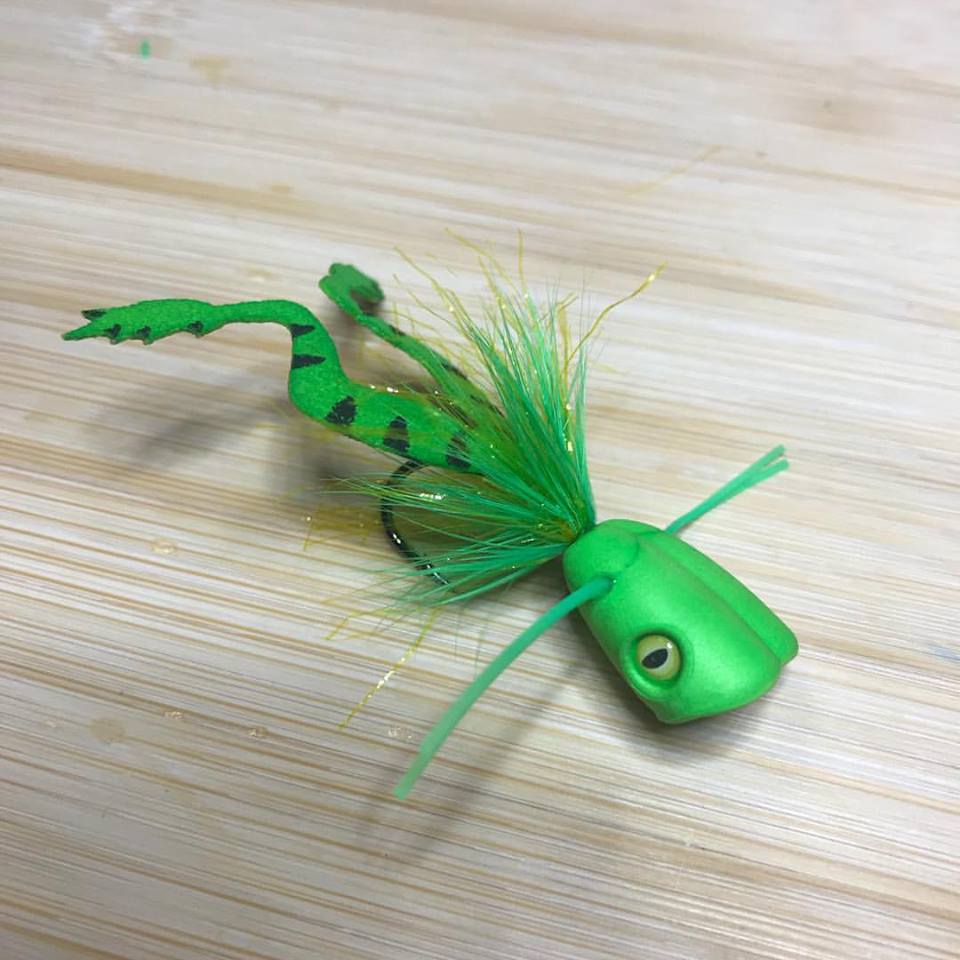
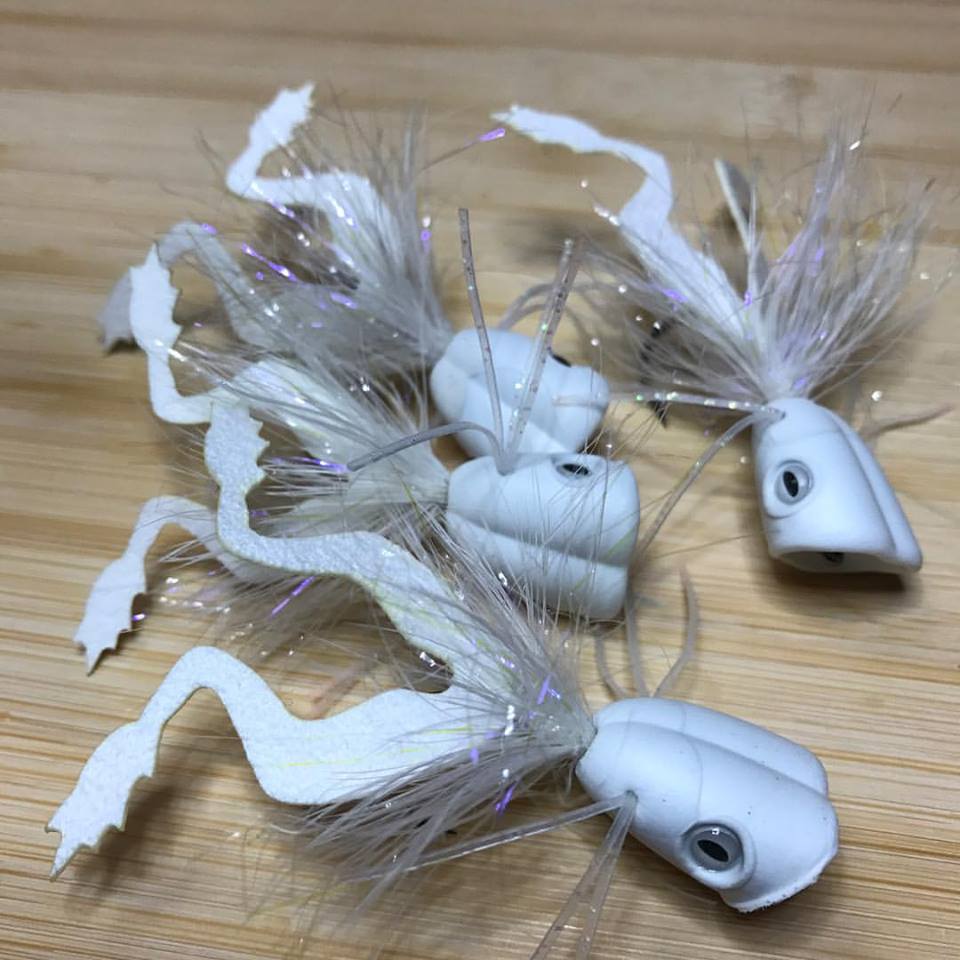
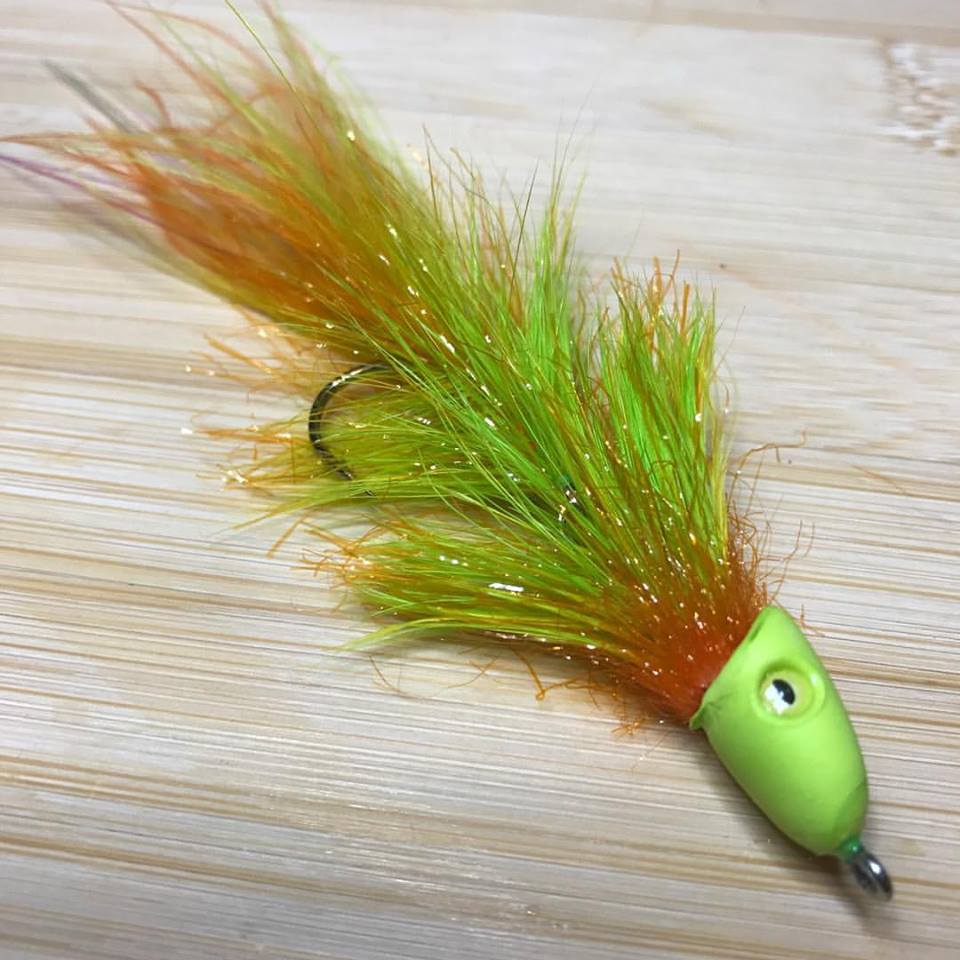
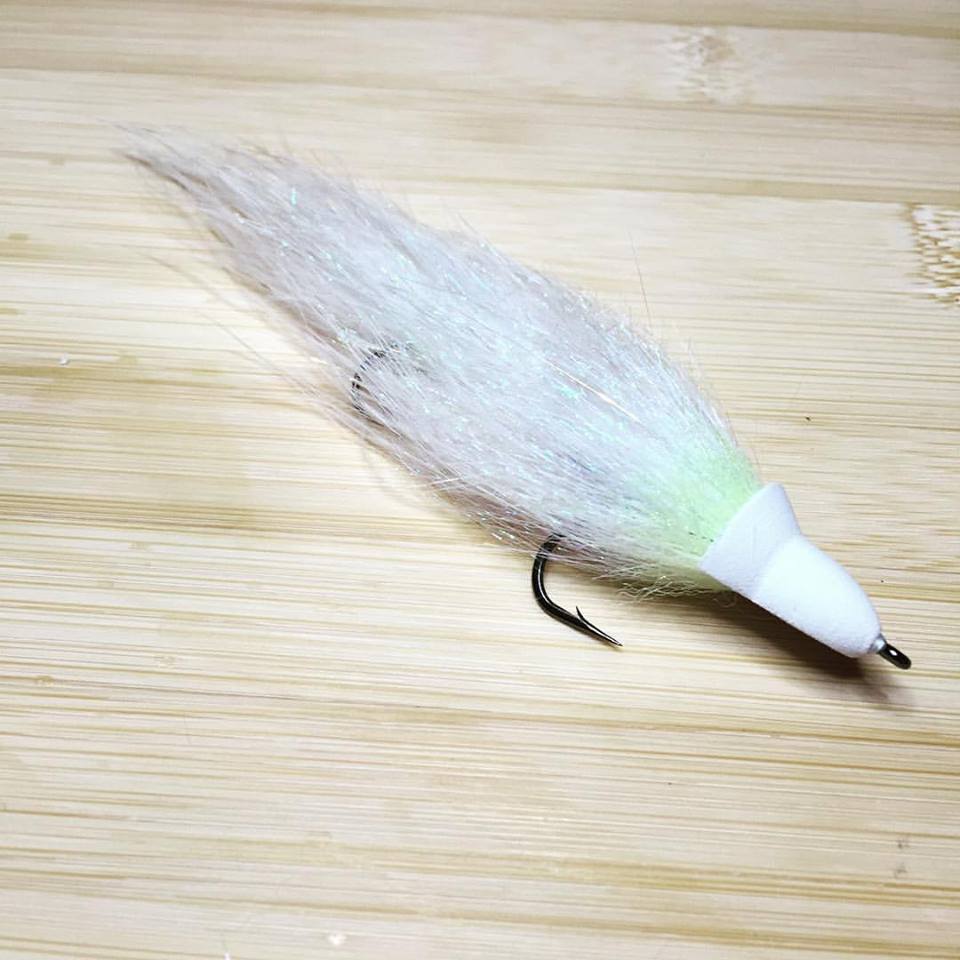
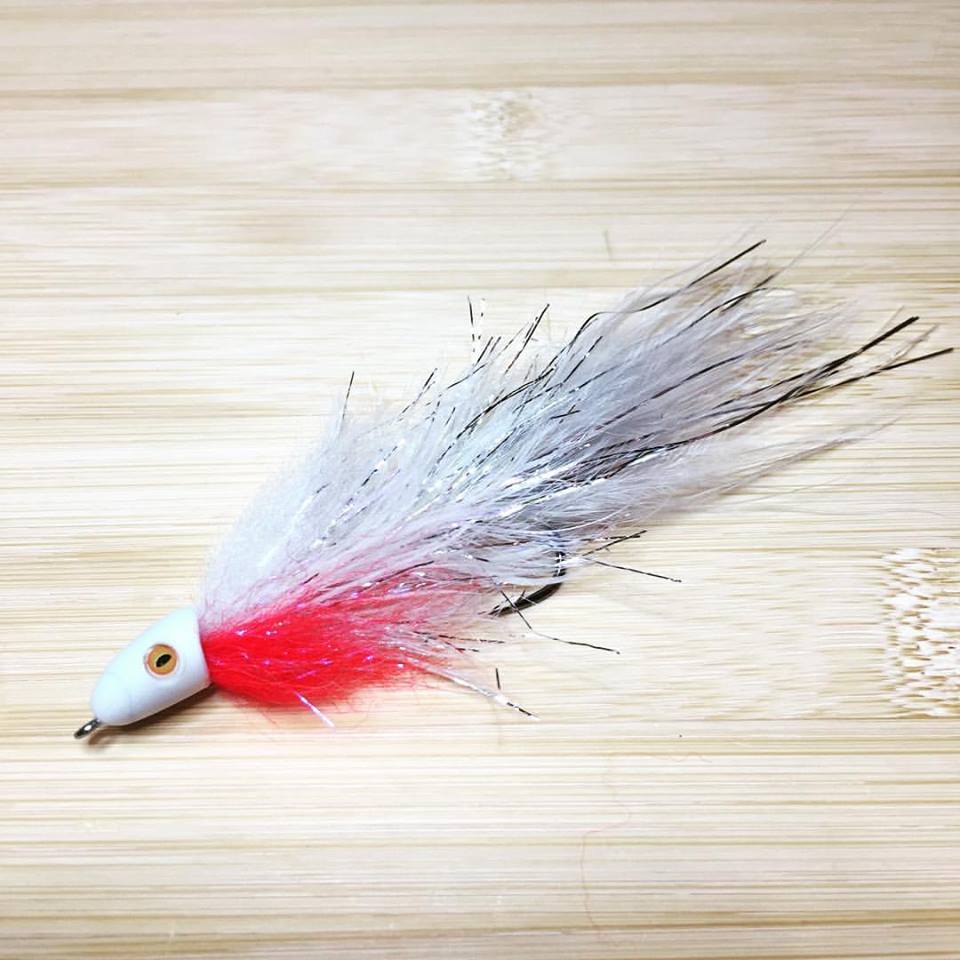
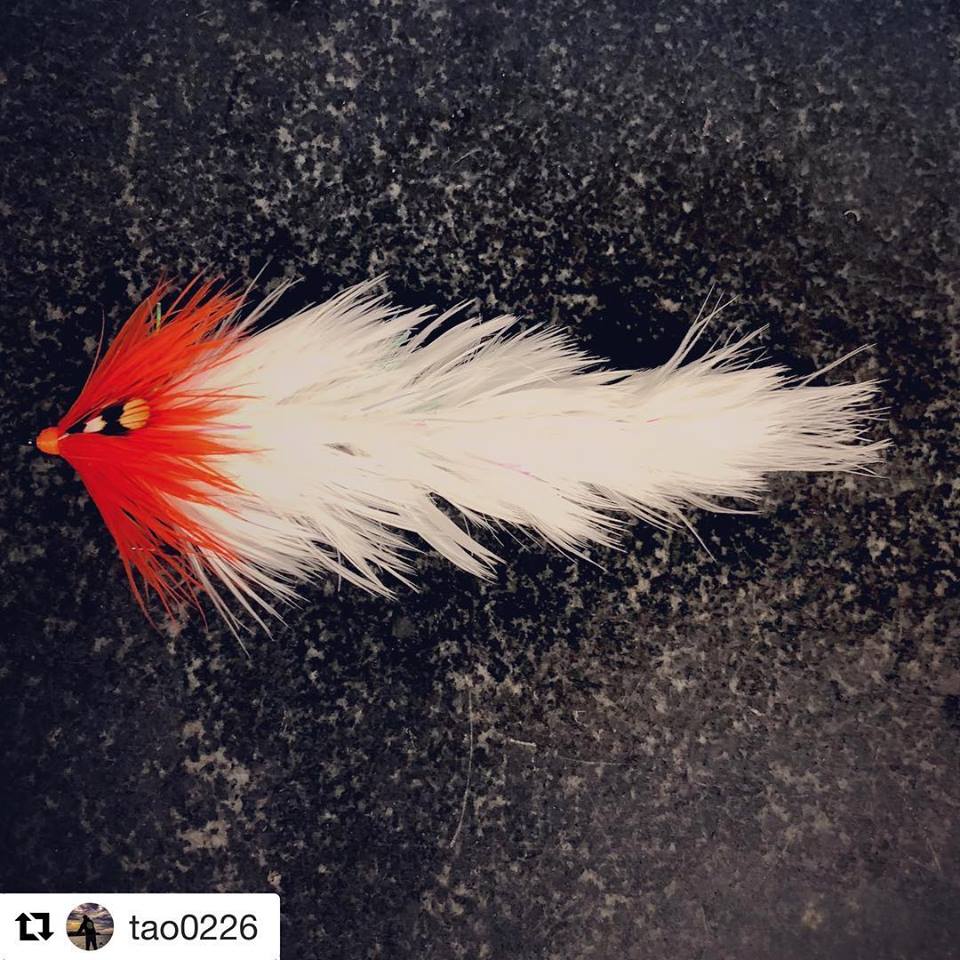
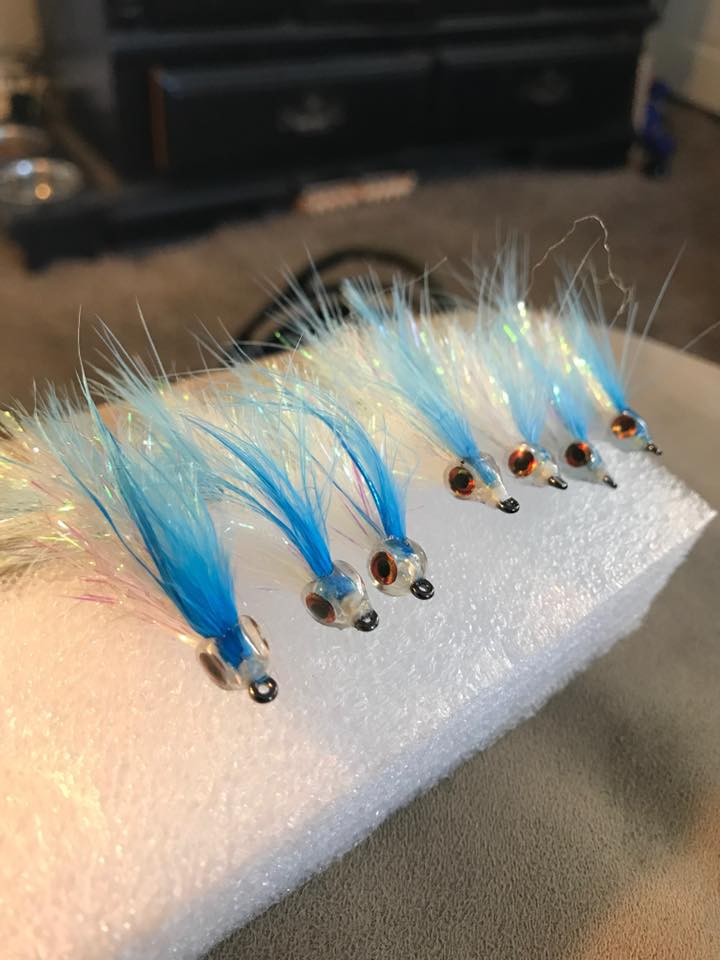
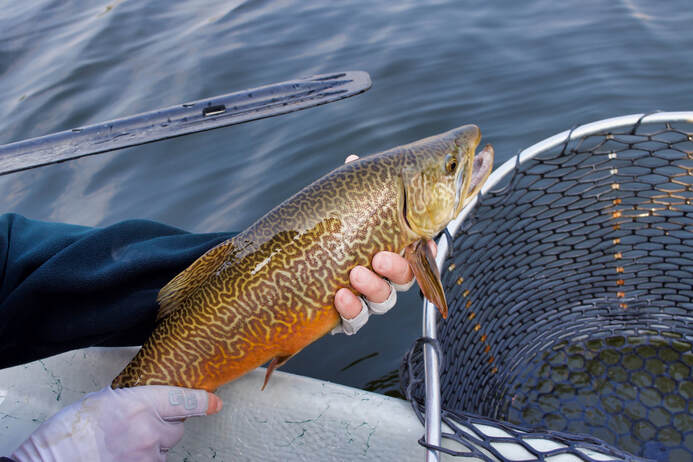
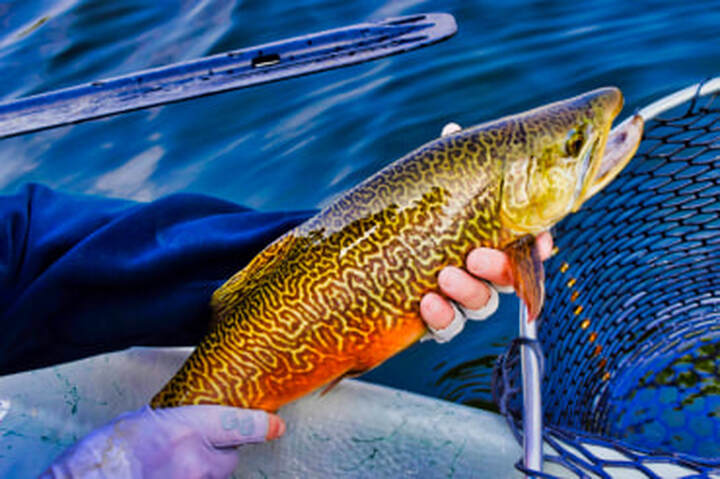
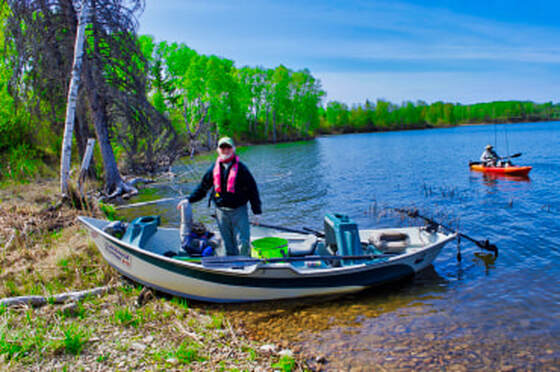
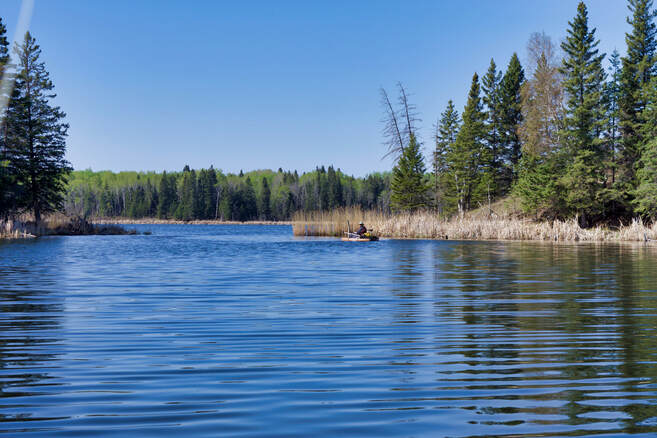
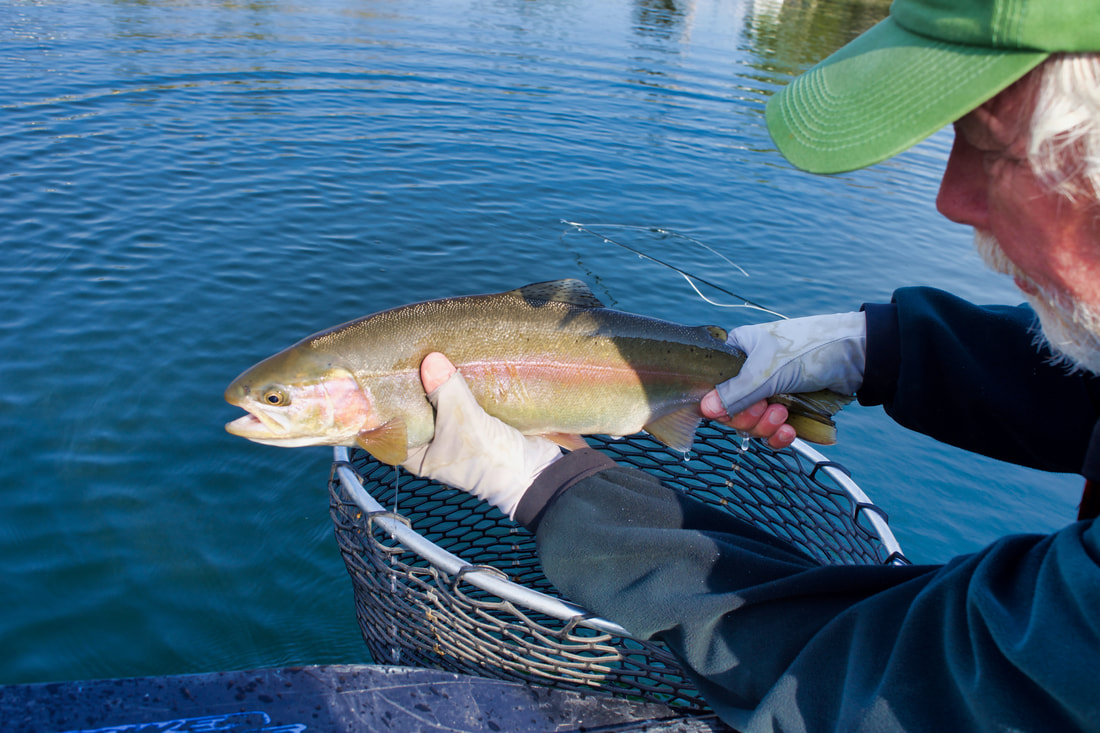
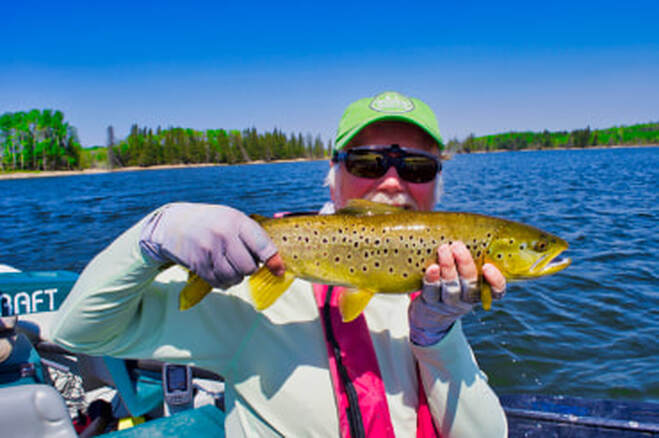
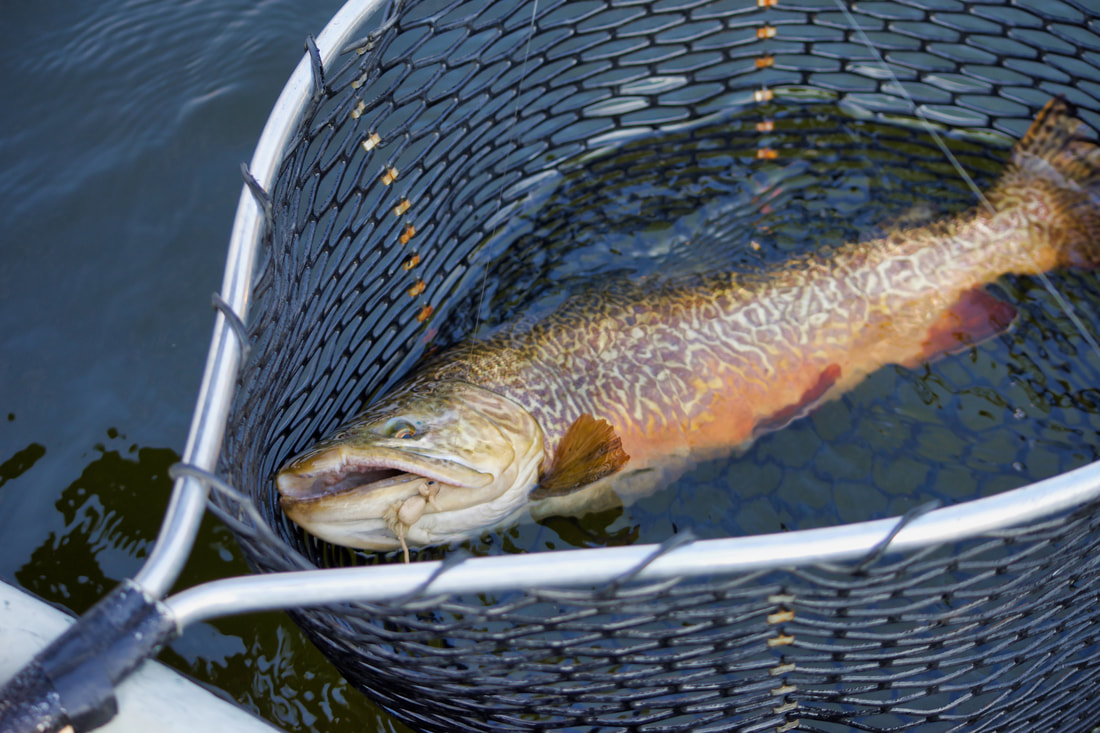
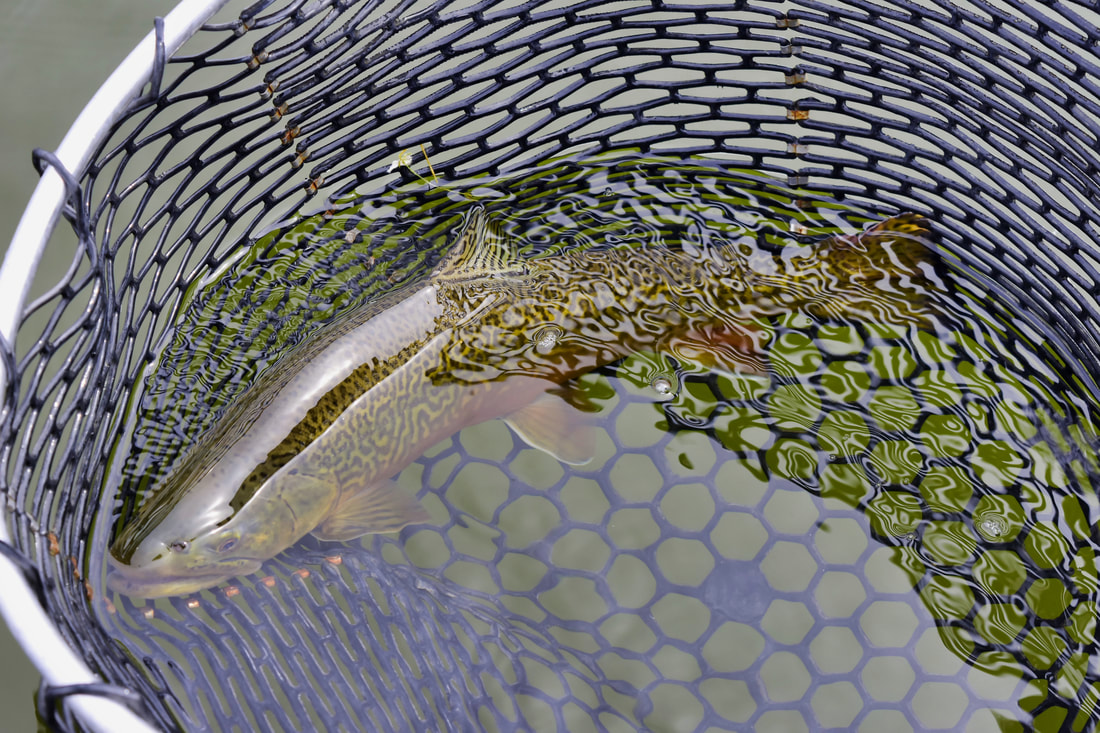
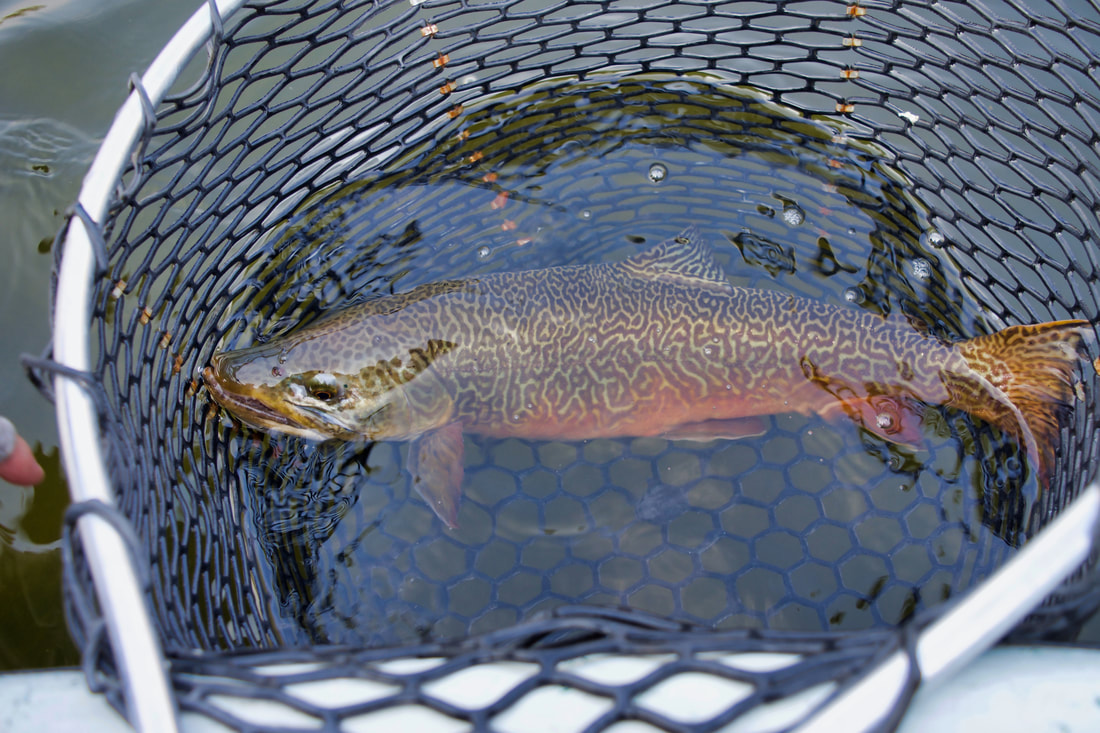
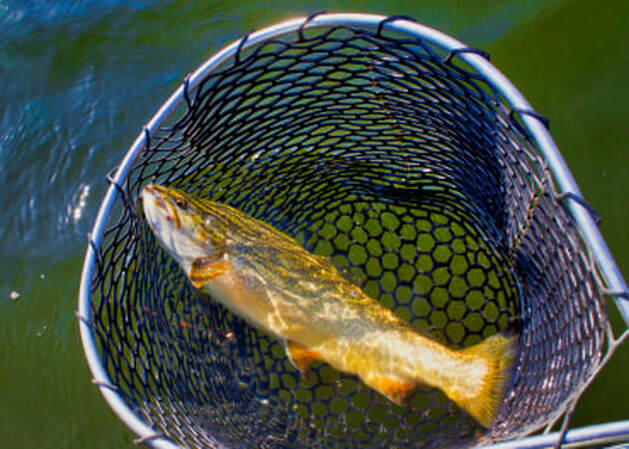
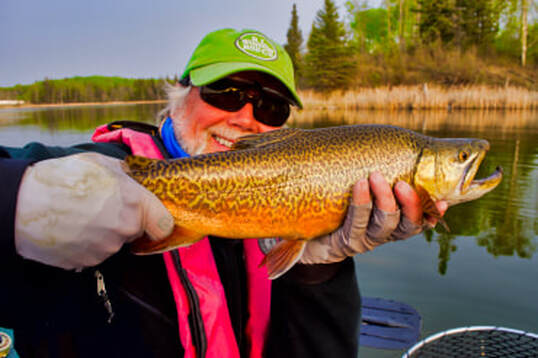
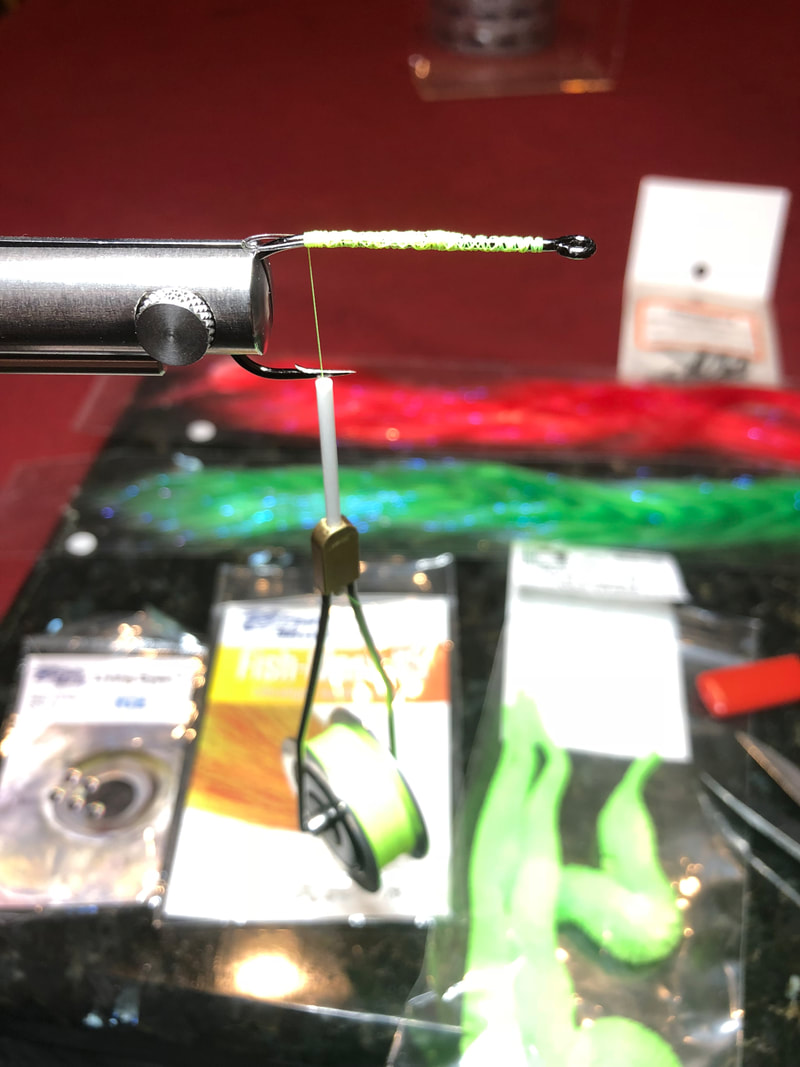
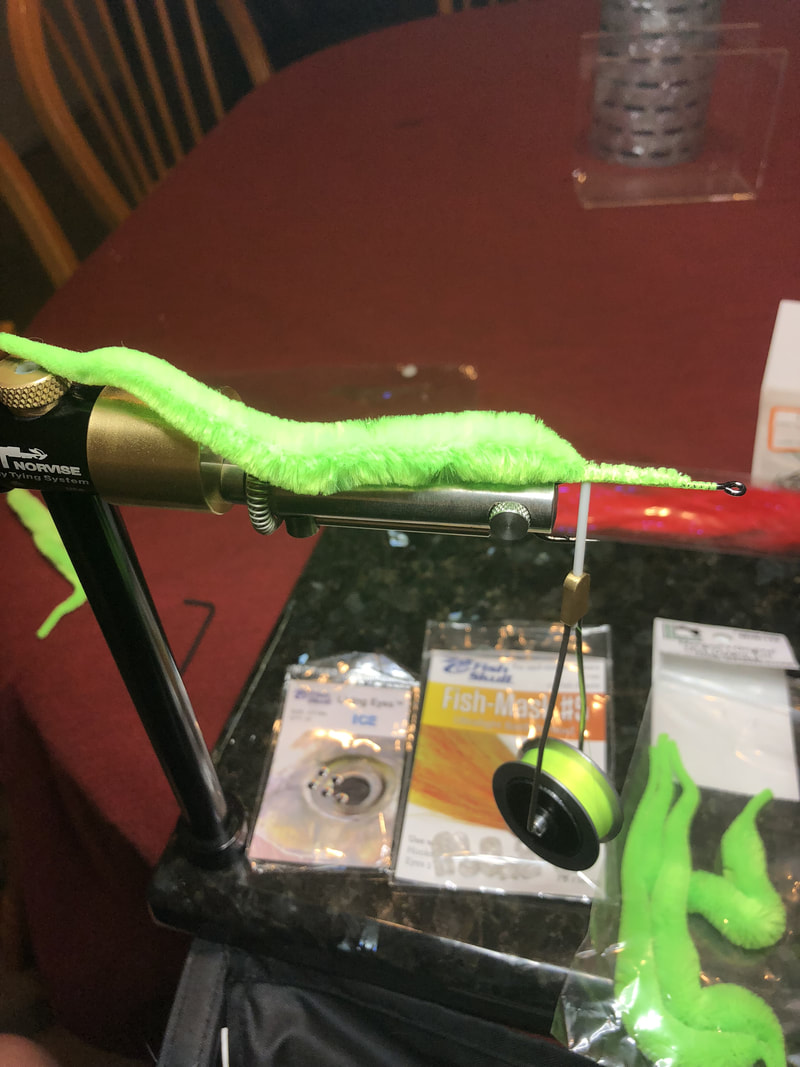
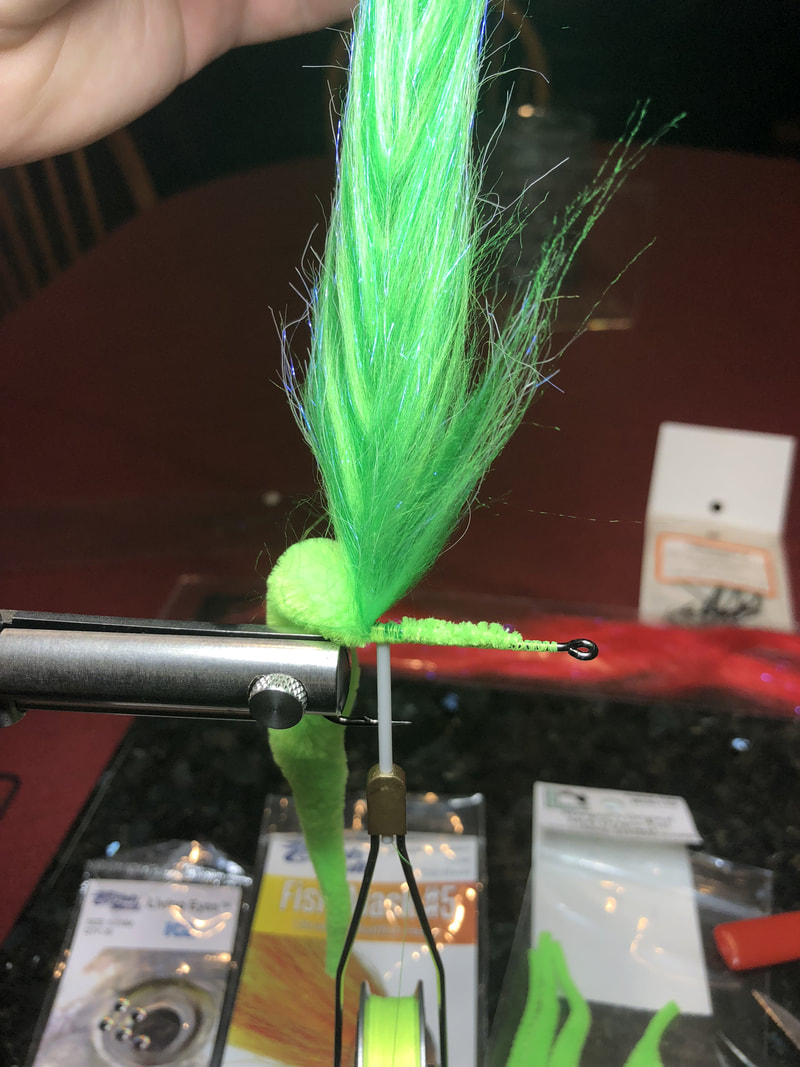
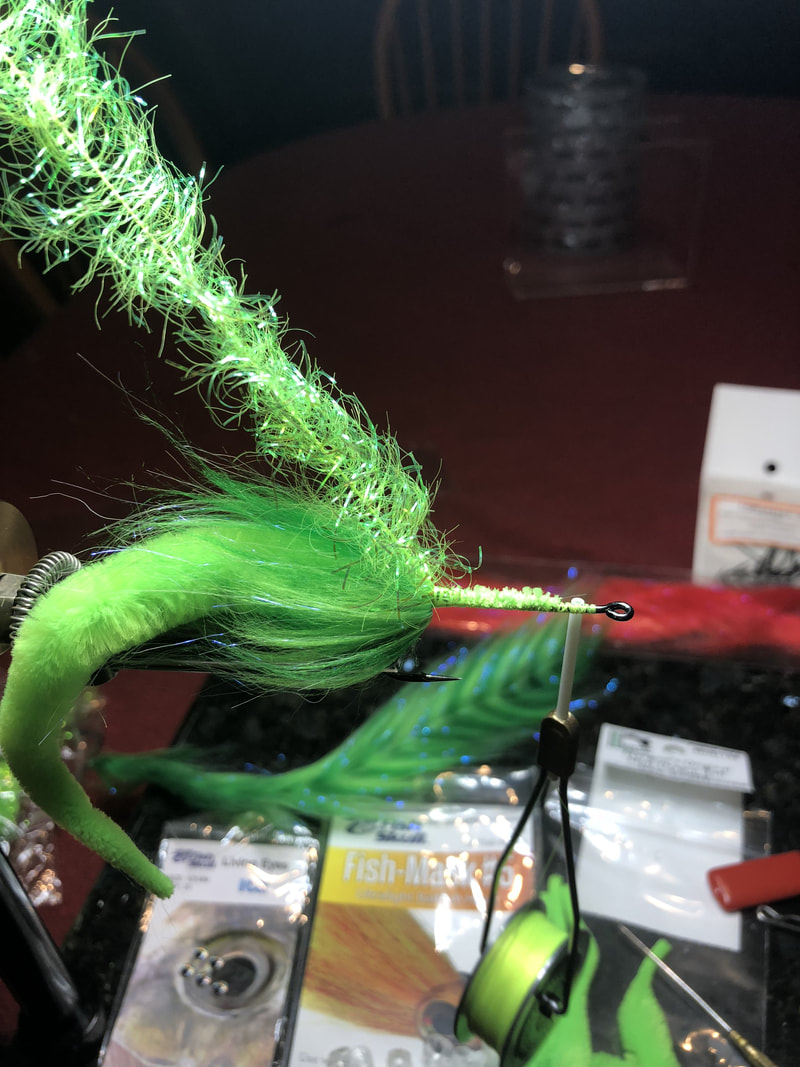
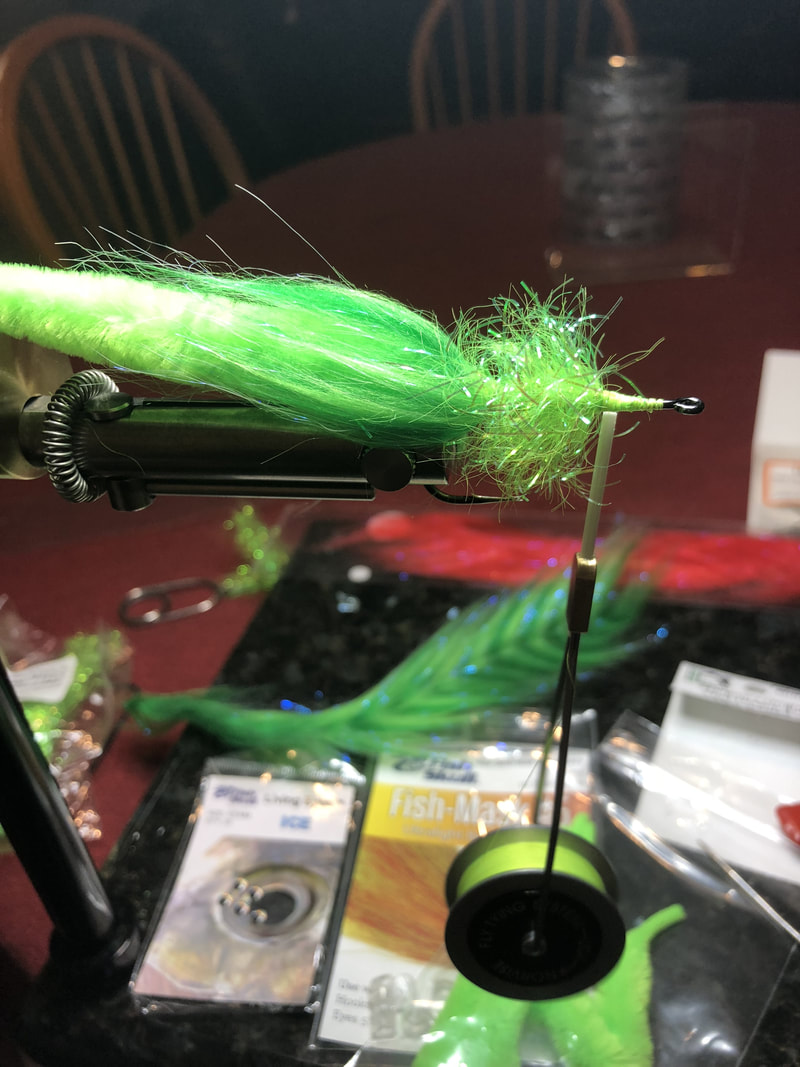
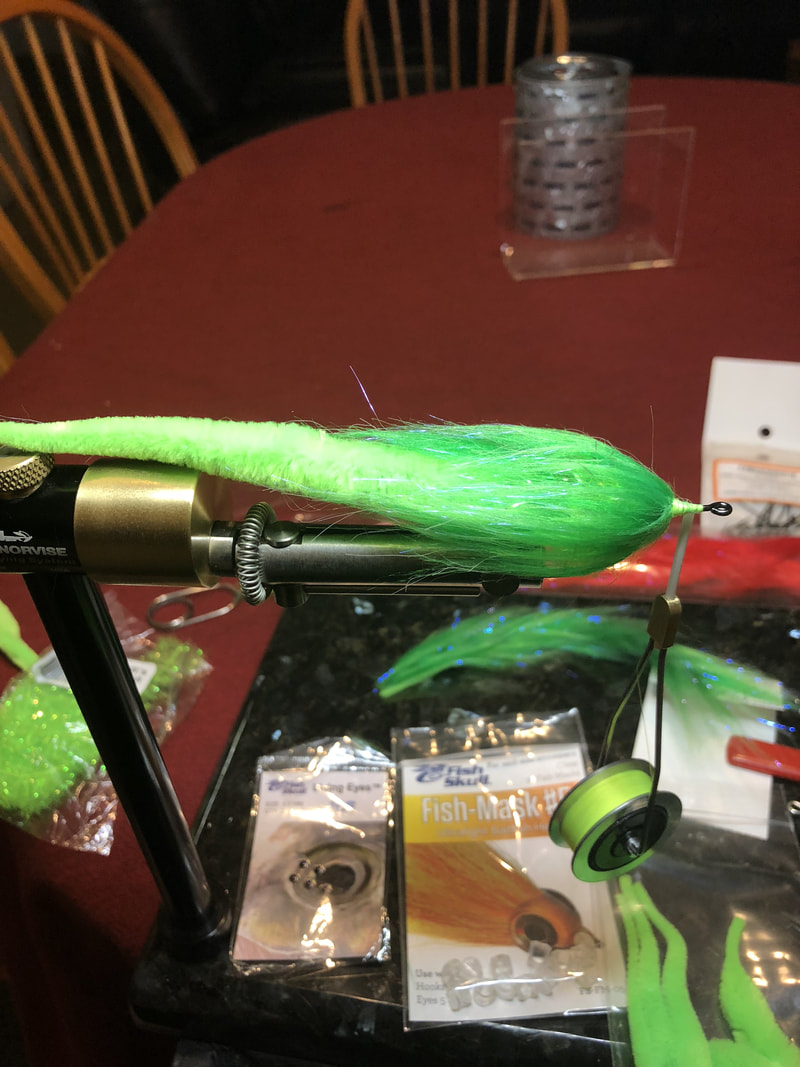
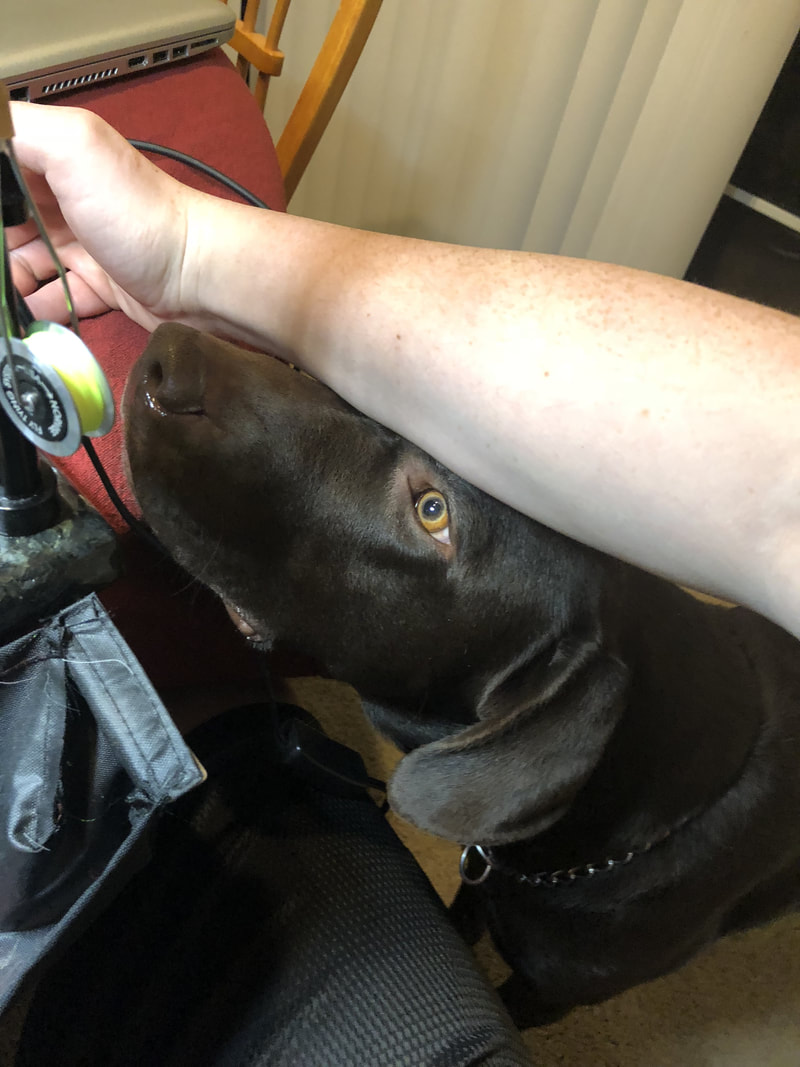
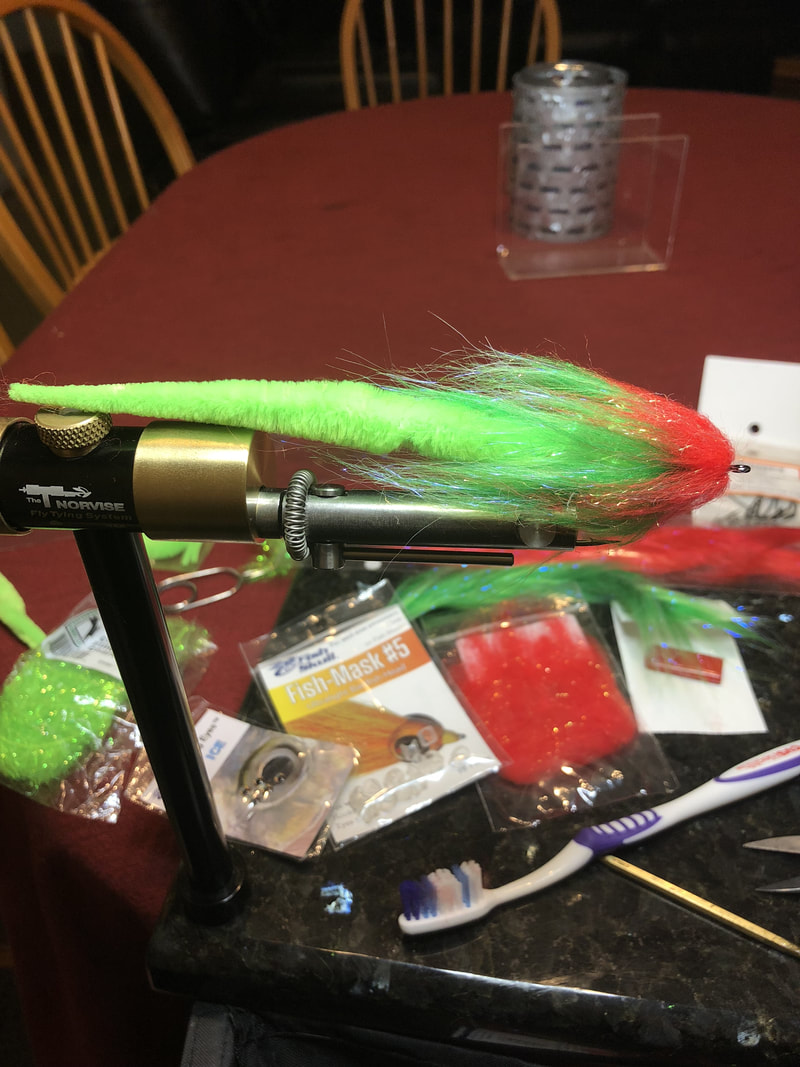
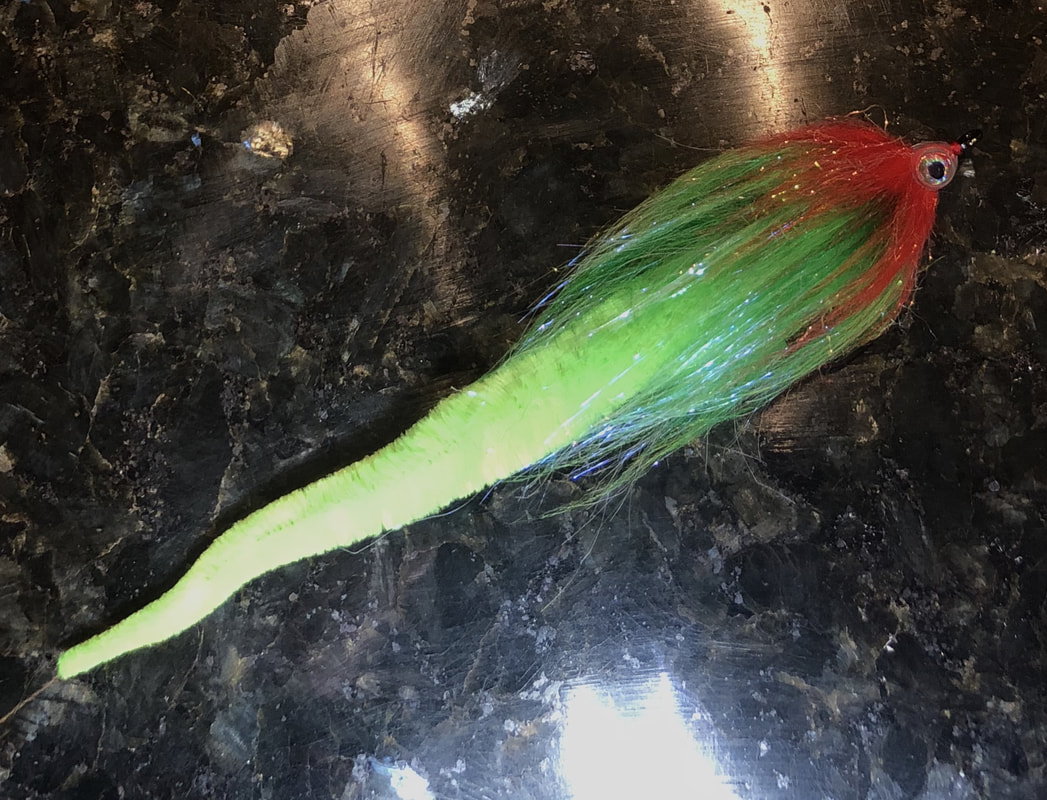
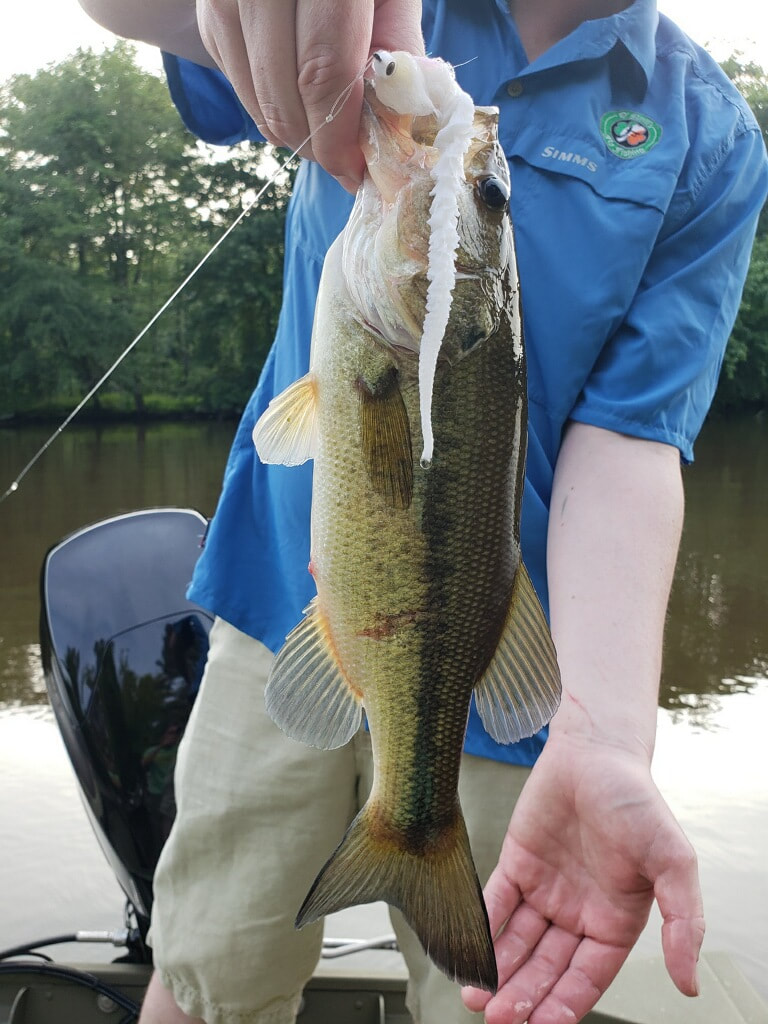
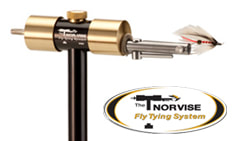
 RSS Feed
RSS Feed
